

Climb, Trek & Travel – 2021 Review
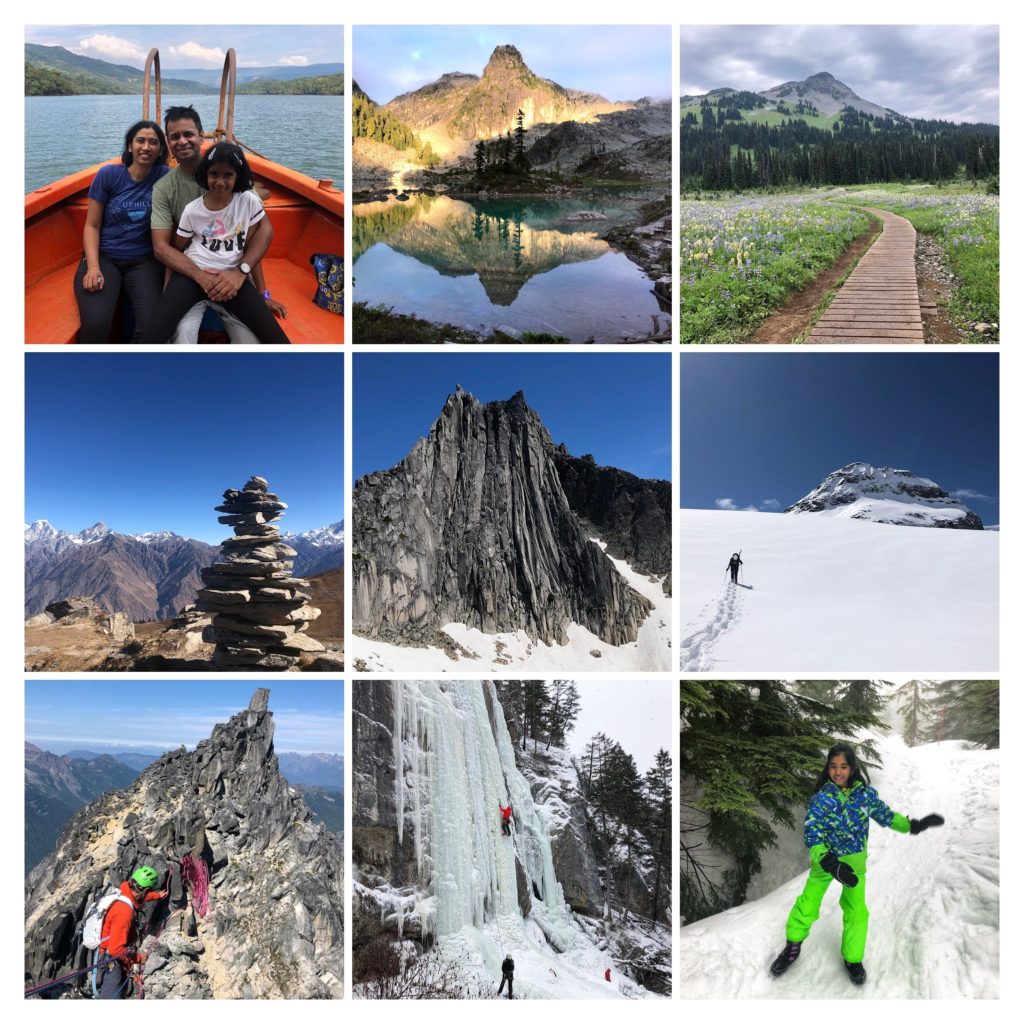
I wish you a Happy New Year!
Last year, when I did the 2020 review post , I had hoped that 2021 would see the end of the global pandemic. But COVID-19 is still with us, and with the new Omicron variant, 2022 is not looking much different than 2021. But just like last year, I am grateful that everyone in my family is healthy, and Kasturi and I have jobs to support our lifestyle.
Family Trips
Snowshoeing / hiking.
We made two snowshoeing trips in early 2021 – one to Black Mountain and another one to Hollyburn Mountain with Rohan and his family.
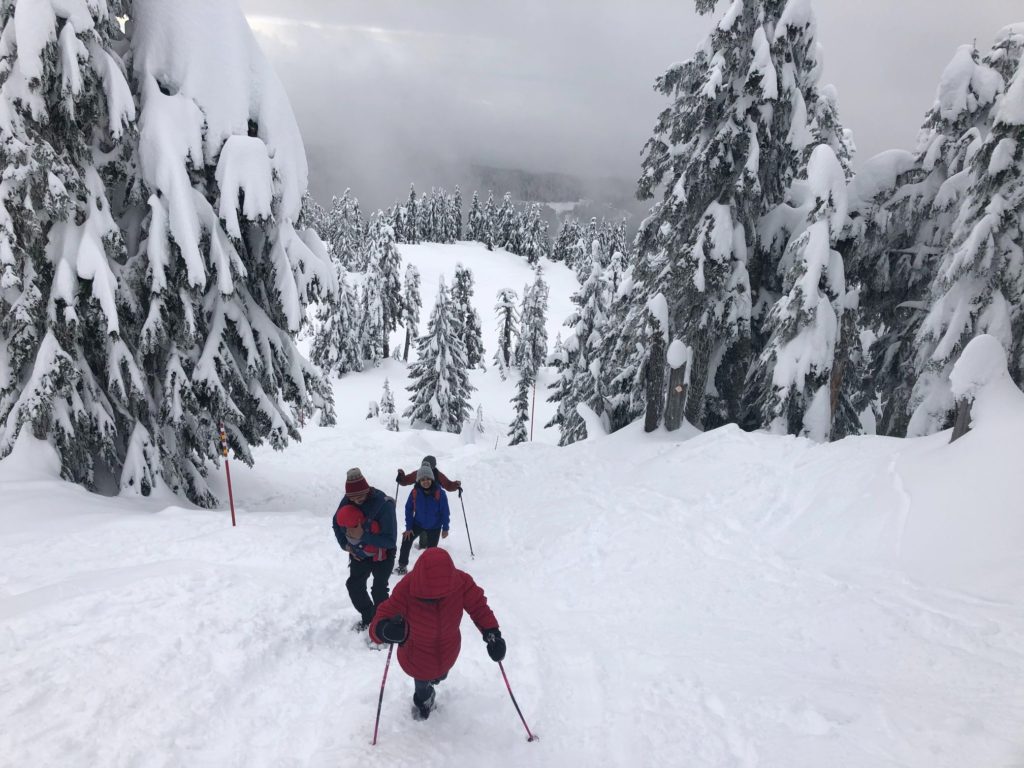
We had got snowshoes for Kavya, but after the Dog Mountain trip, she was more comfortable hiking in just her boots on packed snow. She used microspikes in some icy sections, but her snowboots worked pretty well for the most part. Even shorter trips took more effort, but Kavya got more comfortable with these winter hikes.
As spring approached, we started doing some longer hikes. Given the elevation gain, terrain and cold, the Lindeman and Greendrop hike was probably the toughest. But, having her friends Chloe and Kiera on the hike helped Kavya keep going.
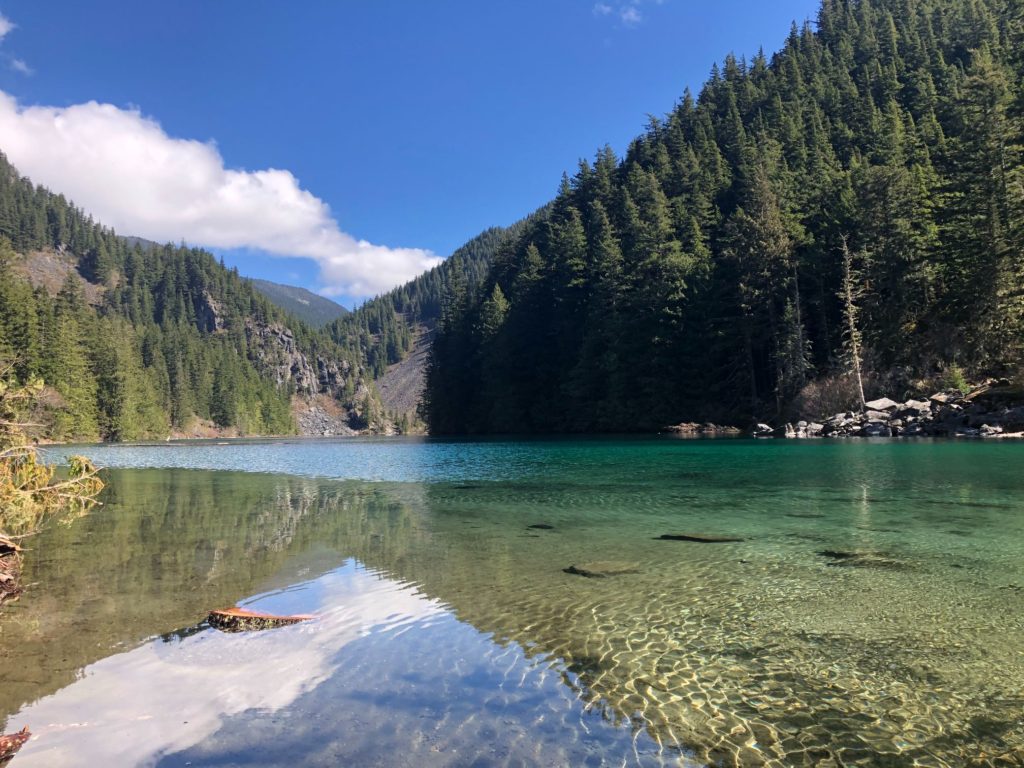
Munro Lake hike was another long hike with close to 900 m elevation gain. Unfortunately, at one point, we lost the trail. But finding our way back using GAIA maps was an “adventure” for Kavya and her friend Riya and, as per them, was the best part of the day.
Backcountry Camping
The most stressful part of backcountry camping is trying to book the campsites. Earlier in the year, I had tried to reserve sites for three families on Berg Lake Trail. I was logged in, ready to go when the bookings opened, but I didn’t find any availability. It was probably the most frustrating experience.
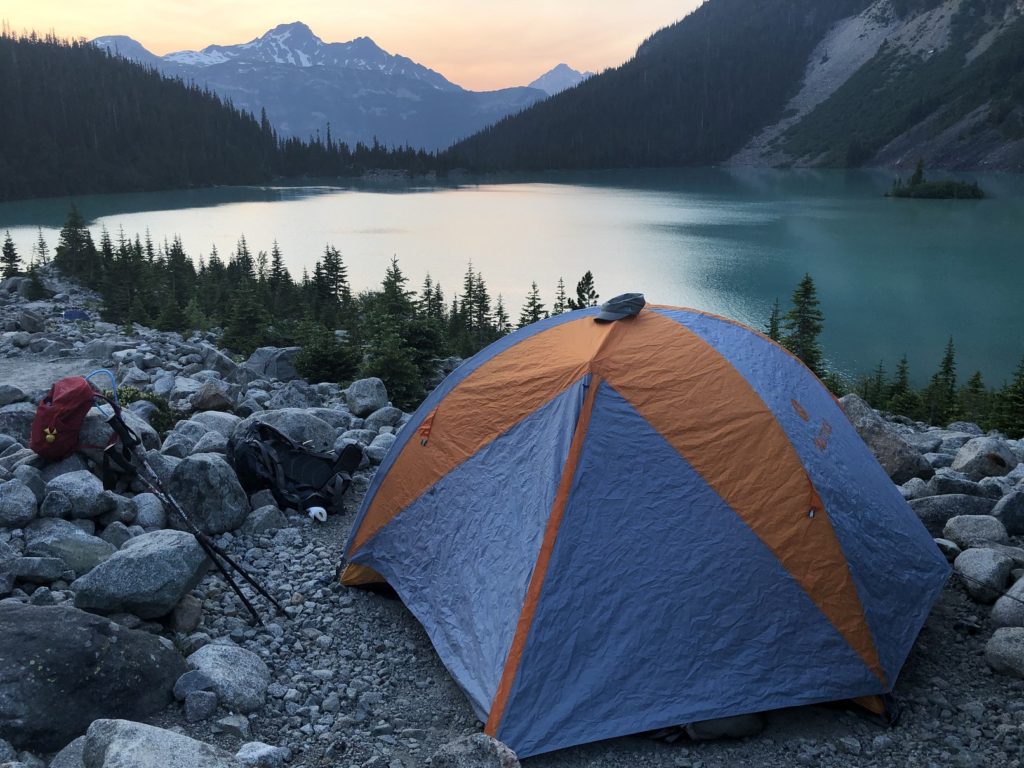
Unfortunately, due to flooding, Berg Lake Trail was closed for the summer season in 2021. We ended up making some local backcountry camping trips and had a great time. Three-day trips to Upper Joffre Lake and Garibaldi Lake offered incredible views and made for some fantastic family time.
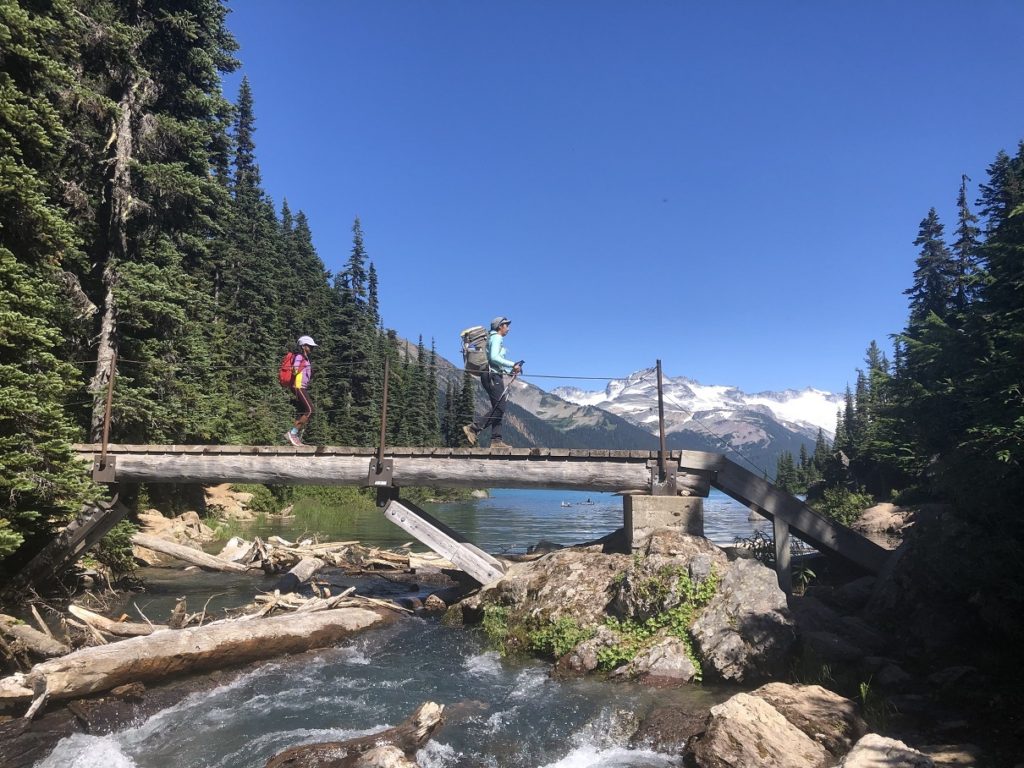
In 2021, we also did our first family backcountry hut stay at BCMC’s Watersprite Lake Hut . Gaurav and his family joined us, and it was a fun three-day trip. Watersprite Lake is a beautiful alpine lake, but I think the hut made this trip special.
Personal Trips
Ice climbing.
I did not pursue ice climbing actively and just did one trip to Marble Canyon in February. Slawomir, Beata and I made a day trip that involved 640 km of driving and 110 m of climbing. That’s ice climbing in BC.
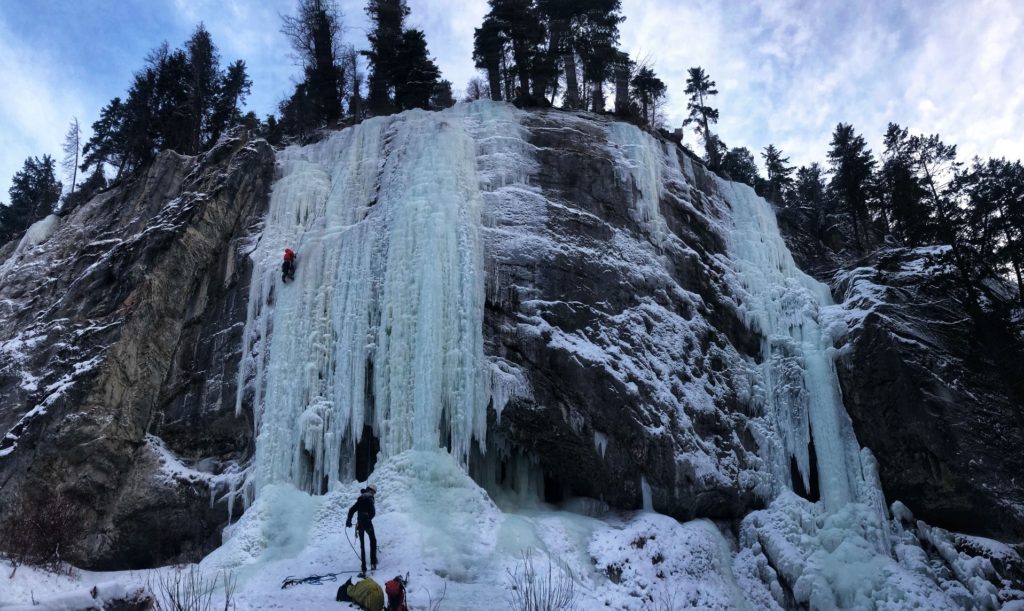
Later, Rohan told me about his week-long ice climbing course in the Rockies, and I have now signed up for a similar program in January 2022. I hope to get my basics nailed down and get a taste of ice climbing in the Canadian Rockies.
Snowshoeing / Winter-Spring Hiking
In 2021, I explored more of BC’s backcountry in winter and spring on snowshoes than I had done in the previous years. I first started off the year with AST-1 course with Canada West Mountain School.
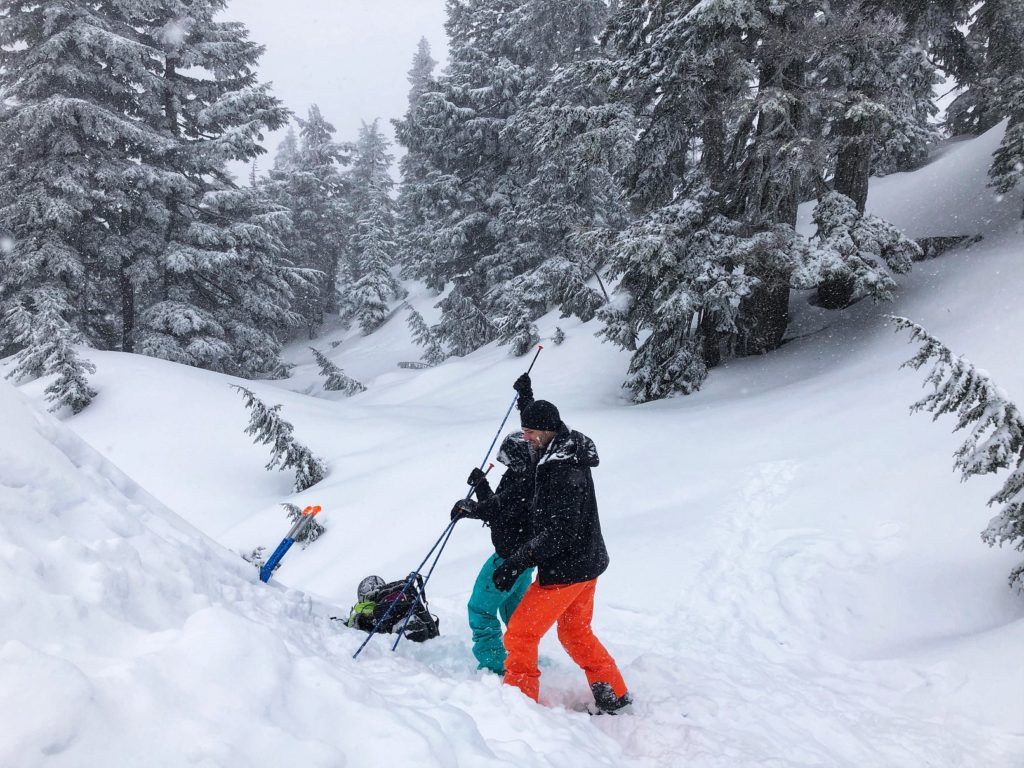
With Slawomir, I made a couple of trips to Garibaldi Provincial Park. The first trip was to Garibaldi Lake .
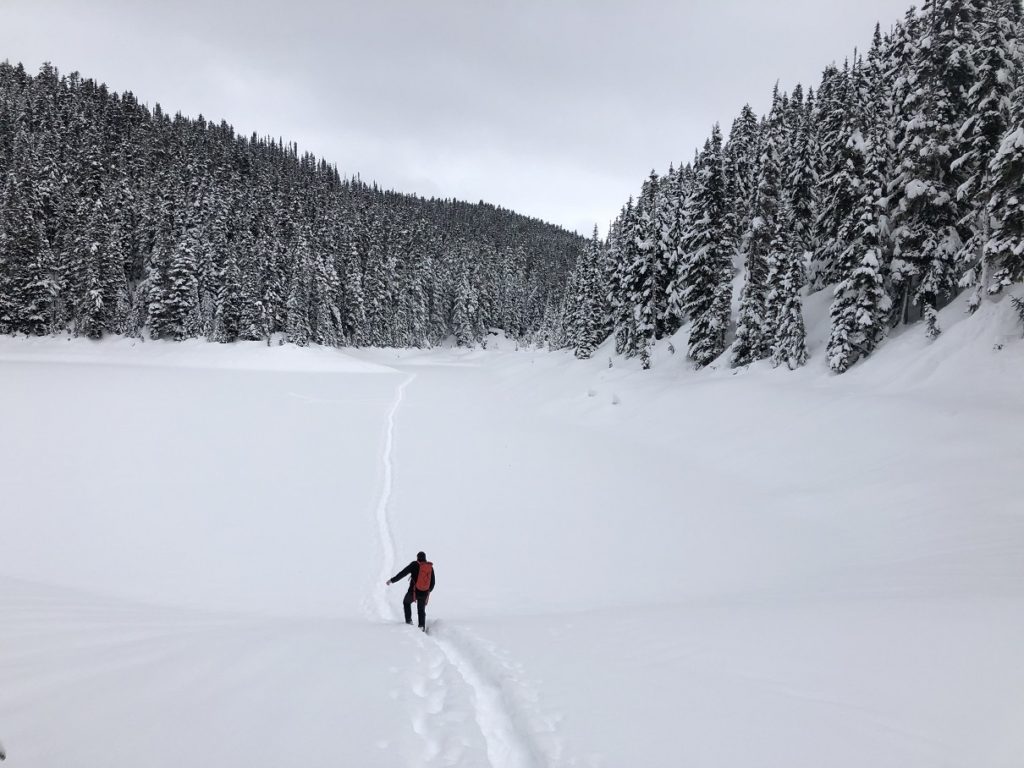
Later in the season, we planned to go up to Panorama Ridge. But, given two feet of fresh snow, we went to Taylor Meadows and Garibaldi Lake . With snowshoes, we were breaking the trail at a snail’s pace. Slawomir said it would have been much easier on skis.
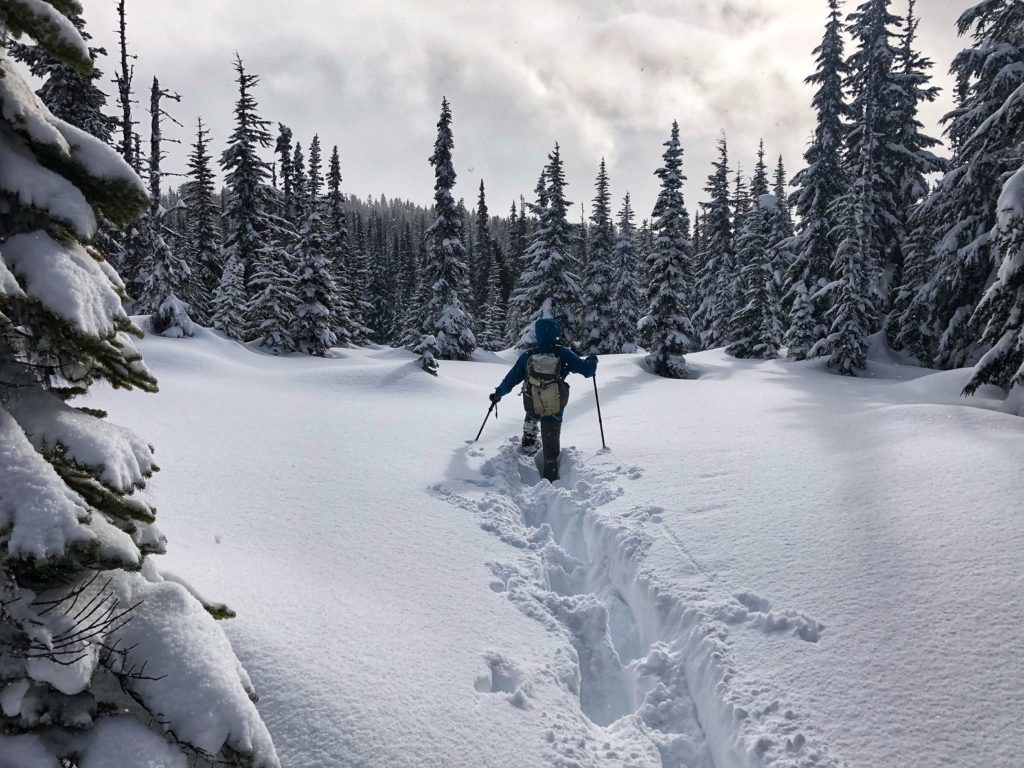
The final trip to Garibaldi Provincial Park was to Parkhurst Mountain with Slawomir and Beata. It was also my longest trip of the season, with about 22 km and 2200 m of elevation gain. Here again, I envied the skiers.
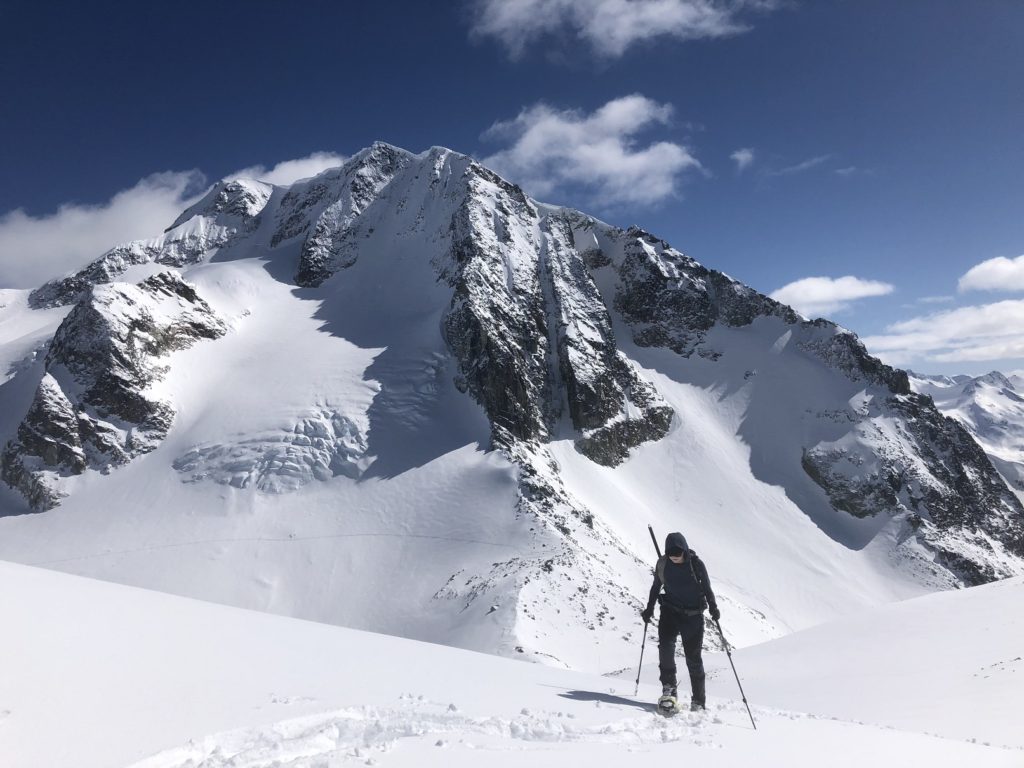
Scott and I made some local trips to Mount Seymour and Mount Strachan . It was not my first winter trip to Mount Seymour, but traversing below the Tim Jones Peak to go to Mount Seymour was quite an experience.
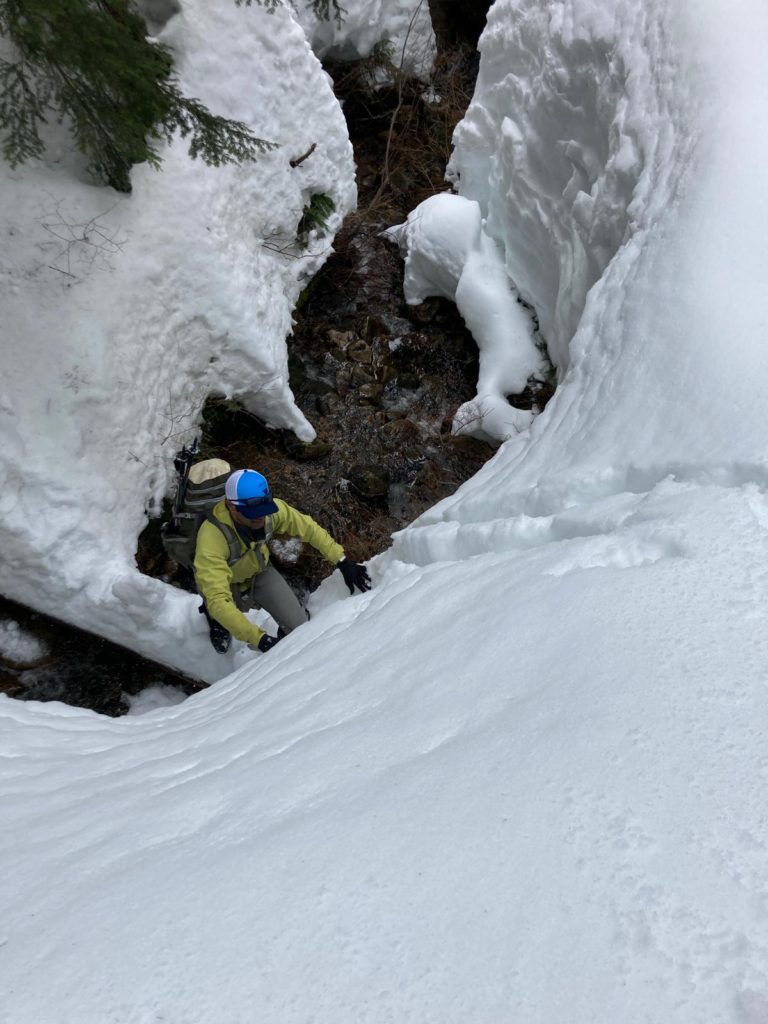
On Mount Strachan, hiking up Christmas Gully was fun, but the best part was figuring out our way across streams on our way down. Thankfully Scott knew what he was doing and got us safely back down.
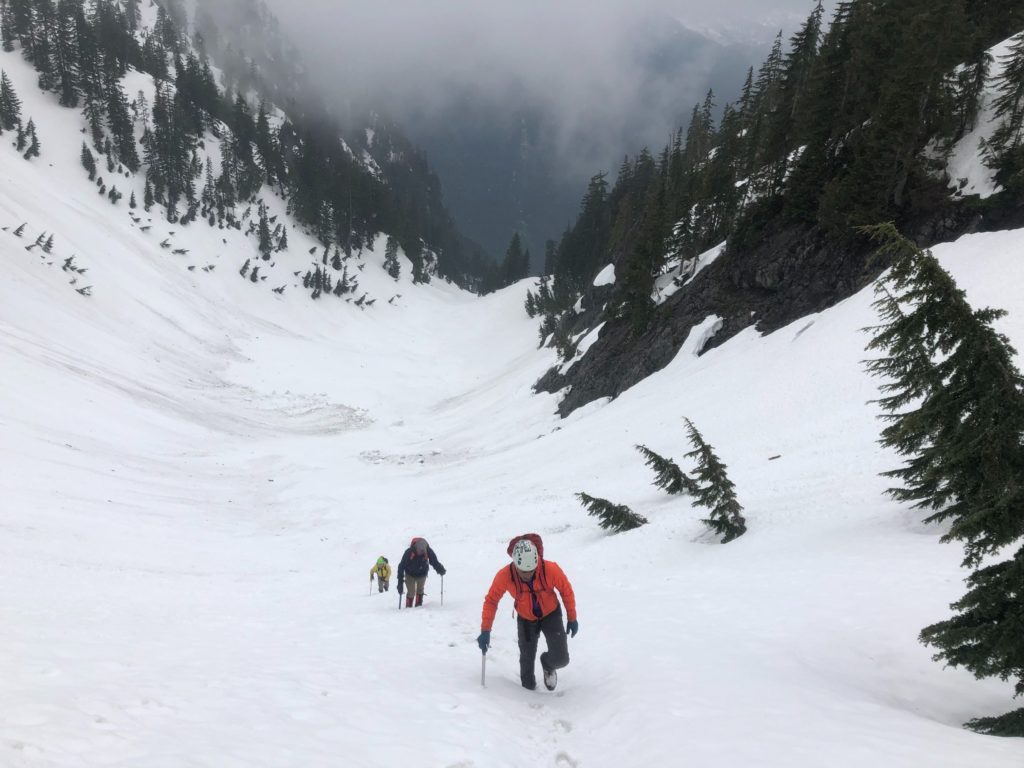
Oudi and I had attempted Runner Peak in 2019. In 2021, we went back with Bala and Scott. The visibility was limited, but we managed to summit in optimal conditions. Route finding to the summit was my favourite part of this trip.
I started following a grade pyramid approach to Trad Climbing and tracked all my climbs on The Crag platform. I did about 70+ climbs with about 19 outdoor climbing days in 2021.
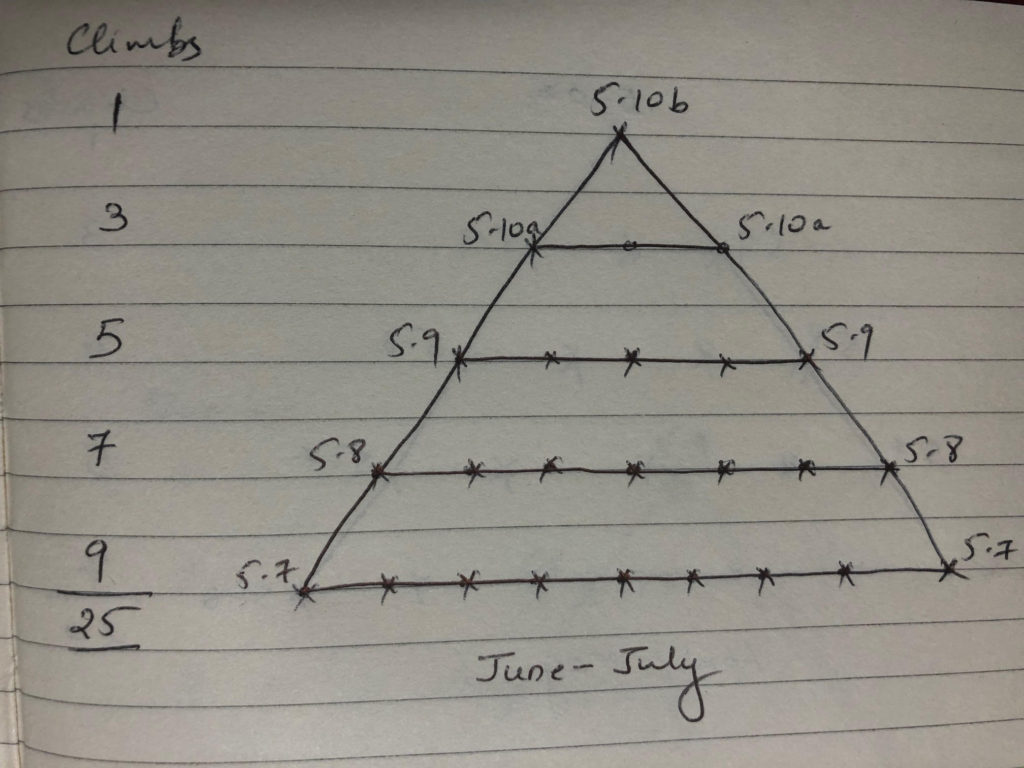
Most of these were single-pitch climbs in Squamish, but I also managed to do some multi-pitch/alpine climbs this year.
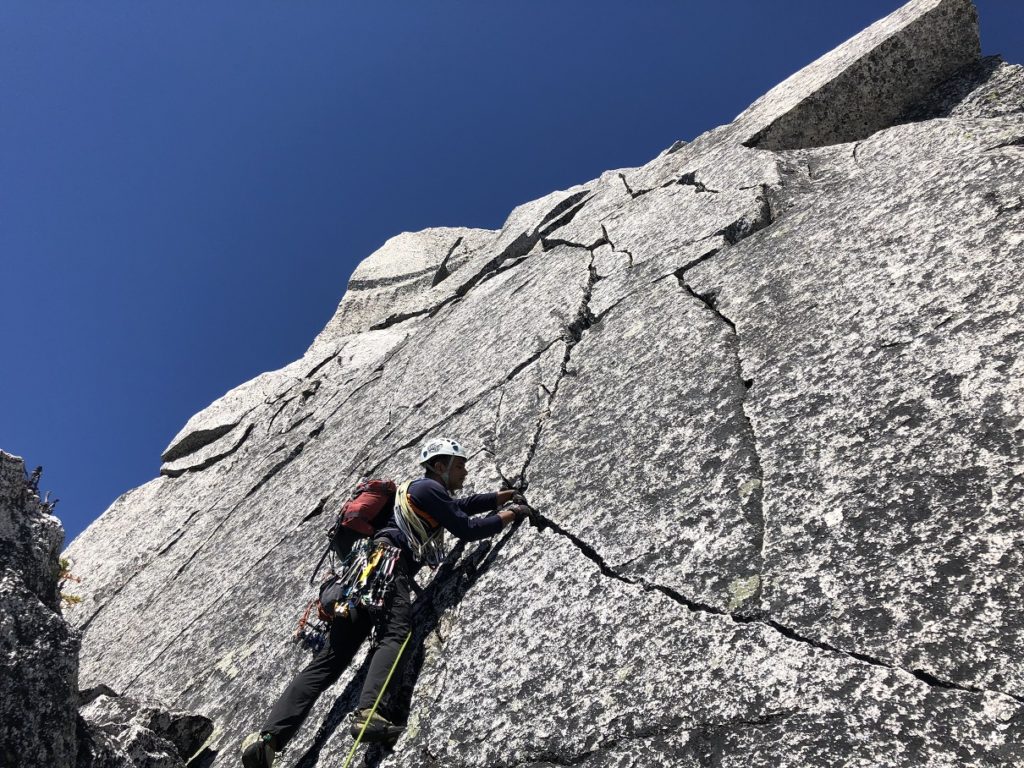
Nesakwatch North Spire Southwest Ridge and Mount Matier West Buttress were two of the most challenging climbs of the season. Both have an Alpine Rating of D and had some unique route finding challenges.
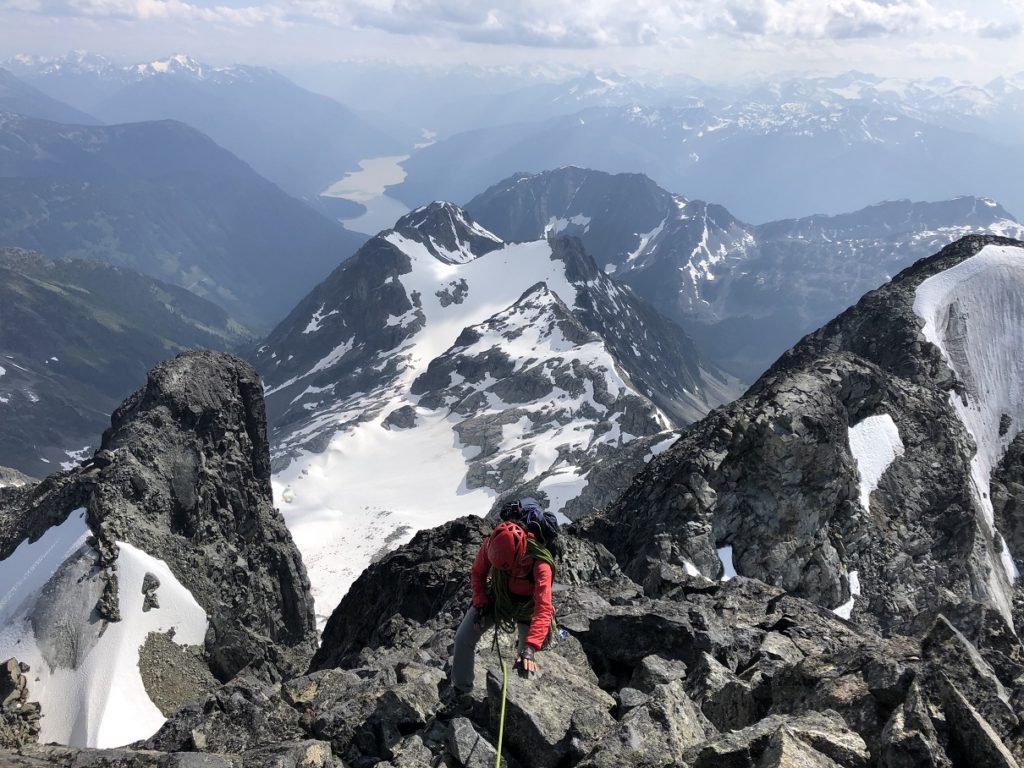
I also organized a BCMC trip to the Mount Rexford area. Over three days, we climbed North Ridge of North Nesakwatch Spire and West Ridge of Mount Rexford . Oudi, who has been a mentor to me, joined these trips and helped me build my confidence in leading alpine climbing trips.
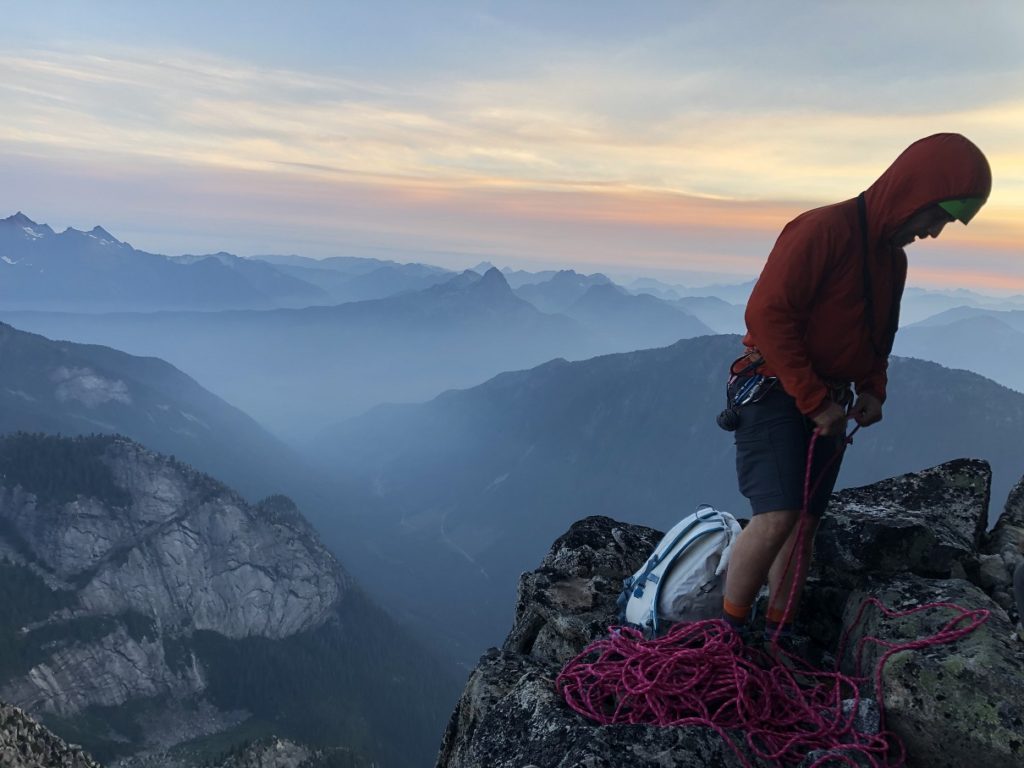
Kavya and I continued to ski on Grouse in 2021 and by the end of last season, we had achieved our goal of skiing all Blue runs on Grouse. We even did some of the easier Black runs and skiing down from the Grouse Mountain Peak was probably the highlight for Kavya. For me, it was seeing Kavya let go of her fears, ski freely and enjoy it. I took private ski lesson and it really helped me learn new skills and boost my confidence.
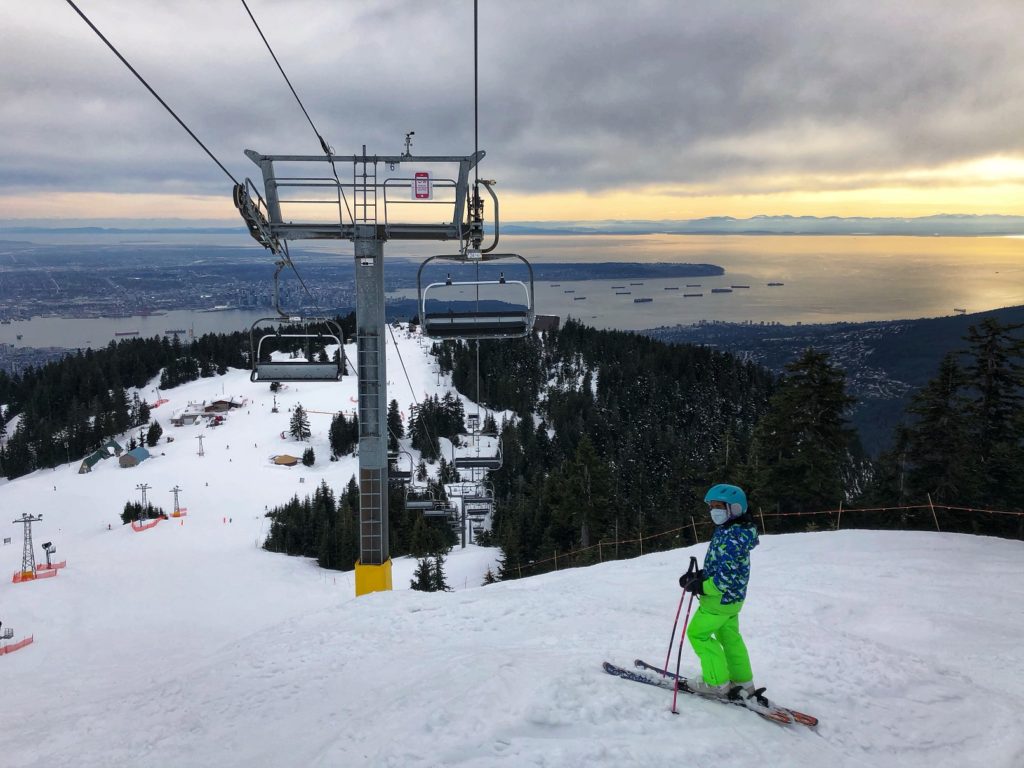
After seeing backcountry skiers zoom past me on several snowshoeing trips, I felt it was time to learn backcountry skiing. Oudi again helped me pick the gear and took me on my first backcountry trip to Mount Seymour. I spent more time falling than skiing, but it was a good experience, and now I want more.
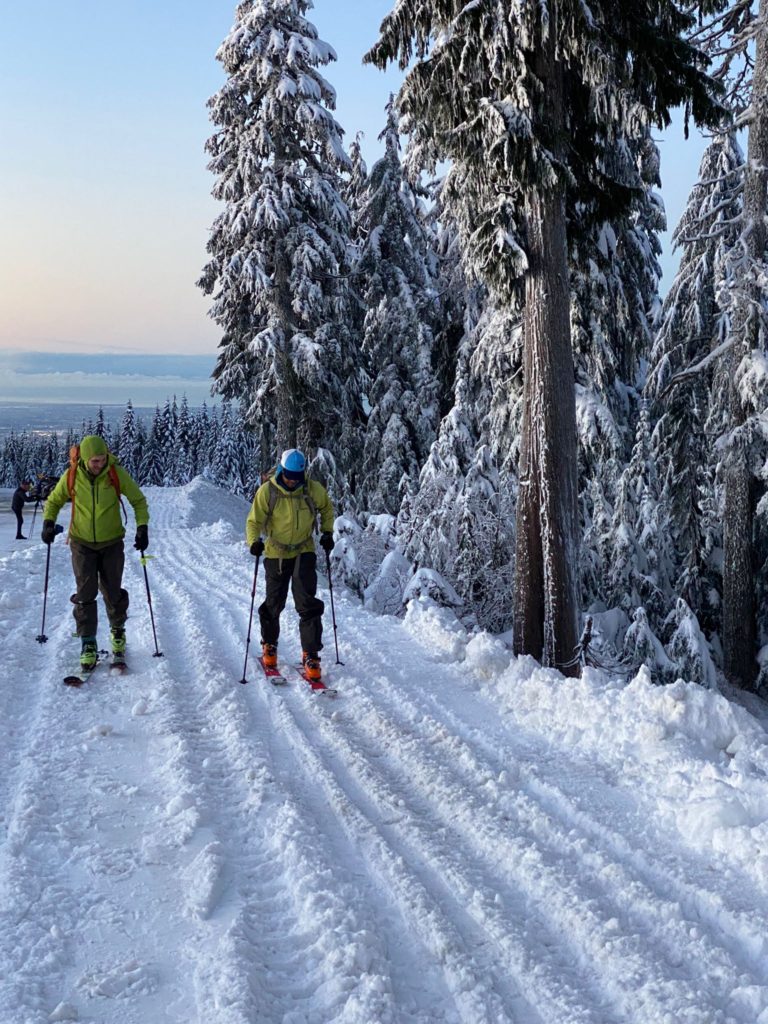
After two years, we could finally fly to India and spend some time with family. Unfortunately, we couldn’t trek with Kavya in the Himalayas but had fun exploring the Sahyadris.
Kundan and his six-year-old daughter Khushi joined us for the Kalsubai trek. Kalsubai is Maharashtra’s highest peak, and even though it was Khushi’s first trek, she did really well.
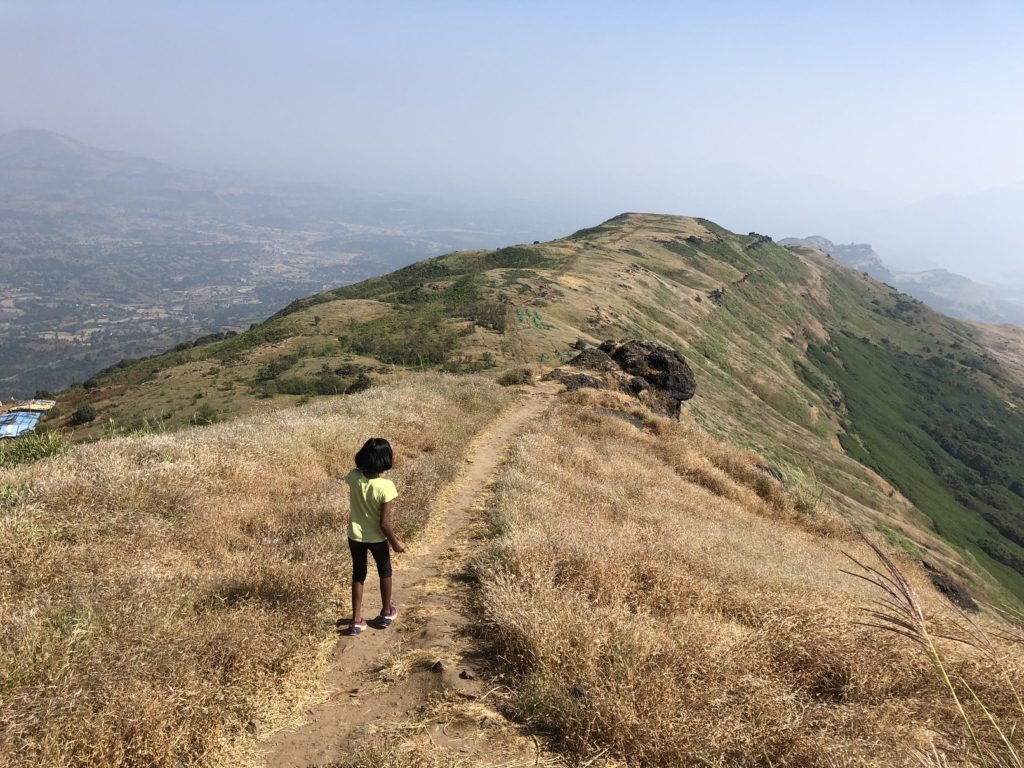
Later in Satara, Ajinkyatara was a relatively easy hike right from my mother-in-law’s place. We went up the steeper route from Kurneshwar and then came down the other side via Hanuman temple. Kasturi and I surprised ourselves when we accidentally went up a trail to access the Dakshin Darwaja (South Door) of Ajinkyatara.
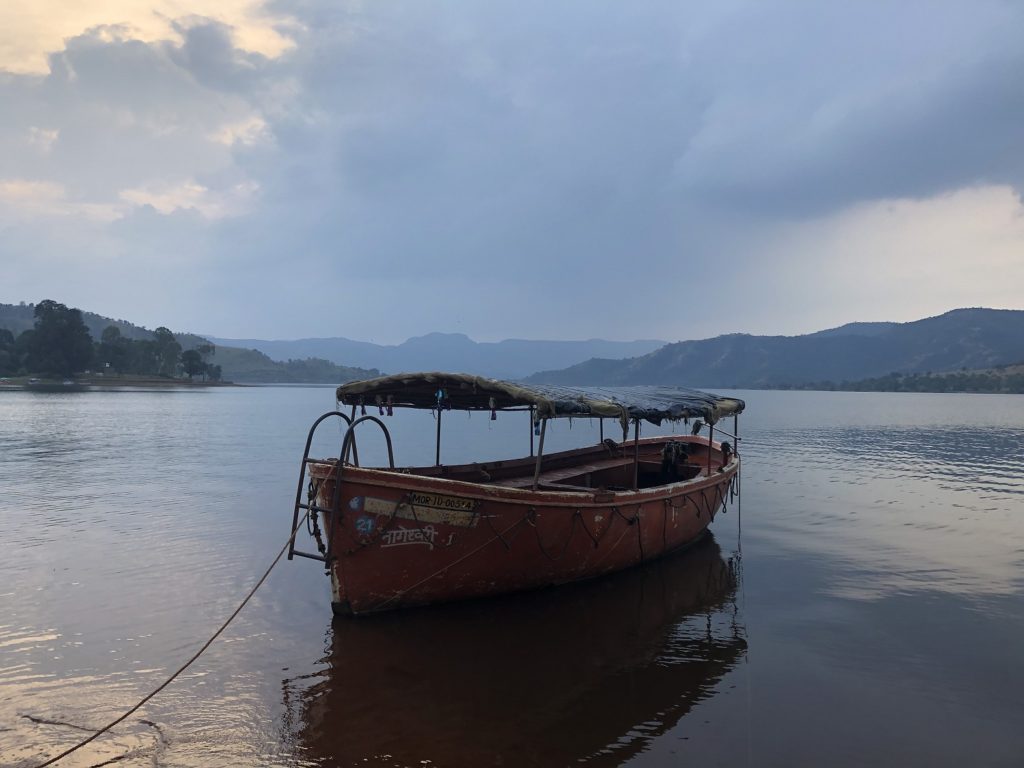
My favourite family hike in India was the Vasota fort trek in Sahyadri Tiger Reserve. The ferry ride and remoteness of the hike made it very special.
In the final weeks of our India visit, I made a quick trip to Uttarakhand. Kundan joined me for a couple of days in Rishikesh , and we explored the city and nearby attractions.
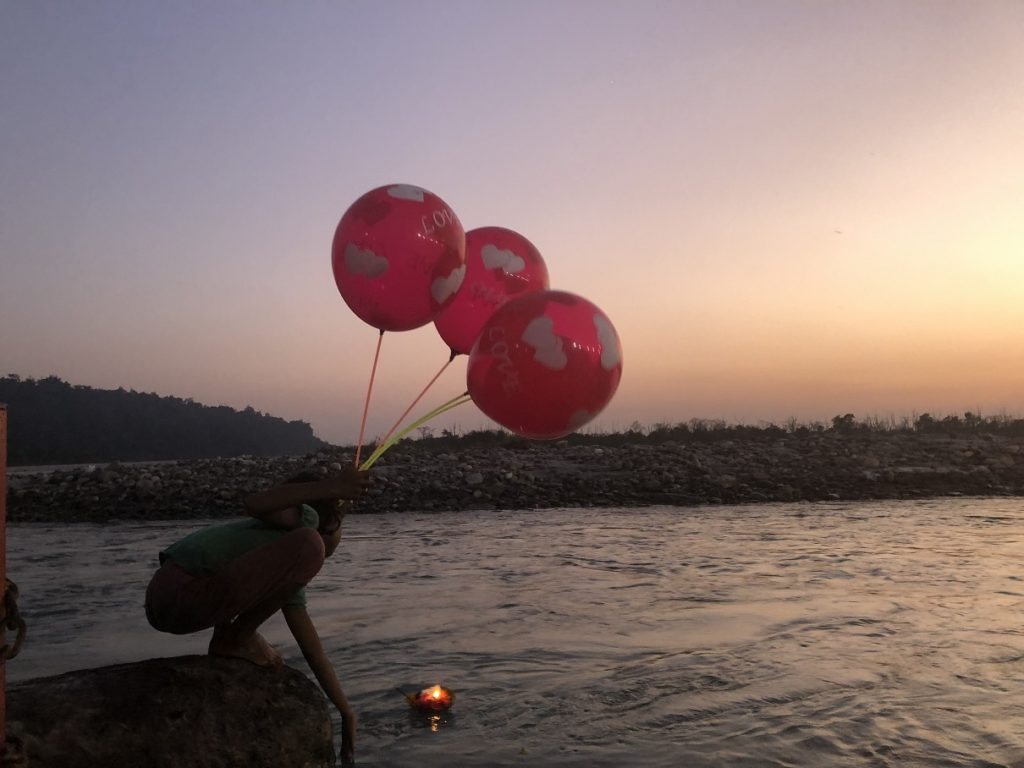
After two days in Rishikesh, I headed to Joshimath for Kuari Pass Trek . It was a beautiful day with fantastic views of 7000 m peaks in the Garhwal Himalayas. I hiked 27 km with about 2000 m vertical in 11 hours, and it was one of my best days in the Himalayas.
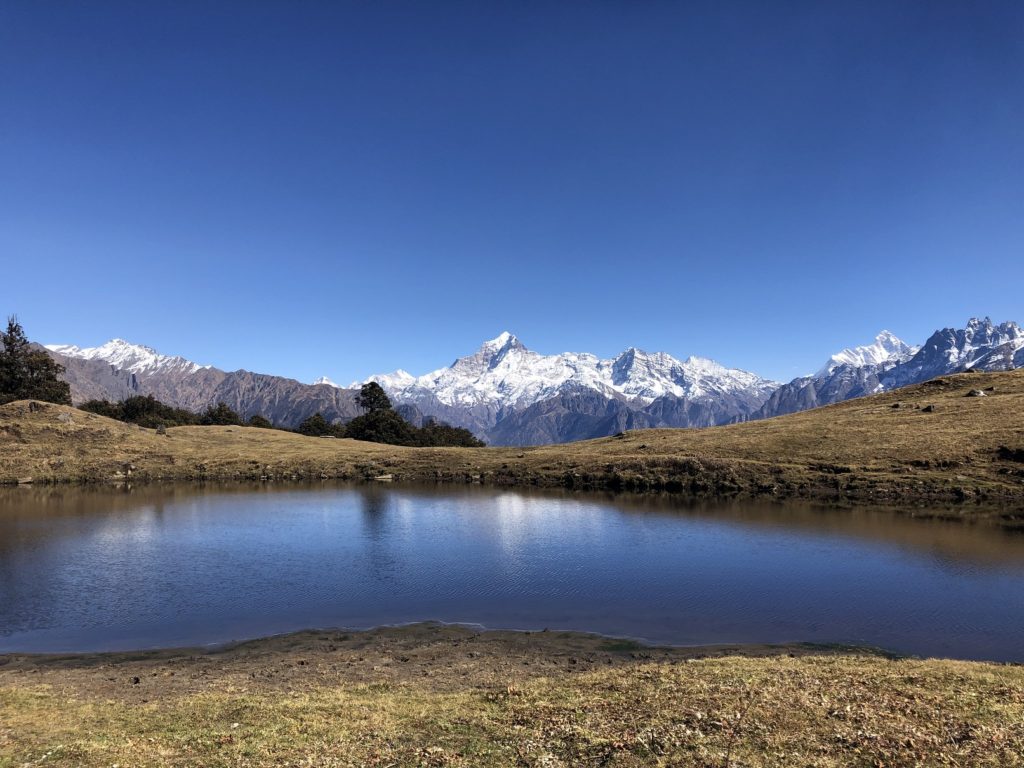
In 2021, I continued using Uphill Athlete’s 24-Week Mountaineering Plan. However, the training was interrupted first by our India trip in November, and I did some local hikes and strength training sessions. Later in December, I had some medical issues, which resulted in another break in December.
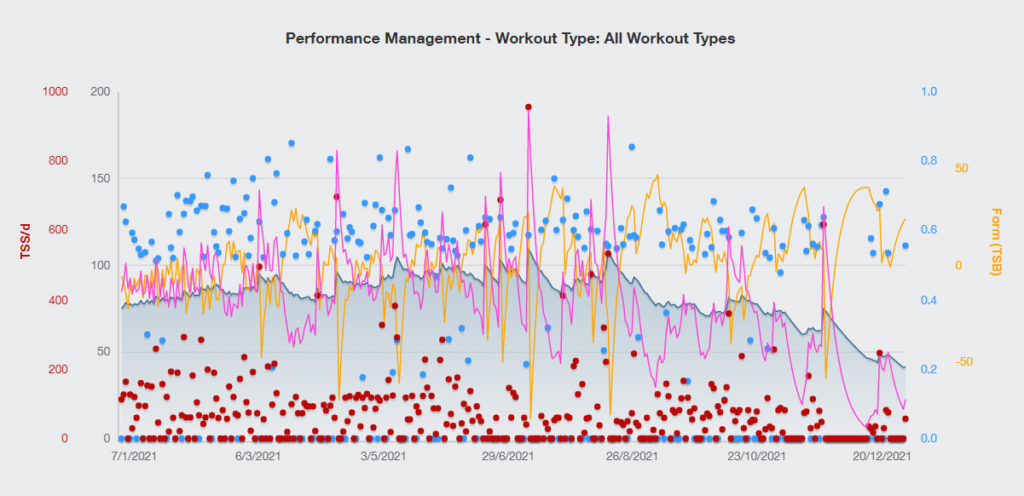
For 2021, my total training and activity (climbing, hiking, skiing, etc.) time added up to 500 hours, with an average weekly elevation gain of about 1374 m. Majority (>80%) of my training was in Zone 1/2 i.e. below my aerobic threshold of 155 bpm.
After almost two months’ break from training, I am starting 2022 with much lower fitness than I had to start in 2021. My training for the first few months of 2022, will be a mix of mountaineering (aerobic) and ice climbing (strength) training plans. Hoping for the best in 2022!
Similar Posts
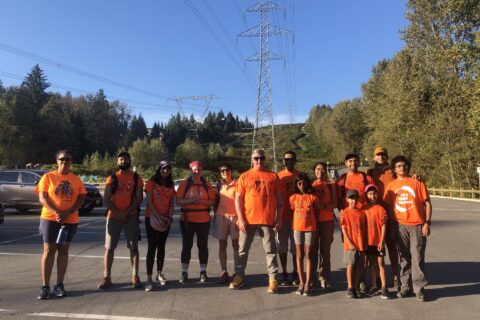
Orange Shirt Day Hike – September 30, 2022
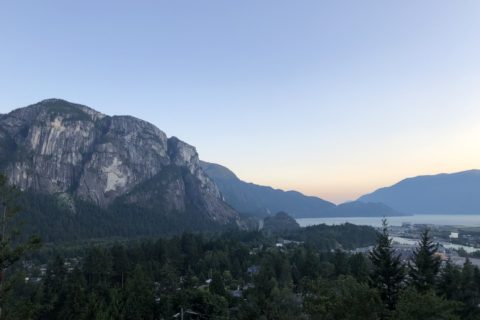
Trad Climbing Progression Using Grade Pyramid
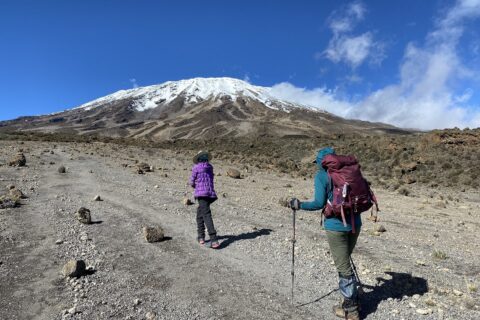
Kilimanjaro Family Trek via Alternative Lemosho Route
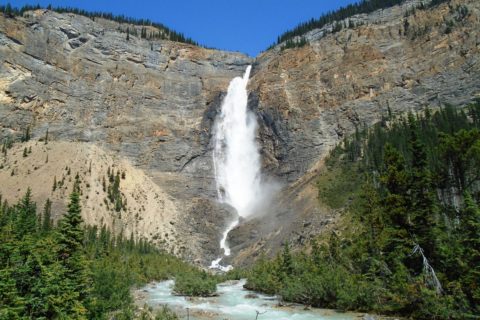
Canadian Rockies – Banff, Yoho and Jasper National Parks – Road Trip
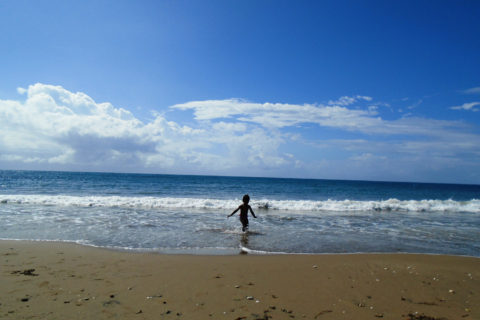
Jamaica – A Land of Waterfalls, Beaches and Mountains
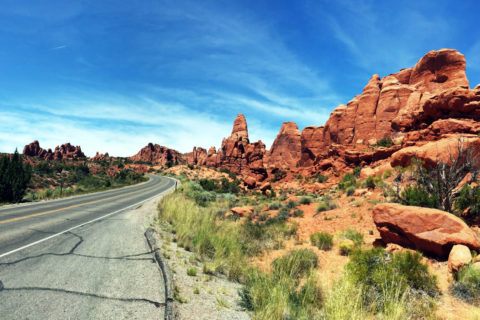
Utah – Iconic National Parks Road Trip
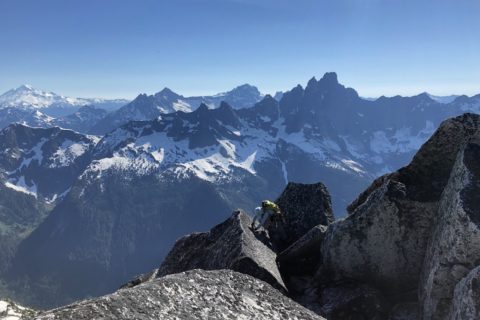
Nesakwatch North Spire Southwest Ridge Climb
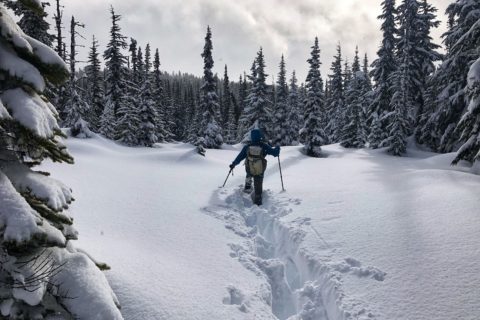
Snowshoeing Taylor Meadows-Garibaldi Lake Loop
Leave a reply cancel reply.
Your email address will not be published. Required fields are marked *
Privacy Overview
How to trek to Everest Base Camp

Jun 20, 2023 • 10 min read
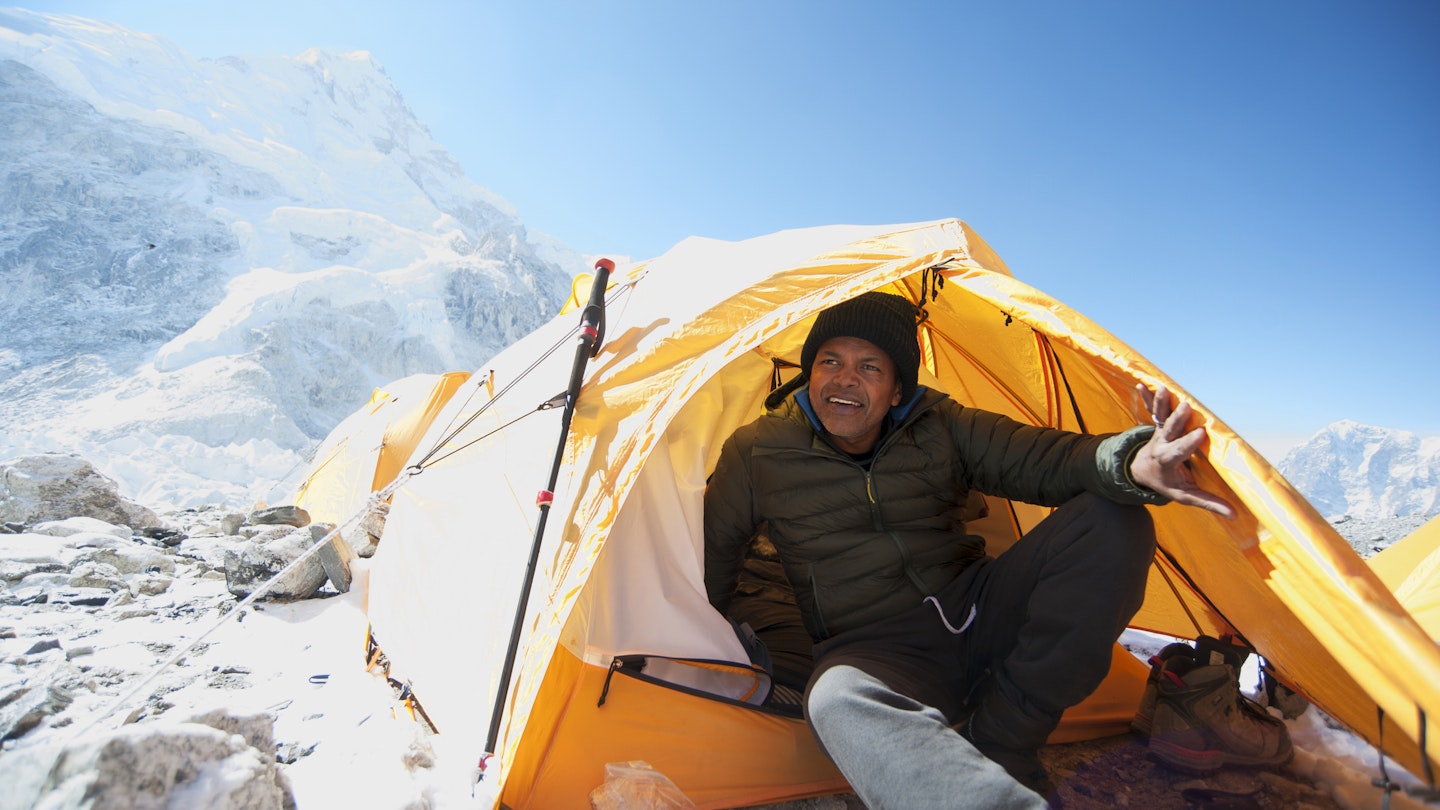
From permits to teahouses, here's everything you need to know about trekking to Everest Base Camp © Mint Images / Getty Images
Top of many people's travel bucket lists, the trek to Everest Base Camp is often the first thing people think about when they start dreaming of a trip to Nepal .
The walk takes trekkers past Sherpa villages and Tibetan-style monasteries, right up into the heart of the high Himalaya, into a breathtaking world (literally) of iconic glaciers, lakes and the tallest peaks on earth. It's probably the world's most famous trek.
But what is it actually like to trek to Base Camp? Is it something within your capabilities or budget? What should you bring? And, most importantly, can you get a proper coffee en route?
I just returned from trekking to Everest Base Camp for Lonely Planet's Nepal guide . Here’s what I think you need to know.
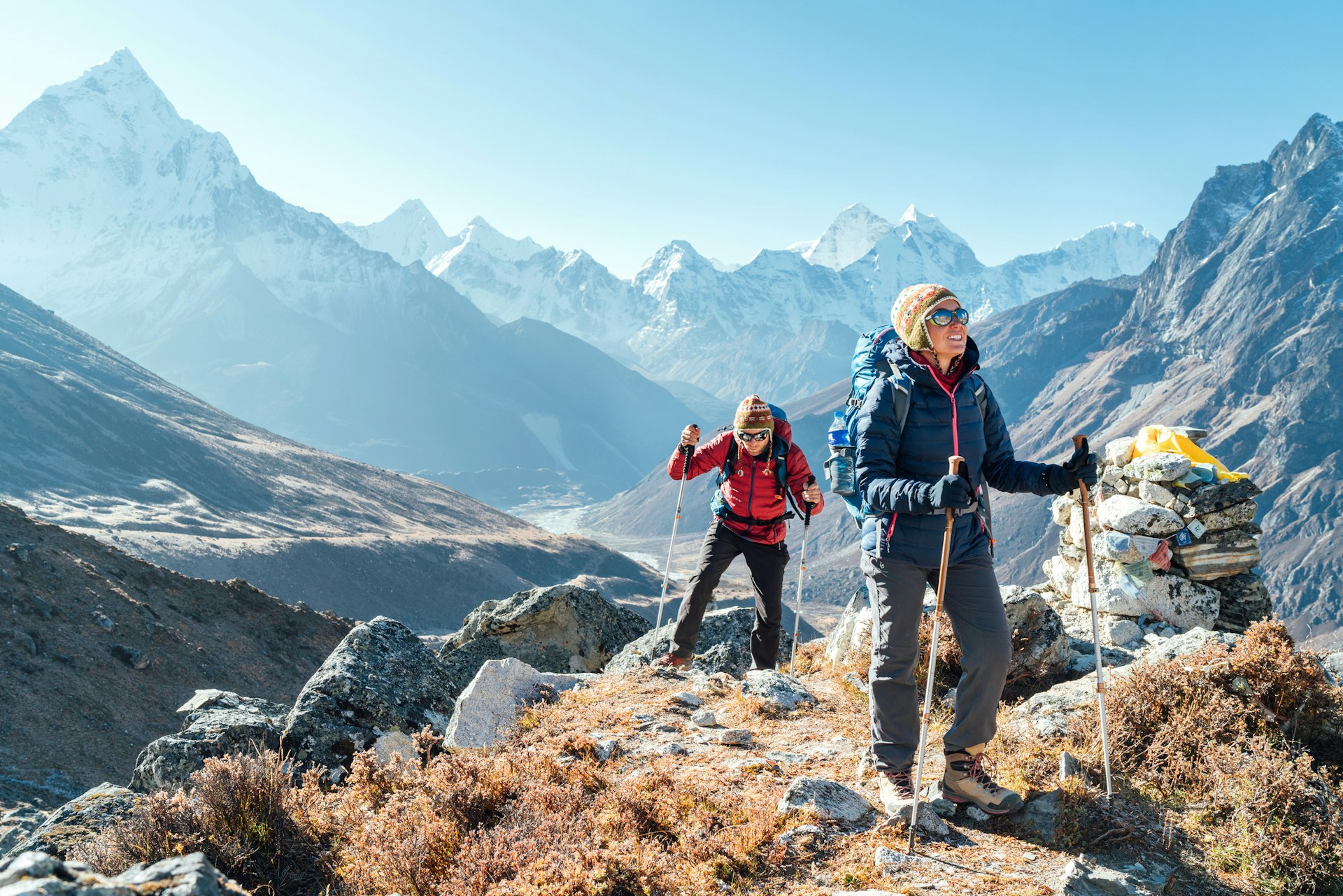
What's so great about the Everest Base Camp (EBC) trek anyway?
Firstly, the mountain scenery surrounding the world's highest peak is truly spectacular. The sublime views of Ama Dablam, Pumori, Nuptse and Thamserku peaks are unbeatable and constantly change as you progress along the walk. The Sherpa villages and monasteries are fascinating places to visit and the lodges (called teahouses) are the best in the world.
The knowledge that you are walking in the expedition footsteps of Hillary, Tenzing, Messner and others is a thrill. Anyone who has read Into Thin Air will be moved by the memorial stupas of Rob Hall, Scott Fischer and others who have lost their lives on the mountain. And then there's the fact that you will have reached the base of the world's highest peak; whether you call it Chomolongma (Tibetan), Sagarmatha (Nepali) or Everest, it’s a rush all the same.
And what’s not so great about the Everest Base Camp trek?
Well, if you force us to play devil's advocate… EBC is one of the busiest trails in Nepal. In the high season months of October and November you'll be walking with thousands of other trekkers, competing with them to get a bed, a lunch order or an airplane seat. There will be lines at checkpoints and even at moments on the trail itself. In bad weather you might be stranded at Lukla airport with hundreds of other trekkers, all trying to get on the first flight out. It's not quite the Zen-like wilderness experience you may have been imagining.
Bear in mind also that even after a solid week of walking, your view of Everest will be partial at best (for infinitely more dramatic Everest views visit the northern Everest Base Camp in Tibet ). If you trek outside of May's expedition weather window you won’t actually find much to see at Base Camp beyond a boulder hastily spray-painted with "Everest Base Camp".
If this has put you off, don’t worry; there are dozens of other fantastic treks in Nepal .
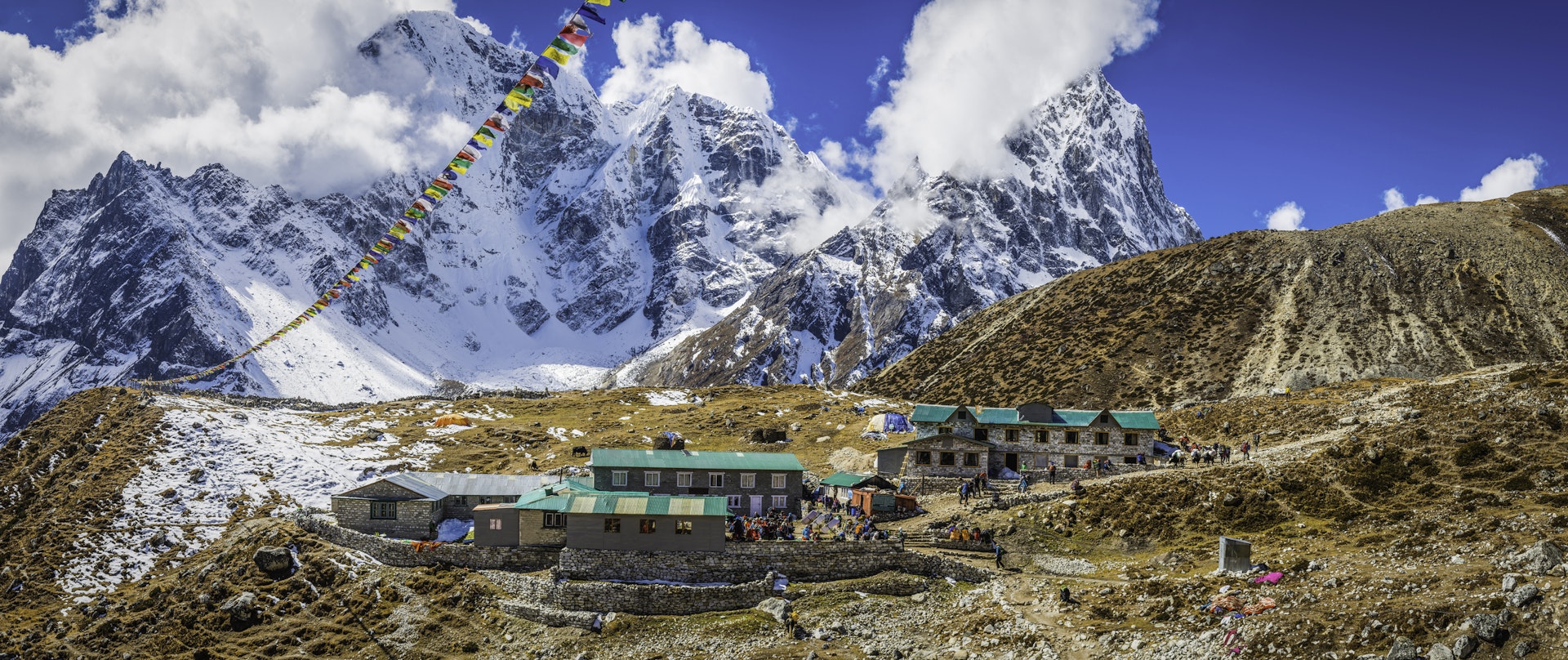
How long does it take to trek to Everest Base Camp?
The walk from the airport at Lukla to Everest Base Camp and back takes a minimum of 15 days. Several of the days are surprisingly short, but this is because you have to figure in time to acclimatize to the high altitudes.
If you can, it's definitely worth adding on a couple of extra days to this basic itinerary. Some of the most dramatic (and least visited) views are from detours off the main trail. I always add two days to visit Thame, two days to visit Chhukung and, if possible, three or four days to visit the lakes of the Gokyo Valley – probably the most beautiful scenery in the Everest region.
Be sure to also budget an extra day or two as a transport buffer. Weather-related flight delays in and out of Lukla are not uncommon (I had to wait six days for a flight to Lukla on my recent trip) so you need some buffer time if heading back for an international flight home.
How challenging is the trek to EBC?
In terms of physical effort, the EBC trek itself is not especially tough. There are only a couple of steep climbs, lasting about an hour each, and most days involve less than four hours of walking.
The thing that makes the EBC trek tough is the altitude. Base Camp is at 5600m (18,373ft) and you will need to spend one or two nights above 5000m (16,404ft). Above 4000m (13,123ft) you are going to feel increasingly lethargic and out of breath as the amount of oxygen in the air decreases. Combine this with the cold, the discomfort of being at altitude and the compounded tiredness from walking for two weeks straight, and you can see why the whole trek experience is definitely a physical challenge.
While you don't need to be an athlete to walk to EBC it is still a good idea to start a fitness regime in the weeks leading up to your trek. You'll enjoy the walk so much more if you are in decent shape.
When is the best time to trek to Everest Base Camp?
October and November bring the best weather and the clearest skies but these are also the most popular months. The second most popular season is April to early May, when spring blooms and expedition traffic bring extra interest to the trail. To avoid the crowds but still enjoy clear views, pack an extra thermal layer and come in December or March.
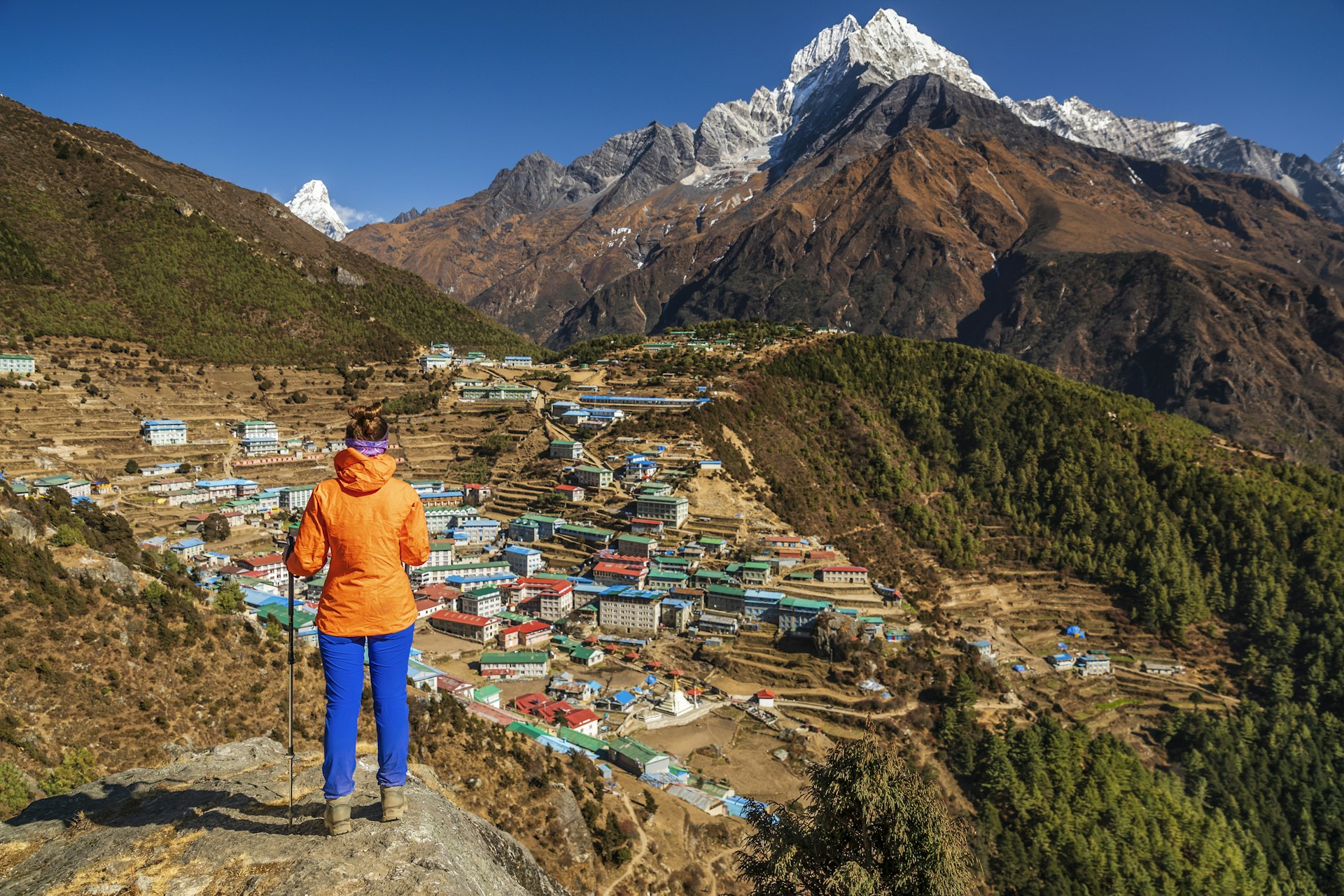
What can I do to avoid altitude sickness?
The majority of people who fail to reach Base Camp do so because they failed to acclimatize properly to the altitude. It's essential not to gain altitude too quickly by following the recommended overnight stops and limiting your daily altitude gain to a maximum of 400m (1312ft) when above 3000m (9843ft).
Be sure to add in acclimatization days at both Namche Bazaar and Dingboche, during which it's a good idea to hike to higher altitudes during the day, returning to sleep lower at night.
What are the teahouses like?
At lower altitudes the Everest lodges are the most comfortable in Nepal. Private rooms are the norm, many of which have private bathrooms. Showers are available at most places, though the hot water supply can be patchy. All have cozy dining rooms with tables arranged around a central dung-fueled stove. There are even a few luxury lodges along the trail.
In budget lodges, or when you get above Dingboche, things get simpler, with rooms offering little more than a collection of plywood walls, a solar light and a foam mattress. Toilets are a mixture of seats and squatters; sometimes outdoors, always freezing. A blanket is normally supplied but be sure to bring a four-season sleeping bag rated to well below 0°C (32°F).
What's the food like?
Menus in teahouses range from pasta and pizza to spring rolls, fried potatoes and soups, though the most popular meal is a daal bhaat , a set Nepali meal of rice, lentil soup and fried vegetables, normally served with a papad and pickle, and with a refill included. It's the most filling and environmentally sustainable meal you can order.
In villages such as Namche Bazaar and Dingboche you will also find bakery-cafes serving espresso and slices of delicious apple pie, plus shops selling everything from Snickers bars to bottles of beer. This is one trek where you might actually gain weight!
Can I get wi-fi or phone coverage?
Most lodges offer wi-fi, either free of charge or for a few dollars per day (at higher elevations). Above Namche Bazaar you will likely have to buy a scratch card, giving you unlimited data for twelve hours (AirCell) or a specific amount of data over a month (Everestlink). Depending on your network provider you'll likely get data and a phone signal at lower elevations, and possibly even at Everest Base Camp, but not at other high altitudes. So yes, in theory, you can Skype all your friends from Base Camp!
What should I bring?
Warm clothes are a must, and you should pack thermal underwear, a down jacket and fleece hat. Comfortable hiking boots and good, padded socks are also essential. Sun block, a sun hat with a brim and good sunglasses are important against the strong high-altitude light.
Morale-boosting snacks like chocolate and salami are always helpful, as is a book and smartphone with mapping software like Maps.me. Bring water purification of some sort. If you forget something, don’t worry, you can buy almost anything you might want in Namche Bazaar these days (from ice axes to cans of Pringles), though at prices higher than in Kathmandu .
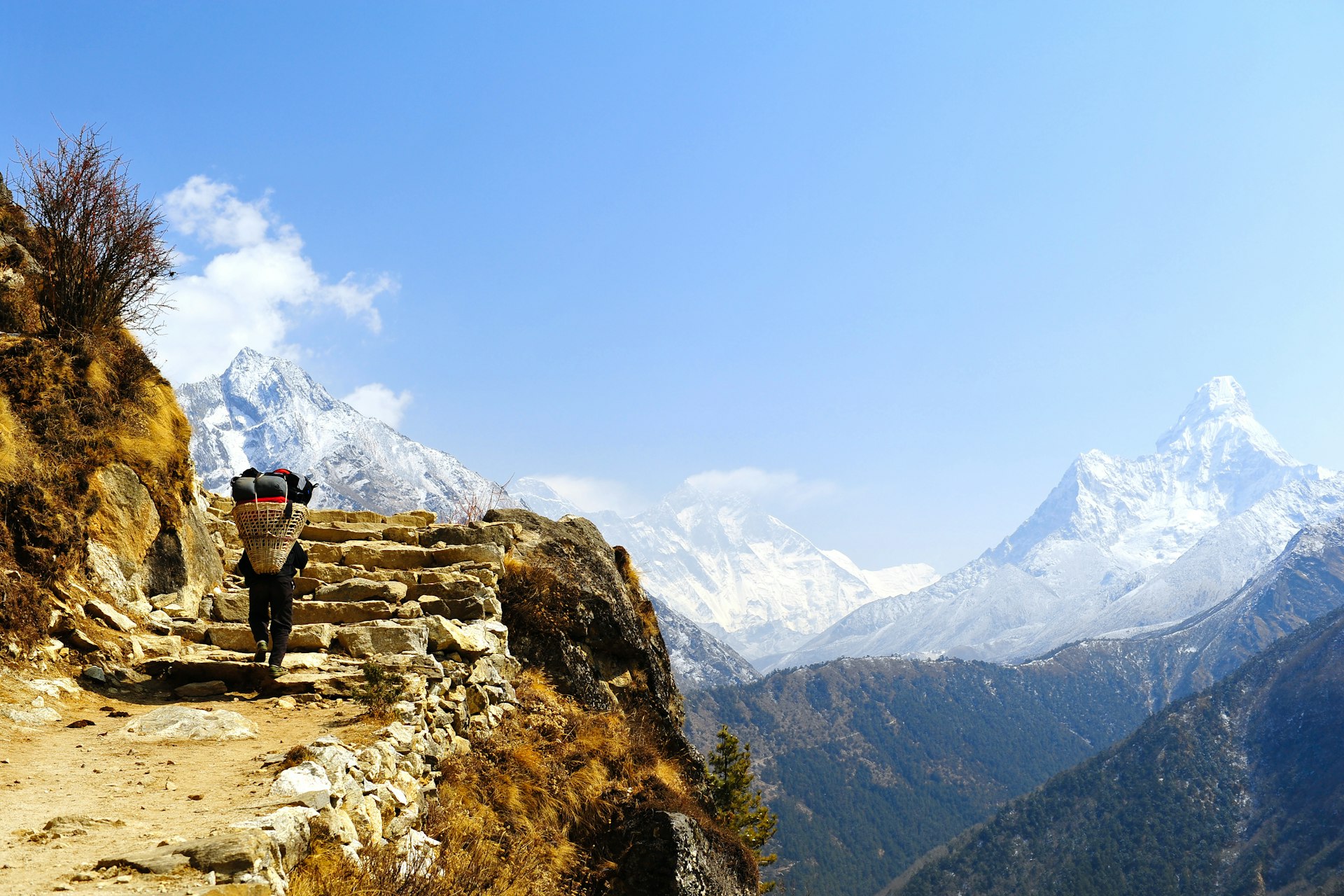
Do I need a porter and guide?
In terms of finding your way you don't need a guide if you are an experienced walker, as the route is clearly marked and well-trod. A guide can be useful for smoothing your way at teahouses, making sure you get your food on time and helping you pay your bill. It's important not to trek alone, so solo trekkers should find a companion or take a guide or porter.
A porter will carry a bag of around 15kg, freeing you up to pack a few extra chocolate bars and enjoy the walk with little more than a day pack. Not having the strain of carrying a full pack is worth its weight in gold for anyone over the age of 50. Trust me.
How much does the Everest Base Camp trek cost?
For a room in a lodge and three meals a day, figure on US$20–25 per person per day, a bit more if you want a room with a private bathroom and the occasional slice of apple pie. Add on another US$5 every time you want a shower. Figure on an additional US$20 per day for a porter, and US$25–30 for a guide, and budget 10–15% of that fee for an end-of-trip tip.
You'll pay a bit more to have a Kathmandu-based trekking company arrange your entire trek, and a lot more for the convenience and backup of an international trekking tour.
Do I need any permits?
You will need to buy an Everest region permit (US$20) at Lukla, as well as a Sagarmatha National Park entry ticket (US$30) at Monjo. Currently that's all you need.
How can I trek more sustainably?
With 60,000 trekkers and guides headed to the Everest region, it’s important to minimize your impact on the region. Firstly, don't buy bottled water on the trek, as the bottles are nonrecyclable and are a huge problem throughout the region. Bring a system of water purification, like a Lifestraw or Sawyer filter, a Steripen or chemical purification.
Secondly, carry all your trash out (especially batteries), and sign up for the Carry Me Back program, whereby you carry a 1kg bag of trash from Namche Bazaar to Lukla, for it to be recycled in Kathmandu.
Finally, be polite to the Sherpas and porters you meet en route, as well as your fellow trekkers. Walk clockwise around stupas and be respectful at monasteries and shrines.
How do I get to Lukla to start the trek?
Flights run multiple times daily between Kathmandu and Lukla, taking around 30 minutes. During high season however you may have to drive five hours from Kathmandu to Ramechhap airport to catch your Lukla flight there.
It's also possible to fly or drive to Phaplu and walk two days to Lukla from there, or walk from Shivalaya to Lukla in seven days as an excellent pre-trek warm-up.
This article was first published Jan 14, 2013 and updated Jun 20, 2023.
Explore related stories
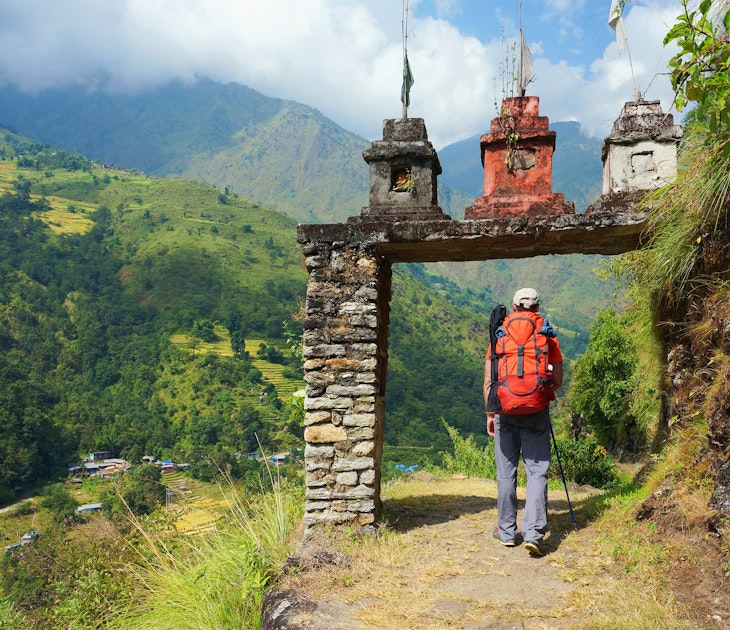
Mar 14, 2023 • 4 min read
To reduce accidents and promote jobs, Nepalese authorities recently announced a ban on solo trekking in national parks and conservation areas.

Jul 13, 2022 • 8 min read

Jan 31, 2022 • 6 min read
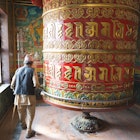
Jan 9, 2022 • 8 min read

Sep 14, 2021 • 11 min read

Jan 28, 2021 • 5 min read
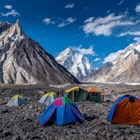
Jan 12, 2021 • 7 min read
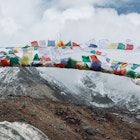
Dec 10, 2020 • 6 min read
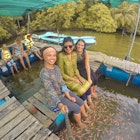
Jan 7, 2020 • 6 min read
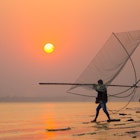
Oct 10, 2019 • 9 min read

The Complete Guide to Climbing Kilimanjaro in 2024-2025
Ultimate kilimanjaro climbing guide 2024-2025.
Kilimanjaro towers at 5,895 m/19,340 ft above sea level. It is the highest free standing mountain in the world and the "Roof of Africa".
Mt Kilimanjaro is one of the most popular travel attractions on the continent. Over 40,000 people visit it every year. The reasons for its popularity are simple. It's an incredibly beautiful trek where a climber doesn't require technical climbing skills. To reach the summit, one needs only a healthy average fitness level. This is why many people begin their Seven Summits journey with Mount Kilimanjaro.
We wrote this guide to help climbers prepare for their once-in-a-lifetime Kilimanjaro adventure. All the recommendations below are the results of our 10+ years of Kilimanjaro experience. Over this time we at Altezza Travel have organized Mount Kilimanjaro hiking trips for over 20,000 people. Our team also outfitted the climbs of Nimsdai, Red Bull athletes, and Fortune 500 companies, among others.
Take a glimpse into Altezza Travel expeditions
Kilimanjaro routes.
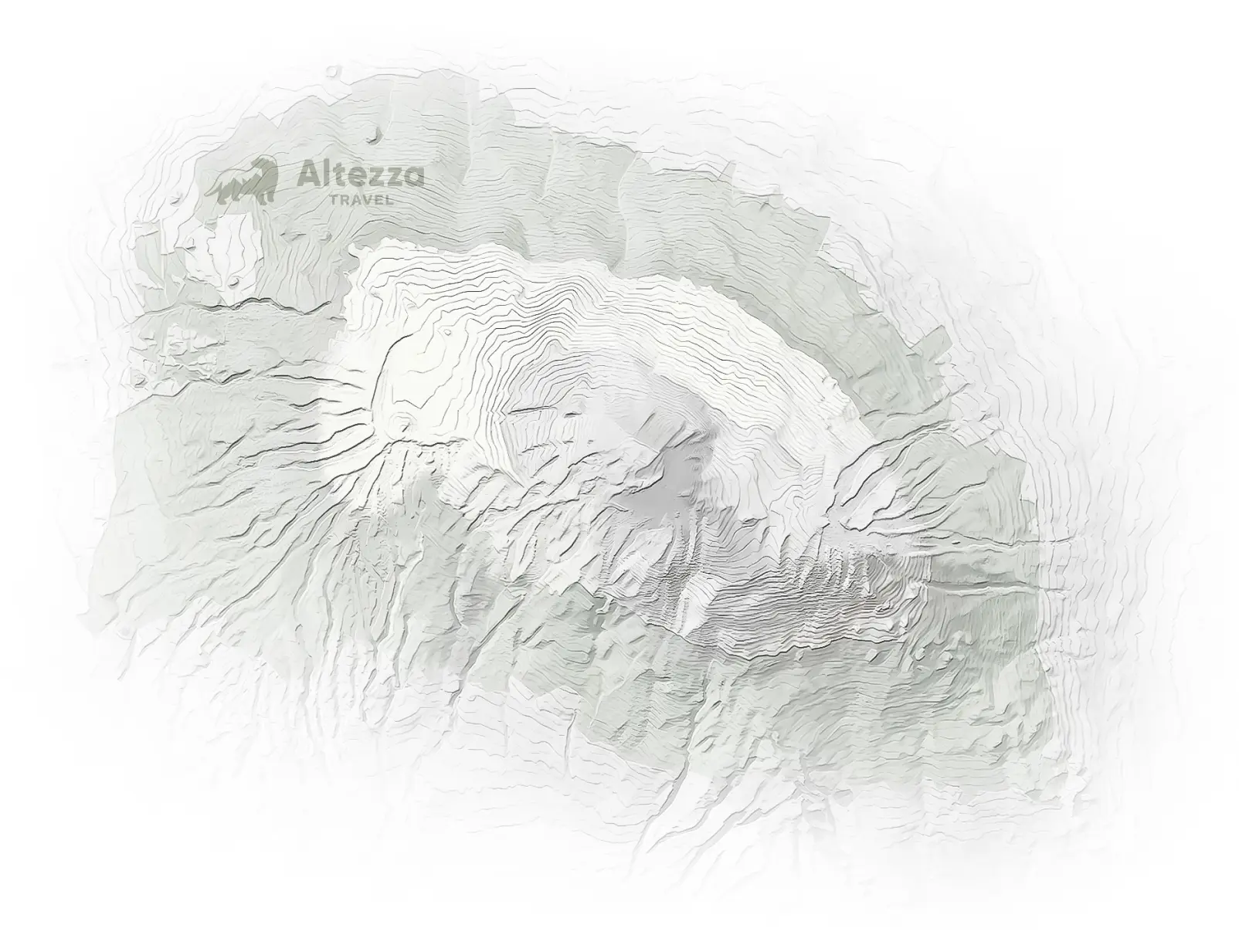
Kilimanjaro climbing groups with Altezza Travel
Altezza offers Kilimanjaro group climbs almost every day. If you have specific vacation dates and can't find a suitable group, contact our managers. We may consider opening a new open group beginning on the dates you suggest. To sign up for a trip, we require a $100 deposit only.
Facts to know before your Kilimanjaro hike
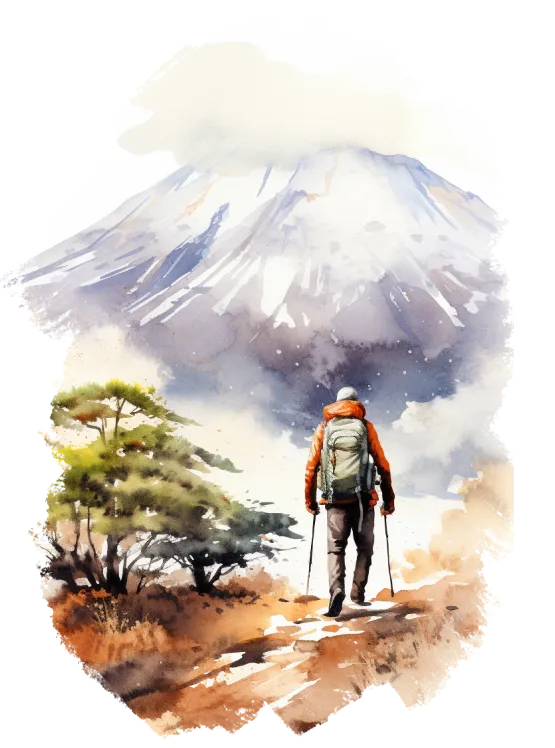
Popular questions about Kilimanjaro
Mount Kilimanjaro National Park is in northern Tanzania, East Africa. It is just three degrees south of the equator. While some of the most iconic panoramic shots of Mt. Kilimanjaro have been captured from the Kenyan side, all trailheads lie in Tanzania. Therefore, tourists can only climb Mt Kilimanjaro in Tanzania. The closest airport is Kilimanjaro International Airport.
Many Kilimanjaro expeditions begin in Moshi, the capital of the same region.
Late December to early March and mid-June to late October are the best times for a Kilimanjaro climb. This is when the Kilimanjaro weather is nearly ideal.
Although other months have rain, it doesn't mean there are constant heavy showers. Typically, rains begin in the latter half of the day. This allows trekkers a significant window of clear weather every day during the rainy season. There are also days without any rain. Altezza offers discounted climbs during the wet season.
You may read more about the seasons of Kilimanjaro .
Uhuru Peak, the summit of Mount Kilimanjaro, stands tall at 5,895 meters (19,341 feet). Yet, this doesn't mean you'll be starting your climb from the very base. Most hotels near Kilimanjaro are at an altitude of 700-1,000 meters above sea level. The trailheads begin at elevations of 1,600 meters and above.
Due to its altitude, Mt Kilimanjaro is among the few places in East Africa to see snow. The snow-capped peak of Kilimanjaro is truly a sight to behold!
We believe that after seeing it, Ernest Hemingway decided to name his famous story "The Snows of Kilimanjaro." The title refers to the distant peak of Mount Kilimanjaro. It represents the unattainable, and the purity of idealist motives. In the story's conclusion, the protagonist dreams of being taken to the summit of Kilimanjaro, symbolizing redemption.
The time it takes to climb Kilimanjaro depends on the route chosen. Most expeditions last 6 to 8 days. An experienced hiker with prior acclimatization usually climbs Kilimanjaro through an accelerated 5-day program. If you stay overnight in the crater, Kilimanjaro climbs can take 9 days or longer.
Among the Seven Summits, the Kilimanjaro trek is one of the shortest. For example, climbing Mount Everest takes 6-9 weeks, Denali and Aconcagua- 2-3 weeks. Kilimanjaro takes about one week only.
As of 2023, a comfortable and safe 7-day group climb costs about $2500-2700. A shorter 5-6-day adventure or a season-discounted trip comes at $2000-2300. This amount includes the park entrance fees, which make up about 40% of the total trip cost.
Any trekking companies offering below this amount should warrant caution. You may get low-quality guides and bad equipment. Such trips often lack medical kits and oxygen tanks, putting your safety at risk.
Also, low prices always correlate with the mistreatment of porters. None of those operators is a member of the KPAP. The crews of budget operators are often underpaid and poorly fed, putting their and hikers' safety at risk.
Climbing Kilimanjaro is subject to the regulations of the Kilimanjaro National Park. The official rules dictate that a local guide must accompany all hikers. Rangers at the park will not permit entry to anyone without a professional Kilimanjaro guide.
Also, venturing up to the Roof of Africa solo involves certain risks. During the summit night in the peak zone, one may succumb to altitude sickness or get injured. If needed, the guides will assist with evacuations and other emergencies.
Finally, climbing Kilimanjaro is more than merely a physical challenge. You'll go on a rich cultural journey with your guides. You will learn about Kilimanjaro's plants, animals, and history. The guides will also share vibrant stories of the communities living in its shadow.
Anyone planning to climb Kilimanjaro should keep the park entrance fees in mind. As of today, they come at $140 per day per hiker. This amount includes several types of fees:
- 'Conservation fees' are for staying in the National Park and enjoying its nature.
'Crew fees' - there is a small charge for each crew member entering the National Park to support you on the trek.
'Rescue fee' - this is a sort of mandatory 'insurance' payment. The hikers pay it to use the Kilimanjaro rescue cars. Please keep in mind that this is not a substitute for a real insurance package.
Don't worry about the park fees when planning your trip. Tour operators include them in the tour price and we will pay them to the park authorities on your behalf. Climbing Mount Kilimanjaro with Altezza you can be sure that we will take care of every detail.

Preparing and training for Kilimanjaro
Maintaining a reasonable level of fitness is crucial to climb Kilimanjaro. However, summiting Kilimanjaro doesn't require athletic prowess. A healthy average would be adequate. As a guideline, we suggest assessing whether you can comfortably hike 8-10 km (5-6.2 mi). If you can do it, then you are fit enough to climb Mount Kilimanjaro.
A great exercise for hiking Kilimanjaro is running. Keep training until you can confidently jog 4-5 km (2.5 - 3.1 miles). Good training programs are available at the Nike Running Club app.
Swimming is an excellent complement. Swimming strengthens your entire body and improves your heart and lung endurance. This makes it a great addition to running. The first primarily focuses on leg endurance. Swimming takes it further by engaging the arms, core, and legs at the same time. Water buoyancy is also good for people who want to protect their joints while exercising.
Finally, it is great if you have any rural areas nearby with rough hiking trails. Aim for longer ones, ideally in the 10-15 km (6-10 mi) range. Remember, most of the Kilimanjaro hike will be uphill. So, training over longer distances in the countryside will prepare you for the Roof of Africa.
You may also check our Kilimanjaro training plan . It's useful for building your stamina and fitness for the climb.
Fit climbers often hike Kilimanjaro too quickly. They don't take enough time to acclimatize at lower elevations. Many reach camps faster than the rest of the group. The fast pace increases their risk of getting mountain sickness.
Climbing Kilimanjaro preparation goes beyond physical fitness. It's also a test of discipline and a steadfast commitment to the acclimatization plan.
Tanzania has two rainy seasons and two dry seasons. The short rainy season begins in early November and lasts until late December. It is followed by the dry season, which lasts until mid-March. Then the season of long rains begins, ending in mid-June.
You should consider the northern slopes to climb Kilimanjaro during the rainy season. According to the data we received from the Tanzania Meteorological Authority, this part of the mountain receives five times less rainfall. Good Kilimanjaro routes to choose from are Rongai, Northern Circuit, and Marangu.
One should also remember that the period from June to October in East Africa is marked by cold nights. At the high altitudes of Kilimanjaro, the nights will be pretty chilly. Make sure you have everything from our packing list.
On a Kilimanjaro trek with Altezza Travel, every climber receives a balanced diet designed specifically for the mountain environment. Our specialized menu is rich in calories and carbs to provide you with ample energy.
For breakfast, we serve porridge, pancakes, fruit, eggs, sausages, and toast with jam. Lunch or dinner options include delicious soups like butternut, tomato, leek, vegetable, and beef, potato dishes, spaghetti, chicken, stews, fresh vegetable salads, and avocado. All meal courses are served with delicious sauces and dressing. For dessert, we have mangoes, bananas, pineapple, and oranges. They give you important vitamins and minerals. Coffee and tea are always available in the camp.
We also have extended meal plans for vegetarians, vegans, and gluten-free climbers. We will do our best to accommodate other diets also.
Throughout the trek, our guides will frequently pause for tea with biscuits. Nonetheless, climbing Kilimanjaro demands considerable energy. Hence, we recommend you bring snacks such as energy bars, dried fruits, and high-calorie treats. It's preferable to purchase these at home. There might be a much broader variety of such products available in your country compared to Tanzania.
At Altezza Travel, we've conducted an in-depth analysis and examined the data from January 1, 2023, to September 30, 2023. We looked at the records of over 40,000 climbers.
Our findings revealed that starting your trek on a Wednesday or Thursday reduces the crowds you will encounter. There are almost twice fewer climbers starting on these days compared to the rest of the week.
Additionally, we discovered that the Rongai route has eight times fewer climbers than the popular Machame route. Thus, by hiking Mount Kilimanjaro on Thursday and opting for the Rongai route, you'll encounter nearly 16 times fewer climbers on your way to Uhuru Peak.
What should I pack for a successful summit?
We offer tents, thick sleeping mattresses, tables, tableware, chairs, and other equipment. However, you must bring your own hiking gear. This includes boots, a sleeping bag, duffle bags, pants, trekking poles, and other items from the packing list.
When you climb Mount Kilimanjaro, the temperature changes a lot. It can be as hot as 25°C/77°F and as cold as -15°C/5°F. It is essential to bring clothes for all kinds of mountain weather.
If you want to travel light or don't want to buy gear, you may rent equipment from Altezza Travel. We have an extensive inventory of quality gear in prime condition.
Check our Kilimanjaro Packing List to learn everything you need to know
Kilimanjaro Guides
50+ expert kilimanjaro guides work for altezza travel.
Our lead guides have a lot of experience across all Kilimanjaro routes. All are certified as Wilderness First Responders. They are a great company to climb Kilimanjaro with.
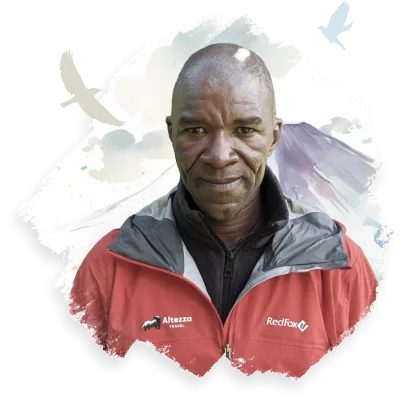
Professional Guiding Crew

Kilimanjaro Hiking Routes

This trail is one of our favorite Kilimanjaro routes. It starts on the beautiful western side of the mountain. On Lemosho, one may see amazing views of the Shira plateau.

Rongai is a great option for exploring the northern side of Kilimanjaro. It offers a more private experience and amazing views of the Mt Kilimanjaro summit. We recommend it for the rainy seasons.

The Machame route is the second most popular of the Kilimanjaro climbing routes. It offers good acclimatization and great views on the way to Uhuru Peak.
Questions about Kilimanjaro safety
Altezza Travel recommends Global Rescue, known for reliable reimbursements. Your coverage should include three important things. These are high-altitude hiking up to 6000 meters, helicopter evacuation, and medical services.
In order to acclimate and summit successfully, we recommend following these simple rules:
Hike slowly. Your body needs time to adjust to the lower oxygen levels. By following a moderate pace, you'll enable it to produce more red cells. Those are used to transport more oxygen to the vitals and to increase the breathing rate. Our guides will be monitoring your pace and will help you to correct it if needed.
Drink 3-4 liters of water a day. Staying properly hydrated is essential. Water will be provided by our crew along the trek.
Join our acclimatization hikes. Each day, our guides lead short hikes from the camp to higher ground and then back again. These hikes usually last no more than 2 hours. They help a lot with getting used to the altitude. We suggest everyone takes part.
If you have time, consider climbing Mount Meru before your Kilimanjaro trip. Those close to South America will have many options for similar hikes. For example, on the Inca Trail. Climbing other lower mountains around the world can also be fantastic. It will help you get used to higher altitudes, preparing you for the Kilimanjaro journey.
Lastly, if you choose routes that are seven days or longer, your body will have more time to adjust. This will improve your chances of reaching the summit.
To acclimatize better on Kilimanjaro, the best routes are Lemosho, Machame, and Rongai. Consider them, or other itineraries with seven days and more.
On the seven-day Machame route, you won't need any extra acclimatization days. Equally good options are Rongai and Lemosho. These are the main routes we use for most of our trips. However, if you think you're not very physically fit, you may add one or two days for extra rest.
At the summit of Kilimanjaro, the level of oxygen in the air is roughly half of what it is at sea level. Most climbers can reach Uhuru Peak without using extra oxygen.
Yet, to be on the safe side, we take precautions. On our expeditions at Altezza Travel, we always have plenty of oxygen tanks. The cost of oxygen is included in the tour price.
We have 300+ oxygen tanks ready for our expeditions, more than all other operators combined. In an unlikely scenario, if your group needs extra oxygen, we will send it from our base. The neighboring Altezza groups on the mountain are also ready to share theirs. Hiking Mount Kilimanjaro with us is always safe.
During climbing Kilimanjaro expeditions, Altezza Travel teams carry comprehensive medical kits . On the hikes, we use smaller tactical kits. They contain everything needed to treat injuries, scratches or twisted limbs. Our camp's larger medical kits have medicines for common problems on a Kilimanjaro climb. Such as for nausea, headaches, vomiting, and stomach issues. Also, we have lots of oxygen ready to help you prevent altitude sickness when first symptoms arise.
The situation is different if you take any prescription medication. Better take it with you on your Tanzania trip.
Relative to other mountains, Kilimanjaro has a low death rate on all its seven routes. Of the approximately 50,000 individuals hiking Mount Kilimanjaro each year, 3-5 lose their lives. The main causes of these deaths are brain and lung problems due to high altitude and heart attacks. Park authorities say this happens because hikers ignore acclimatization.
The mortality rate for Kilimanjaro porters is notably higher. Each year, 20-25 porters die while being a part of a Kilimanjaro crew. The most popular reason is pneumonia, caused by a lack of proper gear or shoddy tents. Responsibility for this largely lies with super-budget trek operators.
To end the mistreatment of porters, always choose a KPAP-registered company when climbing Kilimanjaro. This organization makes sure that operators treat their crew fairly by paying good wages and providing everything they need for safe working conditions on Kilimanjaro. You may learn more in our video about our involvement in the KPAP work .
In the 10 years that Altezza Travel has been operating, we've guided over 20,000 climbers to the summit. We haven't had a single fatality. In addition, we are a proud member of the Kilimanjaro Porters Assistance Project (KPAP) and regularly donate funds to them.
The highest peak of Kilimanjaro was named Uhuru Peak to celebrate Tanzania's independence from Britain in 1961. "Uhuru," means "freedom" in Swahili.
Tanzania has famous destinations for any kind of African adventure. The most popular destinations are Serengeti National Park and Ngorongoro Crater. It is undoubtedly a great idea to plan a safari before or after the climb. We have a fleet of new safari cars and a team of highly professional safari driver-guides who will your safari truly unforgettable!
Kilimanjaro climbing Base Camps

In Tanzania's context, a base camp is a place from where the climbers make their summit attempt. While most mountains only have one, Kilimanjaro is unique. It has four. Barafu Camp sits on the south slope, at 4,673 meters. It's the base camp for Lemosho, Machame, and Umbwe trekkers. Climbers on the Marangu route use Kibo camp. It sits higher at 4,720 meters (15,485 feet) on the eastern side.
The School Hut summit camp is for climbers using the Northern Circuit and Rongai routes. Because of that, it is one of the less frequented summit camps on Kilimanjaro.
There is also the Kosovo summit camp, positioned slightly higher than Barafu. Its position makes it easier for the final push to reach the summit.
Altezza Travel - a responsible operator of Kilimanjaro climbs
Altezza Travel is a Tanzania-registered tour operator. We live, work, and pay taxes in this country only. Our commitment to Tanzania extends to impactful social responsibility initiatives . Our team regularly plants trees on Kilimanjaro, fights bushfires, and protects wildlife on the mountain.
We are also the largest tourism employer in Kilimanjaro. There are over 300 people in our office and hotel teams. Our Kilimanjaro crew is 1500+ people strong and keeps rising annually. We are proud to attract the best talent in the region by offering the best working conditions and pay.
Feel free to contact our team for comprehensive advice about Kilimanjaro. We are here for you.
See you in Tanzania!
Updates from Kilimanjaro from our clients
Altezza travel runs 15% of all expeditions on kilimanjaro.
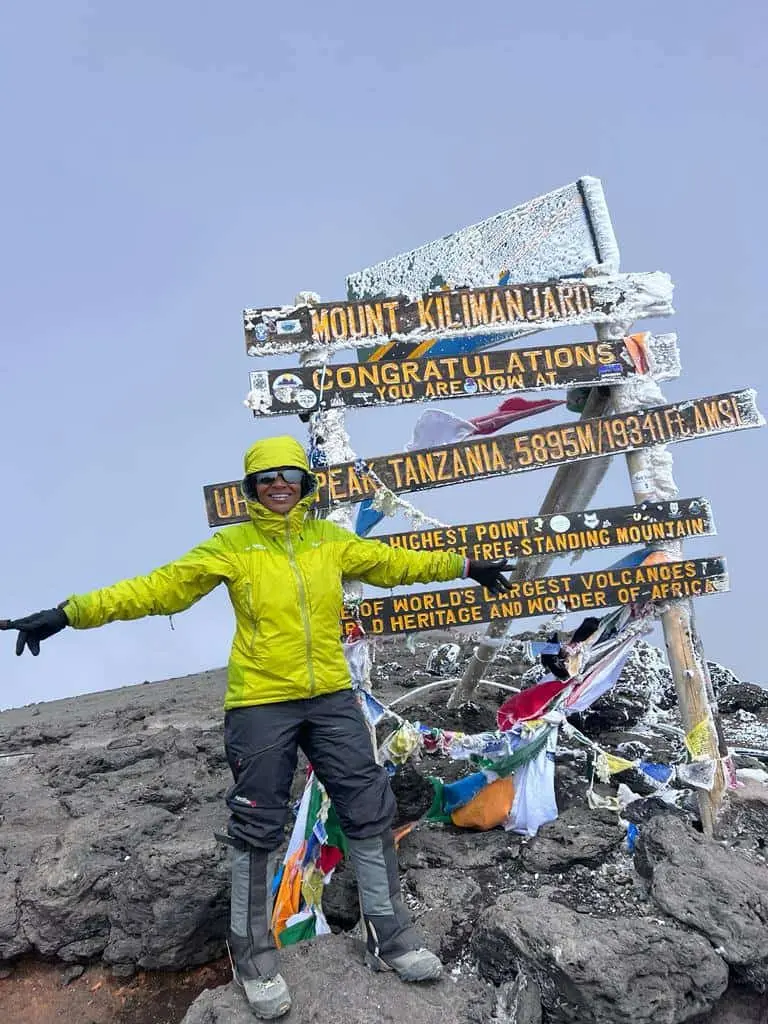
On every route, there are stationary toilet facilities at the camps, but we highly recommend renting a portable toilet to improve the comfort of your expedition. Many of our guests say that this was their best investment ever :)
As for the stationary shower, it's available only on the Marangu Route, but it's a cold shower. You can rent a portable shower from us that comes with hot water. It's allowed to be used on any route, except Marangu.
Thank you for your question! We offer two types of expeditions - private and groups. You can visit our YouTube channel to learn more about the difference - https://www.youtube.com/watch?v=7SSaFpWW0OU . Our join-in groups typically consist of around 12-15 people during peak season and 4-6 during the low season. Regarding the pace, you don't need to worry. Our guides hike at a very slow and comfortable pace. However, if you prefer to go faster or slower, the group can easily split up so that everyone can walk at their own comfortable pace.
Greetings! If we are a family of three, can we share one tent during the climb?
In our classic expeditions, we use The North Face VE-25 model tents. Although these are designed as 3-person tents, it can be quite cramped with three people and their duffel bags inside. Therefore, we recommend these tents for two people and their baggage.
For our premium climbs, we offer Altezza walk-in tents equipped with beds. These tents also have a standard capacity for two people. However, we do provide a Living Tent option where we can accommodate up to four beds. This is an excellent option for families who wish to sleep together. The only minor drawback is that these larger tents can be a bit more chilly at night compared to the smaller ones.
Hi! It's stated that April is a rainy season on Kilimanjaro, but how many days does it really rain and how heavy is it?
Based on our experience and information from the Meteorological data of Tanzania, it rains almost daily in April and can be quite heavy. If this is the only month you can climb Kilimanjaro, we would advise choosing the Marangu route, where you can overnight in wooden huts, or the Rongai route, where there is three times less rain than on the southern routes
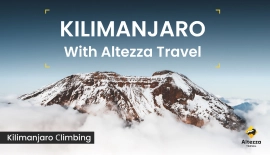

- Best Hikes In The World
- Appalachian Trail
- European Hikes
- Nepal Hikes
- Patagonia Hikes
- See All Hikes
- Mount Kenya
- Mount Kilimanjaro
- Mount Toubkal
- See All Mountains
- South Africa
- New Zealand
- Switzerland
- United Kingdom
- Packing Lists
K2 Base Camp Trek – 12 Most Asked Questions (Expert Guide)
The K2 Base Camp Trek is an epic and challenging trek to the base camp of the second highest mountain in the world!
This remote and rugged trek is considered one of the greatest hikes in the world as it takes you through the dramatic terrain of the Karakoram range with unparalleled views and incredible natural formations. Below is a guide to all the most frequently asked questions about the K2 Base Camp Trek so that you can get all the information you need before embarking on your adventure!
Trekking To K2 Base Camp (12 FAQs)
When is the best time to hike the k2 base camp trek.
The best time to hike to K2 Base Camp is between July and August . Although, the trekking season runs from mid-June to mid-September, so it is possible to trek anytime during those months. It is not recommended to trek in early-June because the snow has not yet melted away. Thus, passes above 3,000 meters are closed until enough snow has melted away to enable hiking. Gondogoro La and many of the other passes will also close by the end of September due to the return of heavy snowfall as the seasons change.
See more on attempts at K2 Winter Ascents .
Important Consideration
If you choose to hike towards the end of the trekking season, you also run the risk of having to cross Gondogoro La without any additional support as the Mountain Rescue Support Team are only available up until early September.
What is the weather like on the K2 Base Camp Trek?
The weather you’ll experience on the trek depends on what time of year you choose to hike. July and August are the most popular trekking months. This is when the skies are more likely to be clear and the weather more stable. While the weather during the trekking season is generally quite good, hikers should always be prepared for anything as mountain conditions can be very unpredictable - especially in the higher reaches. You can expect strong winds, rain and snow as you hike. But hopefully you’ll experience mostly clear skies. Temperatures on the mountain range from below freezing at night to quite warm during the day. So it is advisable that you pack multiple layers of clothing that you can easily put on and remove as the temperatures change. The higher you trek, the colder it gets. Temperatures also get significantly colder as you reach the glacier so make sure you pack the right clothes to keep you warm.
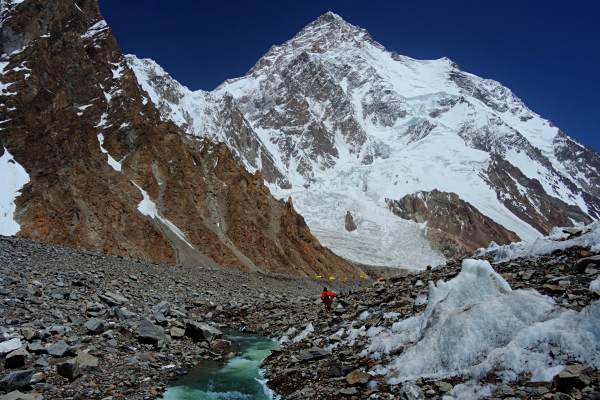
Photo by Zacharie Grossen
How long is the K2 Base Camp Trek?
Most itineraries for the K2 Base Camp Trek are between 21 and 25 days long. Though the number of days you will actually be trekking to the base camp is about 14 (weather permitting). The long itineraries generally include meeting with your hiking group and guide, sightseeing in Islamabad and Skardu, travel to the starting point at Askole , making the trek and travelling back to Islamabad. Many itineraries also include one or two extra days in case of bad weather that may cause delays or prevent trekking.
How difficult is the K2 Base Camp Trek?
The K2 Base Camp trek is long and strenuous. You should have a good level of fitness and be in good health if you are planning to take on the challenge. There isn’t a proper trail on the Baltoro Glacier , which you’ll be trekking on for a couple of days, so it is quite slow going and difficult at times due to loose scree. If your trip includes crossing the Gondogoro La, you will need to know how to use crampons and an ice axe . It is recommended that you have done some winter hiking in snow and at high altitude before taking on this trek.
Can I trek to K2 Base Camp independently?
You cannot hike the K2 Base Camp Trek independently. All travelers must be accompanied by a licensed guide.
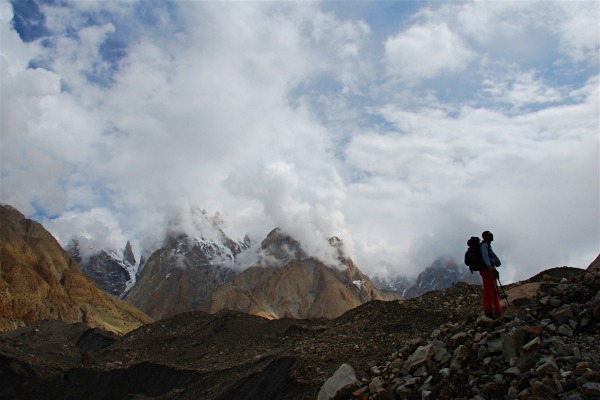
Photo by Stefanos Nikologianis
How much does the K2 Base Camp Trek cost?
The cost of the K2 Base Camp Trek varies depending on the tour operator you choose and the length of the trip you book for.
Below is a breakdown of the trek costs according to budget, mid-level and luxury options.
You can find budget tour operators offering the K2 Base Camp Trek for about $1500 - $2300. We don’t recommend booking through these tour operators unless you absolutely have to. The lower cost means less food and very basic amenities.
Mid-level tour operators will cost you between $2500 and $3500. You can expect a good trek with added comforts of chairs, tables, good tents, quality meals and a generator to keep everything charged. The tour operator should offer visa support and communicate all necessary information to you before your trek. You will also likely have a western guide accompanying the local Balti guides. Mid-level tour operators offer everything you need for the K2 Base Camp Trek and are worth spending the extra few hundred bucks on.
Luxury tour operators offer the most comfortable and well-planned treks to K2 Base Camp with several western guides, comfortable camping furniture, air mattresses and plenty of food. However, all these extra luxuries come at a cost as these treks could cost you anywhere between $3500 and $5000. These operators cater to the smaller, older crowd who can afford the extra costs.
What gear do I need for the K2 Base Camp Trek?
Gear that you need for the K2 Base Camp Trek can be split up into essentials, equipment, clothing and other accessories.
See more in our essential hiking gear list for multi-day treks .
First and foremost, you will need a good quality duffel bag to keep all your clothing, boots, sleeping bag and climbing gear organized. This bag should have a capacity of about 80L but if you have a large sleeping bag, then consider getting a bigger expedition bag. We recommend The North Face Base Camp Duffel .
During the trek, you will hike with your daypack , so it should be big enough to fit all of your essentials in. We recommend getting a daypack with a capacity between 30L and 45L. This pack will be used to carry snacks, water, a rain jacket, extra clothing layers, sunblock, your camera and your passport. The Osprey Talon 33 is a great daypack choice.
Hiking boots and Alpine boots
Your hiking boots are one of the most important items on your trek so it is essential that you get a good quality pair and break them in before you embark on the K2 Base Camp Trek. For the higher sections of the trek, you will need a good pair of alpine boots . Especially if you’re crossing the Gondogoro La, as you will need to use crampons.
Sleeping Bag
It is vital to have a good quality 4-season sleeping bag so that you don’t freeze at night. A nice, warm sleeping bag will make your nights much easier as you’ll be able to sleep better in addition to being warm and comfortable. We recommend the Outdoor Vitals Summit 0 Degree Sleeping Bag .
Sleeping Pad
Tour operators should provide a sleeping pad for you, but it will most likely be a very thin, foam mat. Unless you’ve booked a luxury trek, we recommend bringing your own if you have one so that your nights will be more comfortable.
We highly recommend using crampons on the K2 Base Camp Trek, especially if you are planning on tackling Gondogoro La. However, if you are trekking in August, you will not need them as the ice would have melted away.
Microspikes
Microspikes, like the Kahtoola MICROspikes Traction System , are cheaper than crampons and are also a suitable option for trekking on ice.
If you are crossing Gondogoro La, we recommend wearing a helmet as there is a high risk of rockfall. Melting ice can cause rocks to become loose and if one happened to fall one you it could be fatal. So better to be safe than sorry.
Harness and locking carabiner
Another item you’ll need if you’re taking on Gondogoro La is a harness so that you can clip yourself onto the fixed rope to prevent falls. The Black Diamond Momentum Harness is a top harness choice.
Trekking poles
Trekking poles can come in handy on the K2 Base Camp Trek as the mountainous terrain is very rugged and uneven. Trekking poles will help you keep your balance as you trek and take some pressure off your knees. We recommend the Black Diamond Alpine Carbon Cork trekking poles.
- Down jacket
- Hard shell rain jacket
- Base layer top
- Trekking shirts
- Base layer bottoms
- Lightweight hiking pants
- Hard shell trousers
- Sun hat and beanie
- Buff or balaclava
- Trekking socks (avoid cotton!)
- Synthetic underwear
Accessories/Other essential items
- Water purification tablets or water filter bottle (like the GRAYL Geopress Water Purifier Bottle )
- First Aid Kit
- A book to read
- Satellite messenger device
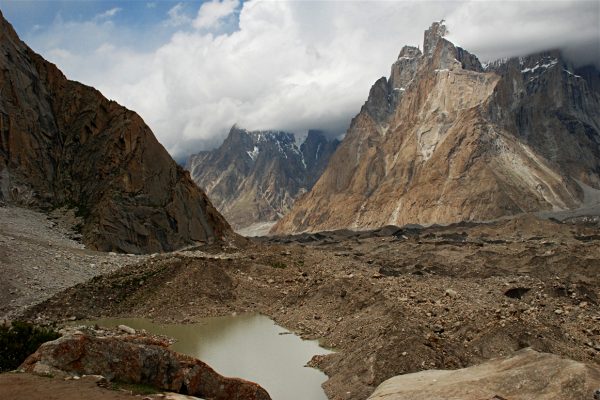
Is the K2 Base Camp Trek dangerous?
As with any high-altitude trek, there are some risks when hiking to the K2 Base Camp. The camp lies at about 5,400 meters so make sure you take enough time to acclimatize during your ascent to ensure you don’t suffer the effects of altitude sickness . When walking on the glacier and the icy terrain, take your time so that you don’t slip and sprain your ankle. There is also the danger of rockfalls when crossing Gondogoro La so wearing a helmet is highly recommended.
Which route should I take for the K2 Base Camp Trek?
There are a few different routes that tour operators offer for the K2 Base Camp Trek, although most follow the easiet route that starts and finishes at Askole (avoiding Gondogoro La). This route is the most popular because it doesn’t require technical skills and offers some variability as you can decide to take a detour to the Trango Towers Base Camp or stay overnight at the Broad Peak Base Camp. If you do want to tackle Gondogoro La, it is still recommended to start at Askole as it allows for better acclimatization. This route requires some technical skill when you cross the high mountain pass. The trail then descends the other side and follow the valley until you reach the village of Hushe.
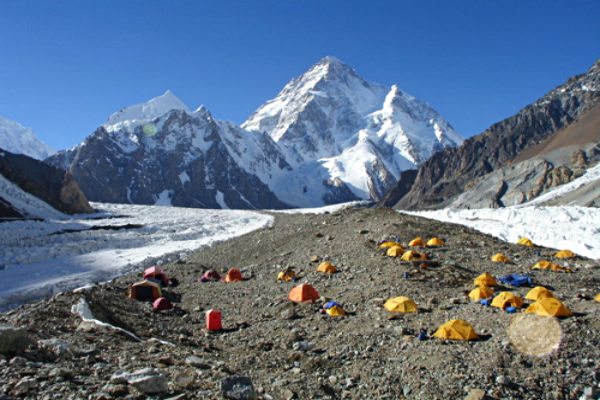
Photo by Johncanivley
Is it safe to travel to Pakistan?
The British Foreign and Commonwealth Office (FCO) have changed their recommendations regarding travelling to Pakistan for trekking purposes by removing their advice to avoid all but necessary travel for Skardu and Gilgit. However, they still advise against travelling on the Karakoram Highway. It is considered safe to travel within the trekking region. You can find out more about security in Pakistan from the FCO’s website .
Do I need travel insurance for the K2 Base Camp Trek?
You do need travel insurance if you are planning on hiking the K2 Base Camp Trek. Make sure you get a plan that covers any medical emergencies, repatriation and emergency helicopter rescue. You should have a minimum coverage of $200,000 and ensure that the policy covers mountaineering and high altitude trekking up to 5,600 meters.
See more in our guide on the best hiking insurance .
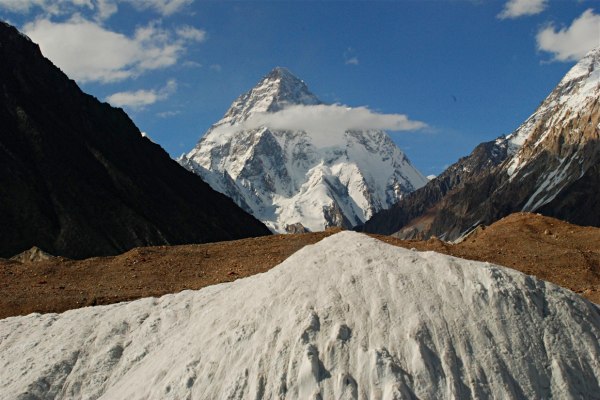
K2 Base Camp Trek vs Everest Base Camp Trek - which is the better trek?
Wondering whether you should hike to K2 Base Camp or Everest Base Camp (EBC)? Here are some of the main differences between the two iconic treks to help you decide which one is right for you. The Everest Base Camp Trek sees tens of thousands of trekkers every year. Its popularity means that the routes are very well maintained and difficult to miss. Due to safety concerns regarding travelling in Pakistan, the K2 Base Camp Trek sees far fewer people and has only quite recently become more of a consideration for avid hikers. This also means that the K2 Base Camp Trek is much quieter and less crowded than the EBC trek. So if you want a more remote and isolated adventure, then K2 Base Camp is the trek for you. You get pristine views of the 8000ers around you from the K2 Base Camp Trek and witness the incredible convergence of glacier and rock at Concordia. The scenery along the EBC trek is also very different and varies from forests and rivers to icy rocks and alpine terrain. Meanwhile, the K2 Base Camp trek is quite dry and dusty before ascending into the rocky mountains icy glaciers. Despite being similar in elevation, the two treks are completely different and you should choose the one you think you’ll get the most out of. Maybe you’ll even have the opportunity to do both one day!
Continue browsing...
See more information on Asia . Or check out these other Asian Hiking articles:
- Hiking in India
- Guide to Climbing Everest
- Best Hikes in Nepal
- Classic Annapurna Trek
- Best Hikes in Asia
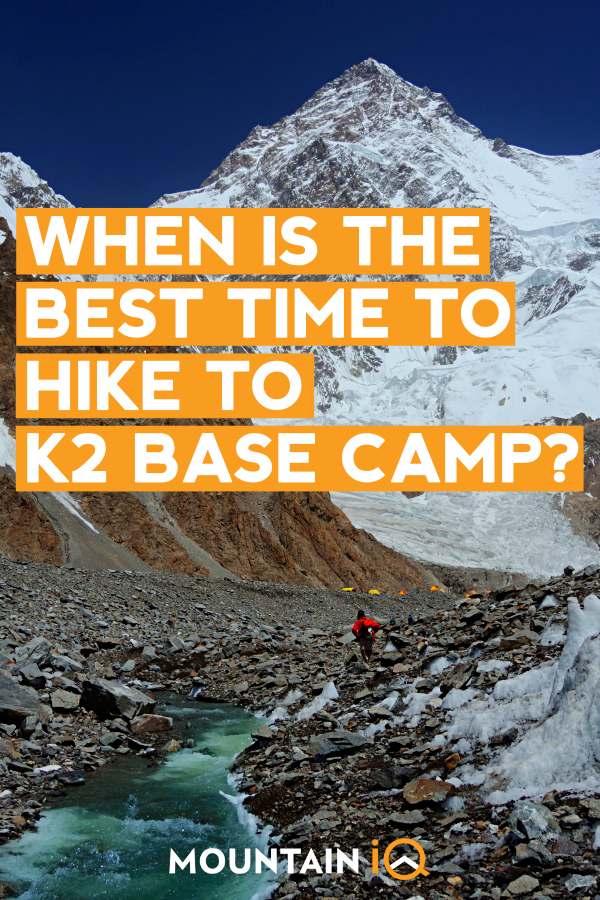
About the author
Adie Marais
Adie is a nature and wildlife lover living in Cape Town, South Africa. Growing up, she had many opportunities to explore the outdoors by hiking, going on safaris and venturing into the karoo with her family. This led to her love of animals, the environment and discovering new places to explore.
Leave a Reply
Your email address will not be published. Required fields are marked
Very helpful and informative. Thank you. People like you are priceless
I have a question which can only be answered by people who have been to the base camp, so after Askole, you walk along side a river to Concordia, and you hardly walk on ice. And the river valley is quite wide too. So if someone has a special off-road jeep why don’t they just drive along the river to base camp instead of walking?
Thank you for such detailed and informative content. This is really helpful for us. Thank You. Keep it Up.
We work with local guides to offer great value adventures at unbeatable prices.
National Geographic content straight to your inbox—sign up for our popular newsletters here
You can still climb Mount Everest. Here’s how to do it responsibly.
New rules are changing the Everest Base Camp hiking experience, aiming to protect the Himalayas’ Sherpa communities and help trekkers make a more positive impact.

Rising to 29,032ft on the border between Nepal and Tibet, Mount Everest — known as Sagarmatha by the Sherpa people of Nepal — has held an almost mystical allure for climbers and hikers since it was first summitted by New Zealand’s Edmund Hillary and Sherpa mountaineer Tenzing Norgay in 1953.
But 2024 marks a significant moment in the story of the world’s tallest mountain. As mountaineers gather in Nepal for the start of the spring climbing season, they face a raft of new rules and restrictions.
Introduced by the regional government, the new Base Camp Management Procedure is intended to improve safety, support local communities and shrink the mounds of rubbish building up on Everest. From wearing mandatory GPS trackers to carrying their faeces down the mountain, climbers have more to consider than ever before.
However, only a tiny fraction of travellers to Everest actually visit the summit. Most trekkers set their sights on surrounding Sagarmatha National Park, the Everest viewpoint at Kala Patthar and Everest Base Camp — the tent village used by mountaineering expeditions, perched at 17,598ft beside the Khumbu Glacier.
Offering a fascinating insight into the world of high-altitude climbing, Base Camp is the only place where hikers will be affected by the new rules for mountaineers. Here’s what you need to know to visit Everest responsibly.
What’s changed at Everest Base Camp?
Trekkers can still end the two-week Everest trek with a day trip from Gorak Shep to the mountaineers’ tent village at Everest Base Camp, but those who wish to stay overnight may find it harder to arrange. The new rules ban commercial enterprises at Base Camp, including the bakeries and massage tents that used to cater to day-trippers; you may still be able to get a cup of tea and a bite to eat, but don’t expect luxuries.
Can I get to the summit?
Climbing Everest is a more serious undertaking than trekking to Base Camp. Around 600 people complete the perilous ascent every year, but it requires months of preparation, support from a mountaineering agency and fees of over £80,000. If you join an expedition, the team will guide you through the new climbing rules, including where to get hold of the faeces bag provided by the Sagarmatha Pollution Control Committee.

How do I support local people?
Many of the new rules for mountaineers are designed to benefit Sherpa guides and porters, and trekkers can play their part on the hike to Everest Base Camp, too. Since April 2023, it’s been a legal requirement for trekkers in Sagarmatha National Park to hire a licensed Nepali guide through a trekking agency, which provides much-needed employment for Himalayan communities (the Trekking Agencies’ Association of Nepal has a list of registered agencies). Hiring local porters and staying and eating in village teahouses, rather than camping, will also provide work for Sherpa people.
Question prospective trekking agencies to make sure guides and porters are being fairly paid (at least $21 (£17) per day for guides and $18 (£14) per day for porters) and protected by insurance to support their families in case of accidents. Poverty is a big issue in the mountains and some porters still tackle the trails in flip-flops due to the unaffordability of hiking gear; make sure your hired team have appropriate clothing and footwear.
Another option is to travel with a responsible international operator. Intrepid and Exodus are two major travel companies that use local guides and porters and have established programmes to train the next generation of mountain workers in Nepal.
Before you trek, visit the Kathmandu Environmental Education Project (KEEP) in the capital’s traveller hub neighbourhood of Thamel to learn more about responsible trekking. Visit again at the end of your trek to donate any unwanted gear; it will go to porters who need it.
How do I protect the environment?
Climate change is causing glacial melting and flooding across the Himalayas. If you want to reduce your carbon footprint, take a bus and hike to the trailhead at Lukla, rather than flying from Kathmandu. It adds six days to the two-week Everest Base Camp trek, but will bring income to villages off the main trail.
Regardless of which route you’re trekking, try to stay in lodges that heat water and generate electricity using solar power or water-powered generators. If travelling independently, look out for this equipment as you enter villages. If joining an organised trek, mention to the agency that lodges that have taken sustainability measures are your preferred accommodation.

What can I do to help reduce overtourism?
In 2023, nearly 60,000 people visited the spectacular sweep of mountains, glaciers, Buddhist monasteries and Sherpa villages covered by Sagarmatha National Park. Although the park covers 443sq miles, most trekkers follow a well-established trail to Base Camp, via Namche Bazar, Tengboche, Periche or Pangboche and Gorak Shep. You can spread the economic benefits of tourism by breaking your trek at smaller villages and guesthouses, rather than the busy main overnight stops.
Also investigate quieter trekking routes. There are many rewarding alternatives or add-ons to the Everest Base Camp trek inside Sagarmatha National Park, including the dramatic hike to the jewel-like Gokyo Lakes and the challenging Three Passes Trek, linking three breathlessly high, prayer-flag-strewn mountain passes rising to 18,160ft at Kongma La.
Is there specific mountain etiquette?
Most Sherpas are Buddhist, so treat prayer flags and other religious objects with respect. Ask before you take photos of people, remove your shoes before entering homes or monasteries, walk clockwise around stupas and avoid pointing your feet towards people or images of Buddha. Locals dress modestly, so trekkers should do the same — shorts and T-shirts are fine for walking but avoid revealing outfits. Public displays of affection can also cause embarrassment.
Begging is common on the trails. If you want to help, donate to a local charity or approach schools or community centres rather than handing out gifts that won’t make a lasting difference. Books, stationery, toothpaste, toothbrushes and unwanted trekking gear are useful items to donate.
What can I do to protect the trails?
Stick to them. It’s important that trekkers always follow established paths rather than hiking through undergrowth, and avoid shortcuts between switchbacks, as these can increase erosion, destabilising the slopes. Also be careful to respect nature while out in the wilderness. Don’t pick flowers, crush plants or feed wild animals that you see on the trails. It’s best to stay a fair distance away from the local wildlife, as animals can carry diseases and feeding them might make them ill or change their natural behaviour.

How can I clean up Everest?
Avoid bringing single-use plastic packaging and plastic bags onto the trails. Don’t drop litter while hiking; consider bringing an empty canvas bag so you can gather up any rubbish you find on the trails and transport it back to Lukla, which has a government-backed rubbish-removal service. Carry toxic spent batteries from equipment such as torches or GPS devices back to Kathmandu.
Throw-away plastic water bottles are the bane of the Himalayas; it’s far better for the environment to carry a reusable bottle and purify your own water with a filter pump or chemical purification tablets. Use proper toilet facilities wherever possible; if you have to go while out on the trail, dig a hole well away from water sources and fill it in when you’re done.
Related Topics
- ADVENTURE TRAVEL
You May Also Like

Whale watching is booming. Here’s how to do it responsibly.

How to plan the ultimate adventure in the Himalayas, from beginners' hikes to Everest base camp
For hungry minds.

It’s summer in Antarctica. Here’s how to explore responsibly.

10 whimsical ways to experience Scotland

The essential guide to visiting Scotland

What it's like to hike to the end of the world in Chile's Tierra del Fuego

Banff, Jasper and more: 4 wild places for Canadian outdoor adventures
- Environment
- Perpetual Planet
History & Culture
- History & Culture
- History Magazine
- Gory Details
- Mind, Body, Wonder
- Paid Content
- Terms of Use
- Privacy Policy
- Your US State Privacy Rights
- Children's Online Privacy Policy
- Interest-Based Ads
- About Nielsen Measurement
- Do Not Sell or Share My Personal Information
- Nat Geo Home
- Attend a Live Event
- Book a Trip
- Inspire Your Kids
- Shop Nat Geo
- Visit the D.C. Museum
- Learn About Our Impact
- Support Our Mission
- Advertise With Us
- Customer Service
- Renew Subscription
- Manage Your Subscription
- Work at Nat Geo
- Sign Up for Our Newsletters
- Contribute to Protect the Planet
Copyright © 1996-2015 National Geographic Society Copyright © 2015-2024 National Geographic Partners, LLC. All rights reserved
- How to Tie a Tie
- Best Coffee Beans
- How to Shape a Beard
- Best Sweaters for Men
- Most Expensive Cognac
- Monos vs Away Luggage
- Best Luxury Hotel Chains
- Fastest Cars in the World
- Ernest Hemingway Books
- What Does CBD Feel Like?
- Canada Goose Alternatives
- Fastest Motorcycles in the World
Every rider should know these mountain bike climbing basics
3 things that make mountain bike climbing easier.
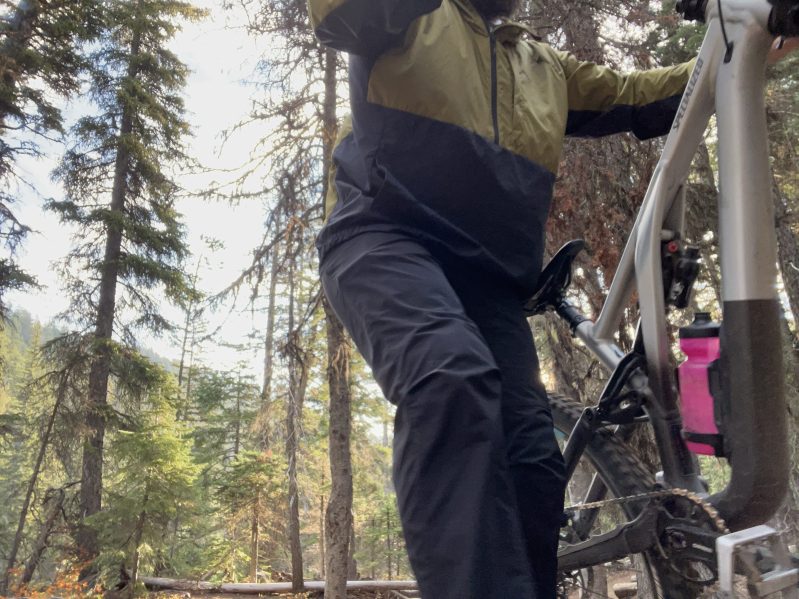
Unless you are riding a chair lift at a bike park or doing some shuttle laps with your friends, riding your mountain bike up the hill is a necessity. Unfortunately, mountain bike climbing is a must—we have to push through the ups to enjoy the downs.
Your seat is important
Gear choice, other tips and tricks.
Fitness is a significant aspect of mountain bike climbing. If the simplest of climbs have you gassed, you will hate every minute of it. But for those of us who do have decent fitness, we can turn the chore of mountain bike climbing into fun.
But to make the ups fun, knowing a few basics to make climbing more manageable is helpful. While climbing will likely be more challenging than descending, if you start regularly using these basic mountain bike climbing practices, you may find that you enjoy pedaling your bike uphill.
- The best long-distance bike trails across the U.S.
- These are the essential outdoor knots every outdoorsman should know
- 3 must dos before riding your new mountain bike
Knowing what to do with your mountain bike’s seat , also known as your saddle, is incredibly important. With dropper posts becoming standard on nearly every modern trail bike on the market, the added convenience of adjustable saddle height on the fly can also add confusion. Knowing where and when to position your saddle can make mountain bike climbing much more manageable.
Let’s look at the two most common mountain bike climbing scenarios you will likely encounter: a forest road climb and a more technical singletrack climb.
Forest road
For this climb, you will want the dropper post to be fully extended. Having the dropper post and saddle fully extended will put you in the most comfortable climbing position.
With a range of dropper post sizes that will work on your bike, you need to find the one that works best for you. You want a dropper post with enough travel to get the saddle out of the way on descents but isn’t so long that you can’t reach the pedals. You should be able to have the dropper post fully extended and keep a slight bend in your knee while pedaling.
Technical singletrack
The forest road is easy, as it usually involves just putting your head down and pedaling. Jumping over to singletrack climbing is more complicated, as it can often encompass climbing up rocks, roots, or other tricky obstacles. This usually means more movement in with your dropper post.
Traction is the most critical factor when climbing, and traction comes from having our butt on the saddle. Sitting on the saddle puts more weight on the bike’s rear, helping prevent the rear tire from slipping. However, if there is something like a rock shelf we need to get up on a climb, we won’t be able to do that from our saddle. Here is how you should attack that obstacle.
- Try to gain as much momentum as possible while seated before the rock shelf. Momentum is your friend when attempting to climb any obstacle.
- Just before you lift your front tire onto the obstacle, drop your saddle an inch or two and stand up. You will need to stand to properly get yourself and the mountain bike up and over the rock shelf, and having your saddle out of the way a bit will allow the bike to move more freely underneath you.
- Once up and over the obstacle, immediately extend your dropper post all the way and sit to regain traction and give yourself a rest.
Regarding gear choice , we often think we should be in the easiest gear possible for a climb. Climbs are challenging, and you aren’t going fast, so it makes sense that this would be the case. However, staying in the easiest gear can hinder you quite a bit, especially in more technical climbs.
Often, the easier gears don’t provide enough leverage to propel your bike up and over something. It is more difficult to gain momentum in your easiest gear, and when you try to get up and over an obstacle, you can end up spinning your cranks because the gear is too easy.
Instead of focusing on being in the easiest gear, find an appropriate pedaling cadence you can maintain. Work on keeping that cadence consistent and smooth. Focusing on a consistent cadence will force you to shift your gears up and down to maintain it.
Smooth, consistent pedaling is a major factor in successful mountain bike climbing. The only way to accomplish a smooth and consistent pedal cadence is to break out of the easiest gear.
If you have ever attempted to climb rocky, technical trails, you have likely smacked your pedals and crankarms on many rocks. This is appropriately called a “pedal strike.”
Pedal strikes are no fun and can stop you in your tracks during a challenging climb, hurling your body forward onto the handlebars. A way to prevent the majority of pedal strikes is to learn ratcheting.
Ratcheting is when you do a partial forward pedal, then back-pedal to a position to regain leverage, and continue pedaling forward. This is done in places where a full pedal rotation will result in pedal strikes.
Learning to ratchet is easy. First, start doing it on flat ground or smooth parts of the trail to get the motion down. Then, take it to a small rock on the trail or up a curb. Practice doing it with either foot forward until you don’t have to think about it. You’ll be surprised with how fast you pick it up.
Learning ratcheting will improve your climbing skills and leave your body and bike thanking you.
Editors' Recommendations
- The 3 best ways to stay hydrated while mountain biking
- Garmin, Seiko, G-SHOCK, and more: Our picks for best outdoor watches in 2024
- 3 things you need to know about mountain biking in Sedona
- Is the PEARL iZUMi X-Alp Launch mountain bike shoe for you?
- This van life camper van sleeps 8, goes everywhere, and you can rent it for less than a hotel would cost

If you have been mountain biking for a long time, the content of this article won’t come as much of a surprise to you. You likely already know the quirky things that make a mountain biker, well, a mountain biker.
If you are not a mountain biker, or perhaps you are fresh to the sport, some of these quirks and idiosyncrasies may come as a bit of a surprise for you. For some, it may shed some light on why a loved one is so weird. For others, it will be like looking into a crystal ball, showing an inevitable future you can’t run away from.
As with any adventure sport, getting into mountain biking can be an exhilarating journey, but a pricey one at the same time. Whether you're a beginner mountain biker or an experienced rider, it's important to invest in a good bike because it will ultimately hold up longer and handle better on the trails.
But just because it's important to buy a good mountain bike doesn't mean it has to empty your wallet. These 10 models — all priced under a grand — are among the most affordable bikes worth springing for if you're looking to hit the trails. Whether you're a newb just starting out or a seasoned trail rider, these are the best mountain bikes under $1,000.
Old habits can certainly die hard, and the mountain bike industry is no expectation. For almost two decades, we have seen significant changes proposed in the mountain bike industry face opposition, only to be accepted as the new standard a handful of years later.
And while this opposition to change in mountain biking does have something to do with new technologies not being better than previous ones, opposition to change itself is a factor.

Best Tanzania Tour Operator and Safari Agency, We organize Kilimanjaro Trekking, Mount Meru Hiking Tours, Tanzania Safaris to the most popular National Parks and Kenya Safaris.
Recent Posts

Best Ways to Get Your Dream Photos On Game Drives

Trek Kilimanjaro Now
- 7582 Moshi Tanzania.
+255 745 918 184
- [email protected]
- luxury Safari
- Private Big-5 Safari
- Serengeti Safari
- Mid-Range Safari
- Joining Safari
- Budget/Camping safari
- Kilimanjaro climbing
- Meru Hiking
- Mt.Kenya Hiking
- Moshi Day Trips
- Arusha Day Trips
- Tanga Day Trips
- Zanzibar Day Trips
Zanzibar Beach Holidays
- Tanga Beaches
- Kilimanjaro Departures
- Safari Departures
- +255745918184
- Book with Us
Kilimanjaro Climbing / Trekking by African Trek & Travel
Climbing Kilimanjaro is an extraordinary adventure, offering a unique blend of natural beauty, challenge, and the opportunity to experience diverse ecosystems while aiming for the summit of Africa's highest peak
Tanzania Safaris by African Trek & Travel:
Explore the untamed beauty of Tanzania's wilderness with African Trek & Travel's expertly crafted safaris. Dive into the heart of iconic national parks like Serengeti and Ngorongoro Crater, encountering Africa's majestic wildlife up close.
Zanzibar Beach Holidays with African Trek & Travel:
Indulge in ultimate relaxation and cultural immersion with African Trek & Travel's Zanzibar beach holidays. Experience the tranquility of pristine beaches and the allure of Zanzibar's rich heritage.
Request Your Quote
Kilimanjaro climbing joining group for 2024.
A Kilimanjaro climbing group refers to a collective of individuals who join together for the purpose of summiting Mount Kilimanjaro, Africa's tallest peak. Climbing in a group offers several advantages such as Shared experience,Shared Cost,Safety and guidanceand Support and camaraderie.
Click here to See Group Depature Dates for 2024
Tanzania Safari & kilimanjaro Climbing
we capable of organise mountain kilimanjaro trekking | lemosho route | machame route | marangu route | rongai route | ubwe route as well.

ABOUT AFRICAN TREK & TRAVEL
African Trek and Travel is a local Tanzanian tour company, owned and run by Tanzanians. With us you can ascend Mount Kilimanjaro, go on a safari, or take a beach holiday to the island of Zanzibar. Since our operations headquarters is in Moshi town, just on the slopes of Mount Kilimanjaro, we are always prepared to organize hiking, safaris and cultural tours.
QUALIFIED TOUR OPERATOR,
We insist on a very high tour quality and therefore, only work with qualified and professional tour guides. In fact, we reject up to 90% of the tour guide applications that we get. The result speaks for itself with our customers giving us great reviews. We have an average review of 4.8 out of 5.
AFFORDABLE PRICES,
Amazing travel experiences are priceless. However, knowing that you got the best price, makes them even better. We always aim to give the best price possible on all tours, while ensuring you also get the best experience too as you travel with African Trek & Travel.
What Customer Say About Us
Best kilimanjaro climbing groups.
Scaling Kilimanjaro Together: The Power of Climbing Groups
Kilimanjaro climbing groups are collaborative expeditions that bring together individuals with a shared passion for conquering Mount Kilimanjaro. These groups offer a range of benefits, including enhanced safety through experienced guides, a supportive community of fellow climbers, shared costs for a more budget-friendly adventure, and a heightened sense of achievement through collective accomplishment. Climbing in a group amplifies the experience, fostering teamwork, camaraderie, and the opportunity to create enduring memories while summiting one of the world's most iconic peaks.
Kilimanjaro
You can join groups with fixed departure dates, and these are available during 9 months of the year. These months are; February, March, June, July, August, September, October, November and December.
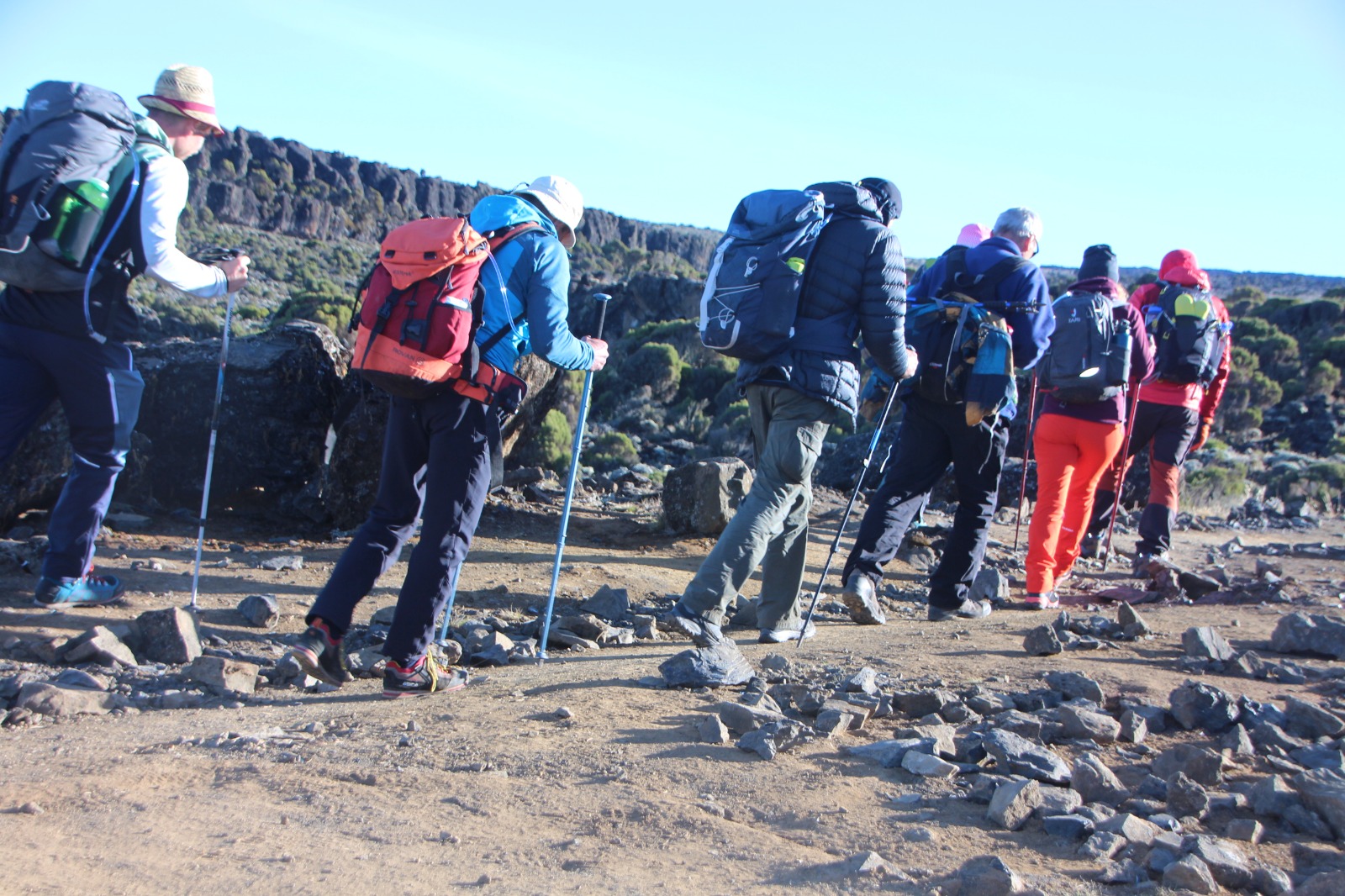
Kilimanjaro Group Departures
African trip budget & luxury safari.
Explore The most popular mid-range and luxury trip in Africa.
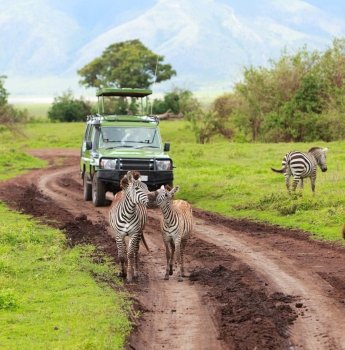
3 Days Joining Group Safari

4 Days Joining Group Safari

5 Days Hot Balloon Safari

6 Days Private Big 5 Safari
Popular tanzania safaris, serengeti migration packages, kilimanjaro climbing tours & zanzibar beach holidays 2024, 2025..
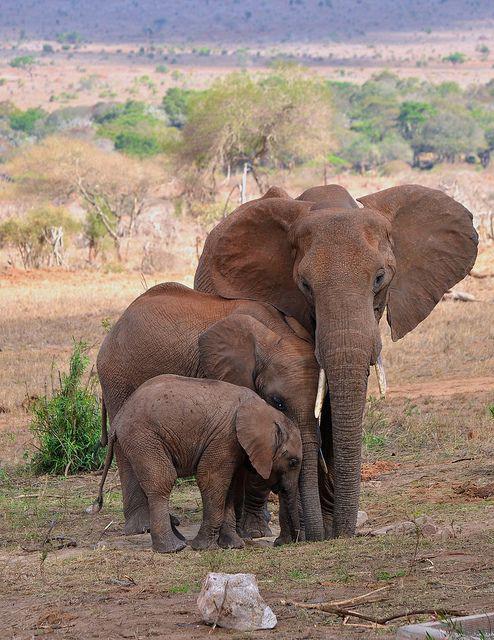
Tanzania Serengeti Safari
The wildebeest travels across Kenya's Masai Mara plains before continuing south into Tanzania's Serengeti and the rim of the Ngorongoro Crater.

Kilimanjaro Climbing
Mount kilimanjaro is a dormant volcano in tanzania it has three volcanic cones kibo mawenzi and any trip operator has a number...

Zanzibar is an amazing home for beach tours and holidays in the whole of East Africa. It is marvellous to..

Mount Meru Climbing
The Mount Meru is a dormant stratovolcano located 70 kilometres (43 mi) west of Mount Kilimanjaro in southeast Arusha Region found in Tanzania. At a height of 4,562.13m, Now you may choose your holiday package depend on number of days then let us plan for you .

Wildebeest Migration Safari
After calving in the southern part of Tanzania's Serengeti near the Ngorongoro Conservation Area, the animals journey through the Serengeti up and around.
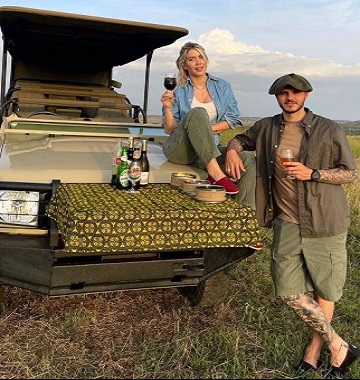
Ngorongoro Crater Package
The area is named after Ngorongoro Crater, a large volcanic caldera within the area. The Ngorongoro Crater its name, meaning “the black hole
TANZANIA SAFARI PACKAGES, LUXURY, MID-RANGE, BIG-5, JOINING(SHARING SAFARI)
Explore Beauty OF Tanzania From Different Safari Packages
Experience the breathtaking landscapes and diverse wildlife of Tanzania through our meticulously curated safari packages. Whether you're seeking a luxurious escape, a mid-range adventure, the thrill of encountering the "Big Five," or the camaraderie of a joining (sharing) safari, we offer tailored experiences to suit every traveler's preferences. Our expert guides will lead you on an unforgettable journey, unveiling the wonders of Tanzania's national parks and reserves. Choose your safari style and immerse yourself in the beauty and raw nature of Africa.
15% OFF, 2024
6 days big-5 safari,arusha n.p,manyara, serengeti, ngorongoro., 3 days joining safari,ngorongoro crater and lake manyara national park, 4 days mid-range safari,lake manyara,tarangire and ngorongoro., kilimanjaro climbing, trekking & hiking tour packages.
Explore Mount Kilimanjaro Routes

6 Days Machame Route


7 Days Machame Route

7 Days Lemosho Route

8 Days Lemosho Route
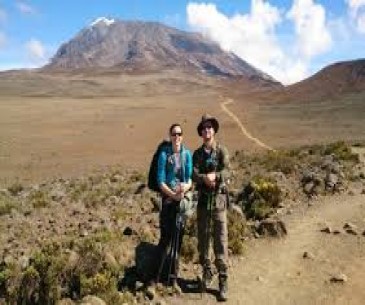
5 Days Marangu Route
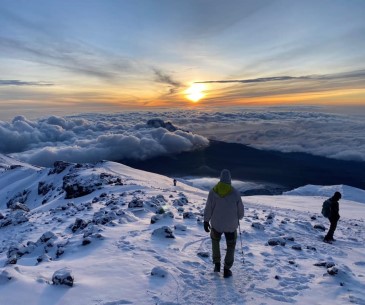
6 Days Marangu Route

6 Days Rongai Route

6 Days Umbwe Route
Combination safari in tanzania.
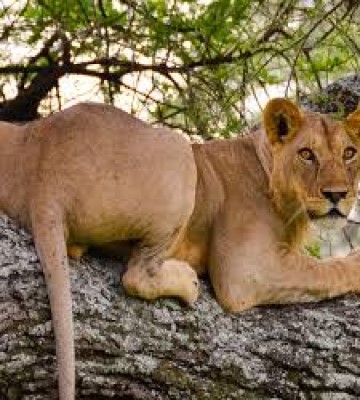
12 Days,Kilimanjaro Climbing+Tanzania Safari
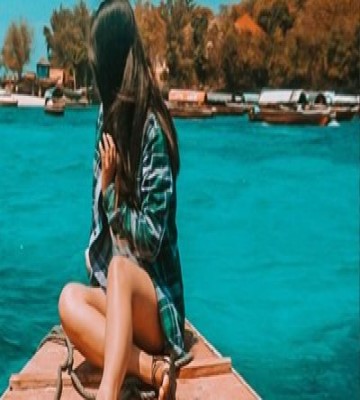
10 Days Kilimanjaro Climbing+Zanzibar Beach Holidays.

9 Days Climbing Kilimanjaro+Tanzania Safari.
Zanzibar beach holidays popular packages.
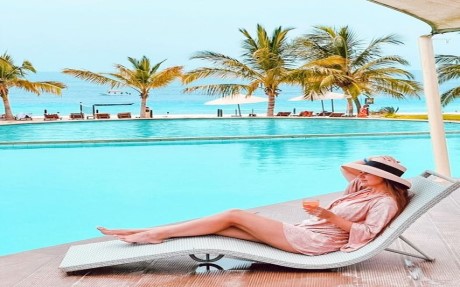
3 Days Zanzibar,city tour in zanzibar
Prison island tour in Zanzibar may be a half-day tour, prison island is otherwise referred to as Changuu island, the name "prison island" came after this special island being ....
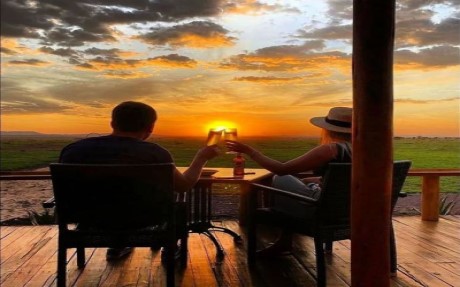
6 Days Honeymoon Tour in Zanzibar
Tanzania honeymoon packages are designed with all needed ingredients for safari & Zanzibar beach holidays to make this special event for newly married....
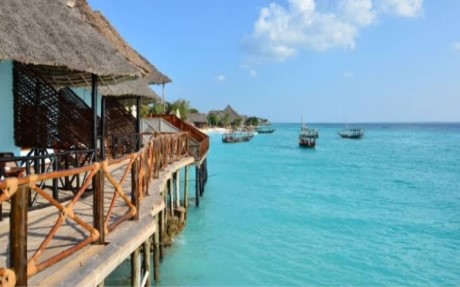
8 Days Zanzibar Summer Fun Cruise.
8 days group travel experience in Zanzibar bringing together travelers from different parts of the world.Dolphin Tour,Mnemba Island,Prison Island,City Tour.....
Unforgettable Travel Experiences With African Trek & Travel Get Your Guide

Our Explorers
Destinations
Luxary Hotel
Special Offers & More From African Trek Travel
Send now and get the best deals straight in your inbox!
A spectacular route to Mera Peak
Mera peak summit day, why climb with adventure peaks, you may also like:, dates & prices, availability, what's included, what's excluded, trip dossier, for uk based clients:, for non-uk based clients:, leave a review.
Kilimanjaro Tours & Treks

Africa’s tallest peak creates an instantly recognizable silhouette.
Rising from the acacia forests and scrublands at the border of Kenya and Tanzania . At 19,343ft, the world’s tallest freestanding mountain can seem imposing, but that doesn’t mean it’s out of reach. Our Kilimanjaro tours are made to suit your experience and fitness levels, getting you to the summit with the best team possible. The climb will be challenging! But when you sit at the summit with the sprawling savanna far below, you realize the simple truth: it was all worth it.
Our Kilimanjaro trips
Let's create an exclusive trip for your group.
Which route is right for you?
Despite being longer and more arduous than the Marangu and Rongai trails, the Machame route has emerged in recent years as a popular choice for trekkers. The 25 miles trail passes through cloud forests and moorland zones to the glaciated precipices of Kibo’s south face. Unlike the Marangu and Rongai routes, trekkers descend via the Mweka route – a steep but scenic path through dry mountain desert and lowland forest.
A trail that winds along the north-eastern side of the mountain near the Kenyan border, Rongai offers up a different side to Africa’s most famous mountain. The route attracts a lower number of climbers than Marangu and Machame, which means the wilderness feels particularly pristine. Fewer people mean there’s a greater chance of seeing wildlife on the Rongai trail than on the other routes. This route also approaches Mount Kilimanjaro through rural heartlands, allowing trekkers to see Chagga village life.
This five-day climb is the most popular and direct of the Kilimanjaro routes, passing through vast grasslands, giant cacti fields and alpine meadows set against dramatic mountain peaks. It’s also the only route where camping is not needed, with trekkers sleeping in huts dotted along the way. The 22 mile uphill walk is well maintained and the views from the summit are striking. As the Marangu route is shorter, the period to acclimatize is also shortened and this has an impact on the trail's overall success rate.
Why choose us
Our Kilimanjaro trek leaders have been voted among the best Intrepid Group leaders in the world and we have a leading reputation within the travel industry.
All our guides and trek leaders have been trained by independent, UK-based medical specialists and are proficient in first aid. They also carry oxygen cylinders on all treks for emergency use.
Our staff live and work in the Mount Kilimanjaro area, which means revenue from all our treks benefit the local economy.
There’s no hidden costs or ‘catches’ in our prices. All tours include sleeping bags, sleeping mat, camping and safety equipment, emergency oxygen and porterage of 1 bag (up to 33lbs). We also include Kilimanjaro National Park entrance fees, climbing fees, camping and hut fees, and insurance for rescue services (just in case!)
Each of our treks begin with a briefing from our experienced English-speaking guide. On the road we operate on a 2:1 principle – that means we have one guide for every two climbers. Your crew will also be joined by dedicated cooks and porters.
We strive to use travel as a force for good. That’s why we choose to give back to the communities we visit, carbon offset all our trips and take our social and environmental responsibilities seriously. We’ve been officially certified as the world’s largest travel B Corp, which means when you choose Intrepid Travel, you can rest assured you’re traveling to improve the planet.
Kilimanjaro tour reviews
Filter by rating
Kilimanjaro: Marangu Route
Articles of Kilimanjaro
What I wish I knew before climbing Kilimanjaro
5 must-visit places in Tanzania (and what it’s really like visiting them)
7 reasons why your next adventure should be in Tanzania
Climbing Kilimanjaro with blind athlete Dan Berlin
Meet the women who climbed Kilimanjaro for human rights
Machame or Marangu? We ask a Leader which Kilimanjaro route is best
Learn more about Kilimanjaro
Mount Kilimanjaro's highest point sits at 19,430 ft.
Average trek duration
It takes between 5-7 days to climb Mount Kilimanjaro.
The best time to trek
The best time to trek Mount Kilimanjaro is in January, February or September.
Kilimanjaro travel FAQs
Do i need a covid-19 vaccine to join an intrepid trip.
Trips from 1 January 2023 onwards
From 1 January 2023, Intrepid will no longer require travelers to provide proof of vaccination against COVID-19 (excluding all Polar trips and select adventure cruises).
However, we continue to strongly recommend that all Intrepid travelers and leaders get vaccinated to protect themselves and others.
Specific proof of testing or vaccination may still be required by your destination or airline. Please ensure you check travel and entry requirements carefully.
Are there age restrictions for trekking Mount Kilimanjaro?
The regulations for climbing Mount Kilimanjaro specify a minimum age of 10 years, with no maximum age, however all Intrepid travelers are required to be over 15 years old.
While there is no maximum age for climbing Mount Kilimanjaro, it is important to remember that the climb is strenuous and presents health risks, especially to people in high risk categories.
Serious consideration should be given to anyone under the age of 18 and over the age of 60.
Will the altitude affect me?
The summit of Mount Kilimanjaro is above 19,000 feet. At this altitude it’s common for travelers to experience some adverse health effects – regardless of your age, gender or fitness. It even happened to Sir Edmund Hillary!
Everyone will adapt to the altitude and thinning air differently. This is why we always try to keep the ascent slow and steady, to allow your body to acclimatize and make your journey to the summit easier.
Some pre-existing medical conditions are known to severely worsen at high altitude and be difficult to adequately treat on the ground, leading to more serious consequences. It is imperative that you discuss your pre-existing medical condition/s with your doctor.
What will I eat?
To reach the summit you’re going to need the right fuel, which is why our cooks will be providing delicious and nutritious meals throughout your trek.
Our porters carry all the equipment and supplies we need and you’ll be treated to some local dishes.
We can accommodate food allergies and dietary requests but please tell us when you book.
It’s also a good idea to bring your own extra comfort snacks from home to keep your energy levels up during more difficult sections of the trail.
What will I drink?
While on the trek, your guides will boil and cool 0.6 gallons of water for you per day. This will ensure the water is safe to drink and you stay hydrated on the trek.
We recommend you pack 3 x 0.2 gallon refillable water bottles. Please note disposable plastic containers are not allowed on the mountain.
Where will I sleep on Mount Kilimanjaro?
Your accommodation will vary depending on the route you choose.
On the Machame and Rongai route you’ll be camping out under the stars with a full-service camping experience.
You don’t need to bring anything except your enthusiasm. Our two-person tents are ideal for expedition trips and feature a flysheet made from ripstop nylon, anti-mosquito netting, reflective guy ropes and a 3000mm waterhead, ensuring you stay warm and dry even in difficult conditions.
If you choose to trek the Marangu route you’ll enjoy basic but comfortable accommodation in wooden A-frame huts with single beds and simple mattresses.
Due to limited accommodation on the mountain, you may need to share a hut with non-Intrepid passengers and/or members of the opposite sex.
These sleeping huts are not equipped with facilities however there are seperate bathroom huts containing shared toilets and washing facilities.
What if I’ve never trekked before?
Although no mountaineering experience is required, a good level of physical fitness is necessary. You’ll need to be comfortable walking 6-8 hours uphill a day.
The distances may not be long but the altitude makes it harder than your average uphill hike.
We recommend increasing your aerobic exercise in the months leading up to the climb, such as by walking, running or climbing stairs.
There is plenty of time available each day to get between huts or camping sites so there is no need to rush, in fact the slower you go the more time your body has to adapt and the more you’ll enjoy the experience.
What should I pack for Mount Kilimanjaro?
Although a guide will always accompany you on the trail, you are unlikely to see your porter (as they are very fast!) except at the huts or the camps. Therefore it is important you carefully pack a smaller day pack you carry yourself. Anything you need during the course of the day should be in your day pack including, most importantly, something warm and something waterproof.
From 2019 your maximum gear allowance is 20 lbs. At the welcome meeting you will be provided with a duffel/kit bag to transfer your hiking luggage into. This waterproof bag minimizes the weight your porter needs to carry and allows you to store excess luggage at the hotel.
Light clothing is generally sufficient until you reach the 12-14,000 feet altitude range provided you always have something warm and waterproof in your daypack. Beyond these altitudes, even if the mornings are glorious, you must always be ready for dramatic changes in the weather, including snow storms. You must have clothing with you in your daypack adequate to the conditions. Please ensure your day pack is large enough to carry these clothes, your lunch box, 0.6 gallons of water and any other items such as camera equipment. Warm clothing is important for the final ascent. The ascents are done at night and this is when the coldest temperatures are experienced. You must be prepared for temperatures of minus 13 Fahrenheit. As a rule you should wear two pairs of socks, two-three layers on the legs and four-five layers on top. A balaclava or neck gaiter and woolly hat are necessary to keep the head warm, while gloves and sunglasses are also needed.
Note: the bag the porter carries for you should not exceed 20 lbs. If bags are too heavy items may have to be removed or the climber may choose to hire an additional porter.
PACKING LIST
• Anorak/parka with hood (waterproof) x 1
• Down jacket x 1
• Sweater/fleece x 1
• Thermal top x 2
• T-shirts x 3, long sleeve shirts x 2-3
• Waterproof trousers or ski pants x 1
• Warm trousers x 2
• Hiking shorts/trousers x 1
• Long thermal pants x 1
• Thermal underwear
• Socks thin and thick x 6
• Hiking boots
• Comfortable closed shoes (for around camp)
• Mittens and ski gloves
• Balaclava and woollen hat
• Sunglasses
• Day pack, approximately 30 litres
• Refillable water bottles - 3 x 0.2 gallon (note plastic containers are not allowed on the mountain)
• Good quality, super-warm 4-season sleeping bag (these can be borrowed from our local operator in Tanzania but this service is on a request basis only - please book your bag at time of booking)
• Thermarest or trekking roll mat. (not required on Marangu route)
• Small first aid kit
• Headache tablets
• Imodium (loperamide)
• Climbers may like to consult their physicians about azetazolomide (Diamox), a drug that many find mitigates the ill effects of altitude, headache, diarrhoea & vomiting.
• Hand towel
• Wet wipes
• Toiletries
• Head torch and flashlight with spare batteries (needed for summit night)
• Sunblock and high SPF lip balm
• Camera, film, extra batteries - you will not be able to recharge on the mountain but can at the Kibo Hotel before and after the climb.
EQUIPMENT HIRE
Additional hiking equipment can be hired in Marangu. However, on a trek such at this, tried and tested equipment purchased from home may be more comfortable and of a better fit. If you do require any gear, please speak to your leader at the welcome meeting on Day One. Below is a list of some of the equipment available and the rough rental costs.
• Sleeping bag - Free (must be requested through your booking agent prior to departure)
• Thermarest/trekking roll mat - USD20 (not required on Marangu route)
• Trekking poles – USD10
• Waterproof trekking boots - USD30
• Gaiters - USD10
• 30 litre day pack - USD20
• Ski sunglasses/Sun goggles - USD10
• Waterprooj jackets/hooded parkas - USD15
• Warm fleece sweater - USD10
• Light hiking trousers and shorts - USD10 each
• Warm hiking trousers - USD15
• Trekking t-shirts/long-sleeved shirts - USD10 each
• Mittens/ski gloves/scarf/sun hat - USD10 each
• Balaclava/ski mask- USD5
When is the best time to visit Mount Kilimanjaro?
Kilimanjaro's location near the equator is a great advantage, with very little seasonal variation in climbing conditions.
The rainy seasons from March to May and November to December may make the track a little slippery.
Generally speaking, January, February and September are considered the best times to climb the mountain.
What will the weather be like at Mount Kilimanjaro?
Part of what makes Kilimanjaro so unique is the diversity of ecosystems and micro-climates on its slopes. This same benefit is what makes predicting conditions a challenge.
You should trek expecting everything from tropical rainforests to sub-zero landscapes. The weather is prone to shift without warning and it is best to be prepared for all possibilities.
What are the toilet facilities like at Mount Kilimanjaro?
In a word? Improving. Until recently the toilet facilities left much to be desired but thankfully the park authorities have started to tackle the problem.
Some state-of-the-art eco-toilets have now been built at the major campsites.
There is the option to arrange a toilet tent for the entire trip. Please speak to your booking agent about the cost of this service.
What is the average success rate for climbing Mount Kilimanjaro?
The success of each climb is dependent on a number of varying factors, such as the weather on Mount Kilimanjaro and the age and fitness of each trekker. With that said we have achieved a success rate of 75% to Uhuru Peak across our three climbing routes.
Do your mountain guides carry first aid kits?
Yes. We carry multiple, comprehensive first aid kits and our mountain guides are fully trained on their use. All of our mountain guides are first-aid qualified.
Are your mountain guides trained to recognize symptoms of Acute Mountain Sickness (AMS)?
Absolutely! Intrepid have invested in the highest standards of training of any operator on Kilimanjaro. This includes advanced altitude training delivered by a UK doctor and altitude research specialist. One of the key elements of this is training on the Lake Louise altitude assessment system, which allows our mountain guides to effectively monitor clients constantly whilst on Kilimanjaro and assess if they are suffering from AMS and, if so, how severe that AMS is. We also train them on how to respond in the case of a moderate or severe case of altitude sickness – which will always mean organizing for the affected client to descend immediately. During your briefing on the first evening of your trip, your mountain guide will talk to you about symptoms of AMS and how to recognize them.
Do you carry medicines for altitude?
Yes – there are two key, potentially life-saving drugs that our teams carry on the mountain. These are Dexamethasone and Nifedipine and they used to treat cerebral and pulmonary oedema, which are the two potentially life-threatening complications of severe AMS. Our mountain guides are fully trained on the use of these drugs for altitude related illnesses.
Please note that we do not carry Diamox on our Kilimanjaro treks. The reason for this is that, although medical research suggests that Diamox can be very effective in aiding acclimatization to altitude, it has been proven to be far less effective at treating severe AMS. You may wish to talk to your doctor prior to traveling about being prescribed Diamox to assist acclimatization while you climb Kilimanjaro.
Will oxygen be available?
We carry medical oxygen – and when a group has four passengers or more, this will mean multiple cylinders will be distributed among the team of mountain guides to ensure that oxygen is always quickly available in the case of an emergency. The oxygen that we carry is strictly for emergency use only – and cannot be used by clients to assist in climbing or summiting.
Do you carry Gamow bags or PACs?
No. Gamow bags and PACs are two types of portable hyperbaric chambers, which are sometimes used for sufferers of severe AMS. What makes Kilimanjaro relatively unique is that it is a "rapid ascent mountain" – meaning altitude gain happens extremely quickly. Logically, therefore, Kilimanjaro is also a "rapid descent mountain" and our policy is that in the case of severe AMS, our mountain guides will immediately evacuate the patient down the mountain, usually with the assistance of porters to carry the person affected. Often, a descent of just a few miles will be enough to make a difference. Gamow bags and PACs are more effective in other parts of the world where rapid descent on foot is not possible. Also, a gamow bag takes a little while to inflate – which on Kilimanjaro is valuable time lost when an evacuation down the mountain could already have commenced.
How do your mountain guides communicate on Kilimanjaro?
Mobile phone coverage on the mountain is improving – but it's still patchy in many areas. For this reason, Intrepid mountain guides carry short wave radios to allow for communication in the case of an emergency.
How do you ensure your porters are well looked after?
Unfortunately there is a problem in the trekking industry with some service providers taking advantage of porters, compromising staff safety in order to minimize costs. Our Tanzanian Destination Management Company (DMC) was established in 2014 with the purpose of ensuring Intrepid stood at the forefront of responsible tourism practices on Mount Kilimanjaro. We're proud to say that we're an official partner of the International Mountain Explorers Connection (IMEC) and its Kilimanjaro Porters Assistance Project (KPAP). This means all of our climbs have been assessed and scored based on a number of criteria designed to ensure the proper treatment of porters on the mountain. You can read more about KPAP's good work at the bottom of this page.
Who is your local operator in Tanzania?
All Intrepid Kilimanjaro climbs are operated by Intrepid Guerba Tanzania Limited, which is a fully owned Intrepid company based in northern Tanzania.
Are Intrepid trips accessible for travelers with disabilities?
We are committed to making travel widely accessible , regardless of ability or disability. We do our best to help you see the world, regardless of physical or mental limitations.
We are always happy to talk to travelers with disabilities and see if we can help guide them toward the most suitable itinerary for their needs and, where possible, make reasonable adjustments to our itineraries.

Fun Tower | Climbing Wall

Don't miss out on this unique climbing experience!
Book your adventure.

3 Climb Fun Tower Ticket
Climb to new heights on our six unique climbing routes! Can you climb our most difficult route? Our Fun Tower ticket includes up to 30 minutes of time in the climbing area, staff assistance with clip in, and 3 climbs .

Fun Tower Party Rental
Up to 12 climbers are welcome to climb during your hour rental. During this time, all six routes are reserved just for your group's use. And there's no cap on the number of climbs you can squeeze in! As always, staff assistance is provided. Including check-in and party time after your climb, expect to come about 30 minutes early and be at High Trek for 2 hours total.
Bonus - Free 18-holes of Mini Golf for all participants
For the pizza add on option to appear before checkout, the event date must be at least 3 days in advance.
Combo Tickets
.jpg)
Adventure Pass
The most fun at a great price. This ticket is 4 to 5 hours of adventure and includes the Ropes course, zip lines, laser tag, axe throwing, and mini golf. That's every High Trek general admission experience, all in one ticket .
Add-On Tickets

3 Climb Fun Tower Add-On Ticket
Climb to new heights on our six, unique climbing routes! Can you climb our most difficult route? Our Fun Tower ticket includes up to 30 minutes of time in the climbing area, staff assistance with clip in, and 3 climbs .
(May be purchased as an add-on to a full price ropes course ticket only. Look for this ticket in the add-ons step of checkout.)

Mini Golf Add-On
This add-on ticket includes 1 round of mini golf. Balls, clubs, and score cards are provided. One round usually takes a group of four about 30 minutes to complete.
(This is an add-on ticket. Look for it in the add-on section of the check out process.)
Celebrate at High Trek!
Climb when it's cool
Many guests find that the last climb of the day is the most enjoyable - with cooler temperatures and less crowds. Check for availability for our final climb time while purchasing tickets.
Keep reading for more info. All of the following topics are covered below.
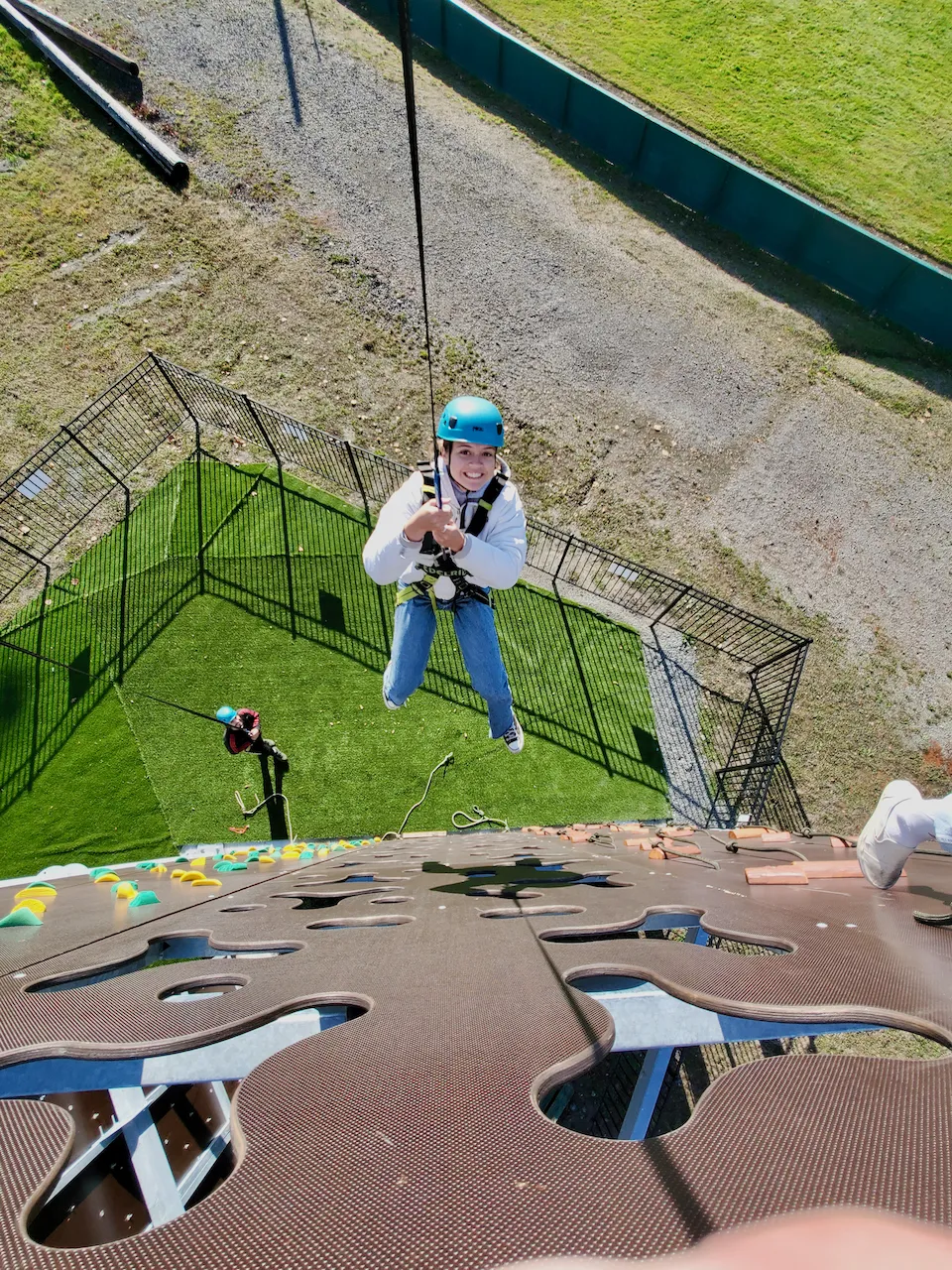
What should you expect from your fun tower experience?
When you arrive.
Your group will check in at the office. Our staff will verify waivers and print tickets then direct you to the fun tower staging area.
Prior to climbing, staff will fit all climbers with a harness and helmet. Then you're ready to climb!
The ticket is good for 3 climbs (passing the red line on any given route) or 30 minutes, whichever comes first.
Our unique climbing routes are geared towards having a fun, exhilarating, & unique time. These are not routes that would be challenging for skilled or experienced climbers, but still offer a novel experience.
For After Your Adventure

We offer a selection of water, sports drinks, sodas, chips, other snacks, and candy for purchase in our on-site store. Be sure to stop by if you feel like a snack or drink.

We offer a variety of Good Humor ice cream products. Available for pre-purchase as an add-on or purchase on-site. April - October only
.jpg)
Remember the experience with High Trek shirts, hoodies, buffs, stickers, and more! Available in our on-site store.
How to Prepare
What to wear.
Wear clothes that are comfortable and appropriate for the weather.
Keep the following dress requirements in mind:
- Shoes must cover climbers' toes and secure around the heel.
- Leggings, shorts, or pants should be under dresses , skirts , and kilts .
- Jackets and other layers may be worn under our gear.
What to Bring
- Bring water, this is a physical activity!
What Not to Bring
- Please leave any personal climbing harnesses or helmets at home. Chalk and climbing shoes are okay.
Requirements
- All participants must weigh between 30 and 265 pounds.
- Participants must be at least 4 years old to climb the fun tower.
- Those who have heart conditions or who are pregnant should not participate.
- Participants with joint and back conditions should consult a doctor before participating.
- Participants may not be under the influence of drugs or alcohol.
- Participants must have a valid High Trek Everett waiver completed within the past 360 days. Waivers from other High Trek locations are not accepted. Click here to complete a waiver.

Looking for Indoor Excitement?
Our new indoor location is 3 miles from High Trek Adventures and is located across the street from the Everett Mall, near Walmart. Our new venue is more geared towards ages 10+ with Axe Throwing, Laser Tag, Multi-Player Virtual Reality, SlingPutt, Pig Pin, and adult beverages.

Thank you! You are now subscribed.
Oops! Something went wrong while submitting the form :(
- Search Please fill out this field.
- Manage Your Subscription
- Give a Gift Subscription
- Newsletters
- Sweepstakes
- Backpacking Trips
10 Best Backpacking Trips Around the World
The views will leave you as breathless as the treks.
Evie Carrick is a writer and editor who’s lived in five countries and visited well over 50. She now splits her time between Colorado and Paris, ensuring she doesn't have to live without skiing or L'As du Fallafel.
:max_bytes(150000):strip_icc():format(webp)/evie-carrick-df91be43396540c492c4141c56a71a9e.jpg)
Ruben Earth/Getty Images
Hiking can transport you to waterfalls, high-alpine lakes, and vistas that many people never get to see. But why settle for a single day in the wilderness when you could spend multiple days soaking up the views and sleeping under the stars? Backpacking allows you to go deeper, stay longer, and in some cases, lose the crowds. Plus, there's a wonderful simplicity that comes with only being able to bring what you can carry on your back — you might be surprised by how little you need and how good you feel when you step away from it all.
When you're ready to take your love of hiking to the next level, start with a one- or two-night trip on a familiar route. Once you've got your gear, hiking legs, and general know-how dialed in, you might want to consider taking on a renowned multiday trek. While typically strenuous, these are some of the most beautiful and iconic backpacking trips in the world — just keep in mind that many require hiring a guide and obtaining a permit, so plan your journey well in advance.
Inca Trail, Peru
The Inca Trail is the famous route that leads to Machu Picchu . It provides a once-in-a-lifetime trek that follows the footsteps of a great lost civilization. While most people are in it for the finale, there's plenty more to see along this 26-mile backpacking route, During the trip, which typically takes about four days, you'll hike over Dead Woman's Pass (don't worry, it's not as scary as it sounds) and amid the terraces of Wiñay Wayna while enjoying near-constant views of the Andes.
Torres del Paine W Trek, Chile
This backpacking route cuts through Torres del Paine National Park in the Patagonia region, which is renowned for its stunning mountains and uncannily blue lakes. It's also home to rare wildlife, like the guanaco, a llama-like animal. Hiking the W Trek isn't easy — it covers about 50 miles and takes most people four or five days — but waking up lakeside at the foot of a snowcapped mountain is well worth the effort. The highlight of the hike is standing at the base of the three "towers" (granite peaks) that give the national park its name.
Tour du Mont Blanc, Switzerland, Italy, and France
If you dream of immersing yourself in the Alps, here's your chance. You'll cross international borders on foot as the Tour du Mont Blanc trail passes through France, Italy, and Switzerland, circumnavigating the highest peak in Western Europe. At more than 15,700 feet, Mont Blanc is the star of this backpacking journey. The 105-mile loop includes plenty of lodging — from rustic mountain huts to luxury hotels — and you can use public transportation to shorten the trip if needed. People take anywhere from six to 12 days to complete the hike.
Grand Canyon Rim-to-Rim, United States
Millions of people visit Arizona's Grand Canyon National Park each year, but few take on the Rim-to-Rim trail, which dips deep into the canyon and requires an equally steep hike out. The best option is to start at the North Rim on the North Kaibab Trail, then hike out on the Bright Angel Trail, which draws plenty of South Rim day hikers. Most people split the 24-mile trek into two days, even though some fit and experienced desert backpackers can knock it out in one. Either way, hiking from one rim to the other will earn you serious bragging rights.
Panorama Ridge, Canada
Western Canada is full of amazing trails, but Panorama Ridge is extra special. The views are continual along this track, which leads you about 19 miles round trip from the Rubble Creek Trailhead just south of Whistler Village. As you make your way through the stunning Garibaldi Provincial Park, you'll pass fields of wildflowers (depending on the season), a disintegrating volcano, and a high-alpine lake, all while enjoying views of Mount Price and Mount Garibaldi. You can do the full hike over two days or one very long (about 12-hour) day. You also have the option of hiking just half of Panorama Ridge if you start and end at Garibaldi Lake Campground.
El Camino de Santiago, Spain
El Camino de Santiago is a historic Spanish pilgrimage route that leads to the Catedral de Santiago de Compostela. There are many paths to the cathedral, but one of the most scenic is Camino del Norte, which starts in San Sebastian and traverses along the northern coast before meeting up with Camino Primitivo, which is considered to be the original path.
As beautiful as it may be, keep in mind that this backpacking trip is not for the faint of heart — the entire 500-mile spiritual journey takes travelers weeks or even months. Of course, you can always dip in for a section and spend the rest of your holiday sipping on cava at a luxe resort — no judgment.
Kepler Track, New Zealand
Nestled in Fiordland National Park on New Zealand's South Island is the 37-mile Kepler Track, a loop showcasing the highlights of Fiordland: glacier-carved valleys, the sandy shores of Te Anau and Manapouri, waterfalls, and endless mountains. Start your journey from Kepler Track car park and tackle the trail counterclockwise, so you can knock out the most challenging climb up front. Most people take three or four days to complete this classic New Zealand Great Walk.
Mount Kilimanjaro Lemosho Route, Tanzania
What hiker hasn't dreamed of summiting the tallest mountain in Africa? Standing at 19,340 feet, Mount Kilimanjaro is a challenging trek, but your journey up this dormant volcano will reward you with the unforgettable experience of hiking from a bone-dry savanna to a snow-covered peak. If you're going to take on "Kili," you might as well opt for the most beautiful trail — a title well earned by the 42-mile Lemosho Route, which takes most people six to nine days to hike.
Great Ocean Walk, Australia
Natphotos/Getty Images
The 68-mile Great Ocean Walk hugs the coast of southwest Victoria, running alongside the famous driving route, the Great Ocean Road. Most people hike westbound from Apollo Bay so they can end at the true highlight of the trek: the Twelve Apostles (limestone rock formations rising dramatically from the ocean). Along the way, you'll pass through Great Otway and Port Campbell national parks where you might spot koalas in the canopy or whales in the water. No part of this hike is super steep — it's a coastal walk, after all — but walking on sand can be a challenge. The Great Ocean Walk takes about eight days to finish.
Kumano Kodō, Japan
tororo/Getty Images
The Kumano Kodō is a network of sacred pilgrimage routes — similar to Spain's El Camino — that travels for about 115 miles through bamboo forests and stunning Japanese countryside on the Kii Peninsula of Honshu. Along the route, hikers get plenty of chances to stop at shrines, soak in onsen (hot springs), and take in sights such as waterfalls and terraced rice fields. The trails are steep enough to get your blood pumping, but this immersive glimpse into Japan's history and culture is worth the four- to six-day hike.
Related Articles
California climbers train for Mt. Everest from the comfort of their own beds

- Show more sharing options
- Copy Link URL Copied!
Graham Cooper sleeps with his head in a bag.
Not just any bag. This one has a hose attached to a motor that slowly lowers the oxygen level to mimic, as faithfully as possible, the agonies of fitful sleep at extreme altitude: headaches, dry mouth, cerebral malaise.
“It’s not all bad,” Cooper insisted, nodding to the humming motor. “That’s like white noise.”
Cooper, 54, an Oakland biotech executive who has handled finance for a number of companies, including one that sold for $7 billion, isn’t a masochist, exactly. He’s acclimatizing, in the bedroom of his second home near Lake Tahoe, for an attempt to climb Mt. Everest in May.

He has signed up with an Olympic Valley-based guide service whose founder, Adrian Ballinger, is breaking with decades of tradition to create what he believes are better and more ethical ways to climb the world’s tallest mountain.
Ballinger said he was appalled by the risks, filth and ballooning crowds on the traditional southern trek up the mountain in Nepal. That’s the route familiar from countless documentaries and books, including the 1997 classic “Into Thin Air.”
So he decided to take clients up on the north side, a journey that starts in Tibet.
“It’s colder, the route is more difficult, and the bureaucracy of dealing with China and getting the permits is a complete nightmare,” Ballinger said. “But despite those things, the Chinese are attempting to regulate, so once you get on the mountain, it’s safer, it’s cleaner, and it’s much less busy.”
Ballinger is also pioneering a technique he calls “rapid ascent,” which cuts the duration of the expedition roughly in half: from about two months to about one. That suits his clients, who usually have more spare money than time. And it buys Ballinger more time to spend at home with his wife and newborn son.
The catch? You have to spend a few months before the trip with your head in the bag.
“It’s not great, I’m not gonna lie,” Ballinger said with a laugh, but the technology is improving.

“Hypoxic tents,” as they’re called, have been used by other endurance athletes for years. In their original form, they would cover a client’s entire bed. That led to difficult conversations with spouses and partners about the necessity of sleeping at progressively higher simulated altitudes until they reached the height of Everest’s base camp, roughly 18,000 feet, where there’s about half the oxygen available at sea level.
As you can imagine, some clients wound up relegated to a couch with their bizarre-looking contraptions.
Cooper, who used one of the enormous old tents preparing for a 2015 trip to climb the highest peaks in Antarctica and South America, confessed he had no luck sweet-talking Hilary, his wife of 28 years, into sharing the adventure. He got bounced to a guest room.
“It was a lonely boy-in-the-bubble experience,” he said. But he has fond memories of the looks on his kids’ faces as they trooped into his little dungeon to kiss him good night.
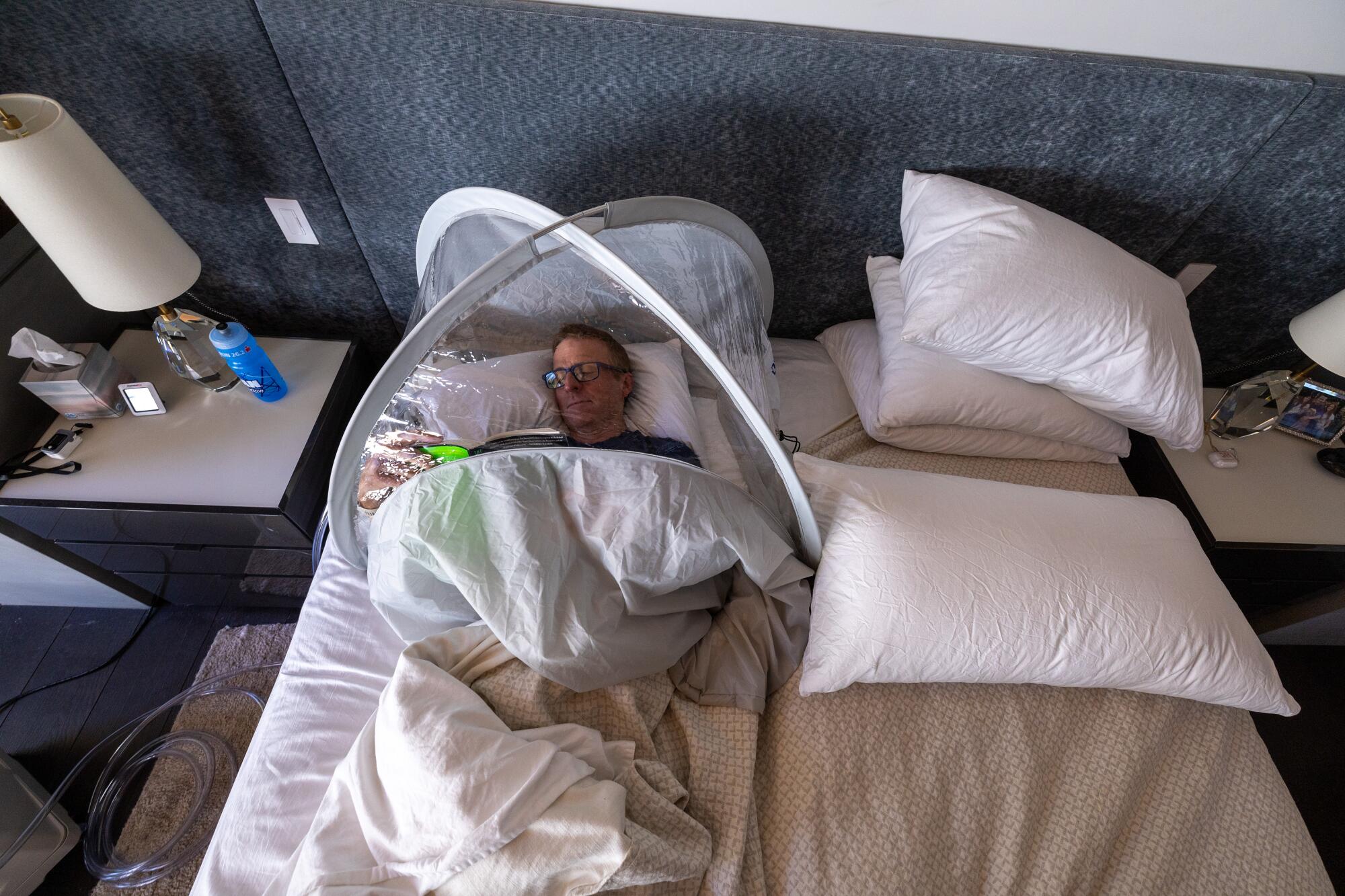
This time around, “the bag,” as he calls it, covers just his head and upper torso and takes up about a quarter of the bed. Hilary sleeps next to him, Cooper said, and she finds the hum of the motor surprisingly soothing.
It goes without saying that the luxury of acclimatizing at home, in bed, with your partner curled up beside you, represents a profound break from the usual manner of preparing to ascend what is still one of the world’s deadliest mountains .
The traditional method starts in Kathmandu, at nearly 5,000 feet, where climbers spend a few days getting over jet lag. That’s usually followed by a quick flight to the small mountain town of Lukla, at just over 9,300 feet. The airport there — perched on a narrow Himalayan shelf surrounded by towering peaks, with a steep drop-off at the end of the runway — is regarded as one of the trickiest places in the world to land an airplane.
From there, climbers begin a long, deliberately slow 10-ish-day hike to base camp. The point is to give the body time to gradually adjust to the lack of oxygen.
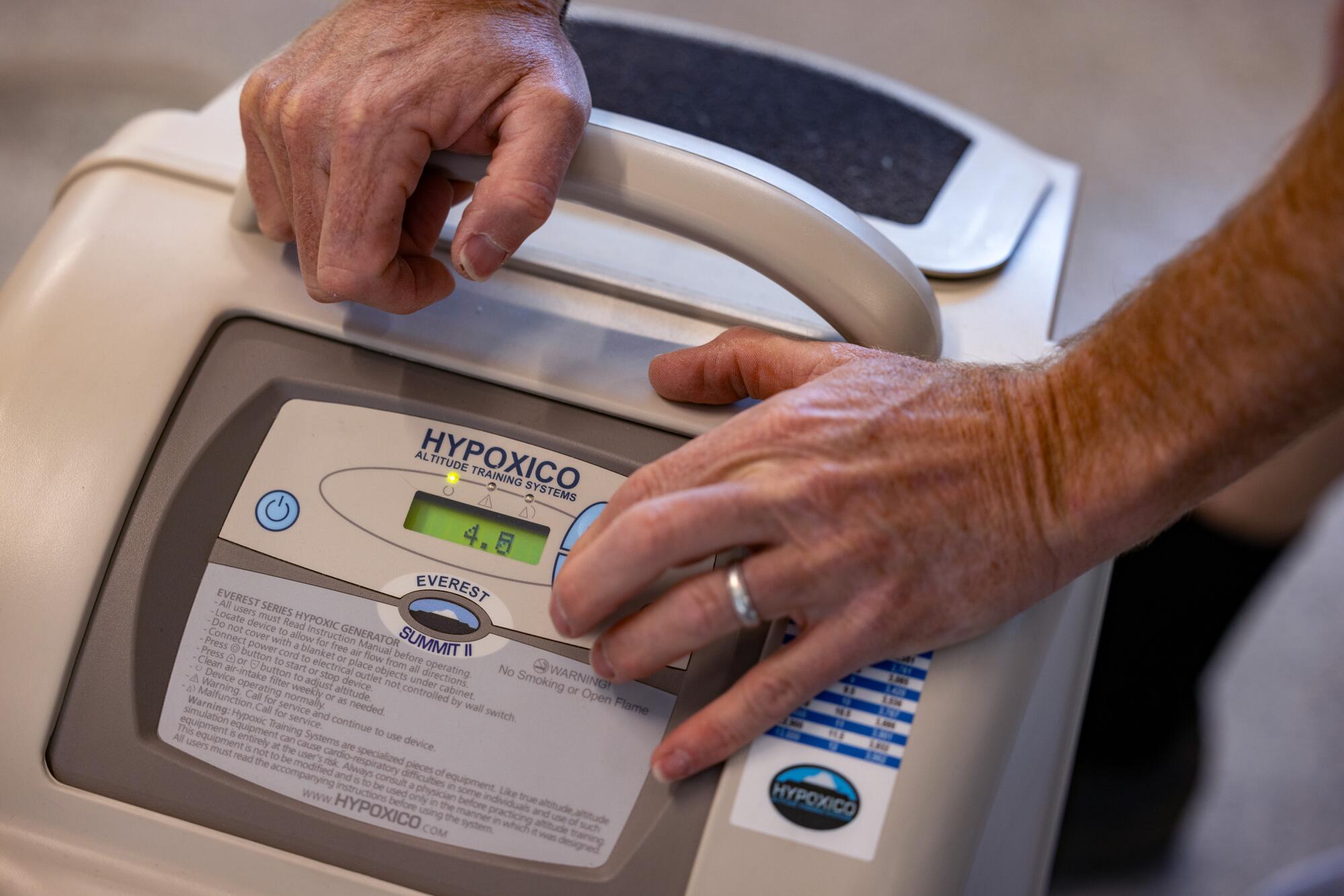
Ballinger cuts nearly two weeks from his trips by driving his bedroom-acclimatized clients from the airport in Lhasa, Tibet, straight up to the northern route’s base camp, which is also about 18,000 feet.
For some old-school purists, eliminating the long walk borders on sacrilege, said Will Cockrell, a journalist whose recent book, “Everest, Inc.,” explores the evolution of commercial guiding on the mountain. “They’ll say, ‘You’re not a real climber; you’re not a real nature lover,’” Cockrell said.
But since the arrival of big commercial expeditions on Everest in the mid-1990s — complete with Sherpas to install climbing ropes, chefs to cook meals in camp, team doctors to monitor health, and guides to accompany clients every step of the way — Mt. Everest has ceased to be a classic off-the-grid mountaineering challenge.
“It has come to represent something completely different,” Cockrell said, “something crazy to do to shake up your life, like running an Ironman.”
Ballinger makes no apologies. “We’re not old school, we don’t spend a lot of time sitting around drinking whiskey and playing cards,” he said.
That suits his clients, who “tend to be pretty type A, pretty high performing in everything they do,” Ballinger said.
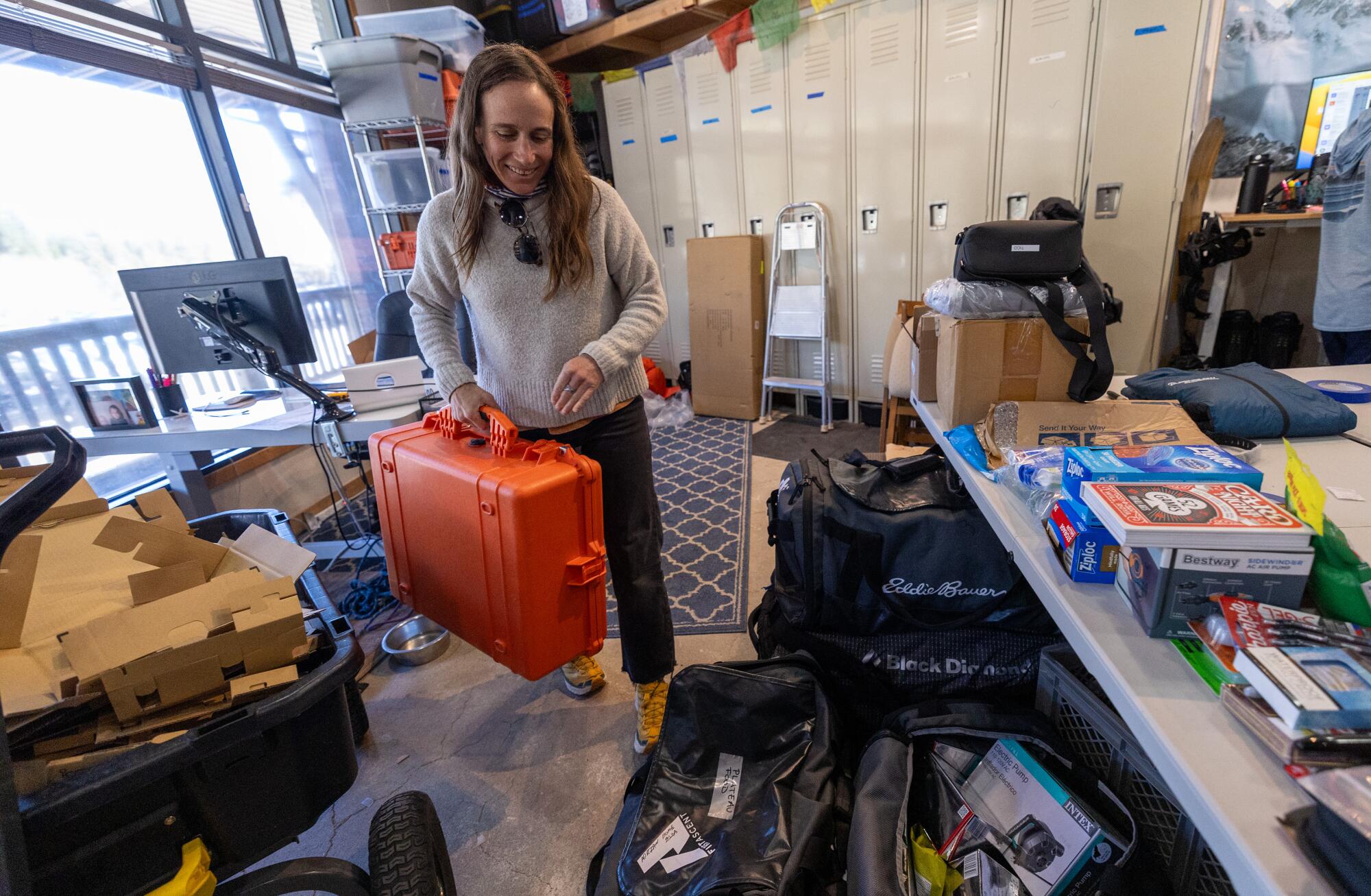
They’d better be. His company, Alpenglow Expeditions , charges $165,000 (before tip) for a private climb, meaning one professionally certified guide per client, and $98,000 for a group climb with three clients per guide.
“We’re proudly expensive,” Ballinger said. “I’ve spent a lot of time thinking about what it takes to run a trip safely and ethically, and this is what it takes.”
Climbing from the north side, as Ballinger does, avoids the huge crowds who flock to the southern base camp from all over the world every May, the prime climbing season on Everest, to wait for a brief window of good weather to try to make it to the summit.
Anyone who has even loosely followed events on Mt. Everest in recent years is probably familiar with the terrifying “conga line” photos of climbers stuck in the world’s highest traffic jam.
It forms just below the summit on the southern route, at the last technical obstacle, a nearly vertical 40-foot rock wall called the Hillary Step. It’s on a ridge with a 10,000-foot drop to the climber’s right and an 8,000-foot drop to the left. So, when exhausted and inexperienced climbers inevitably struggle there, everybody else waits in a single file, hanging onto a fixed rope, while the bottled oxygen they need to survive at that altitude slowly drains away.
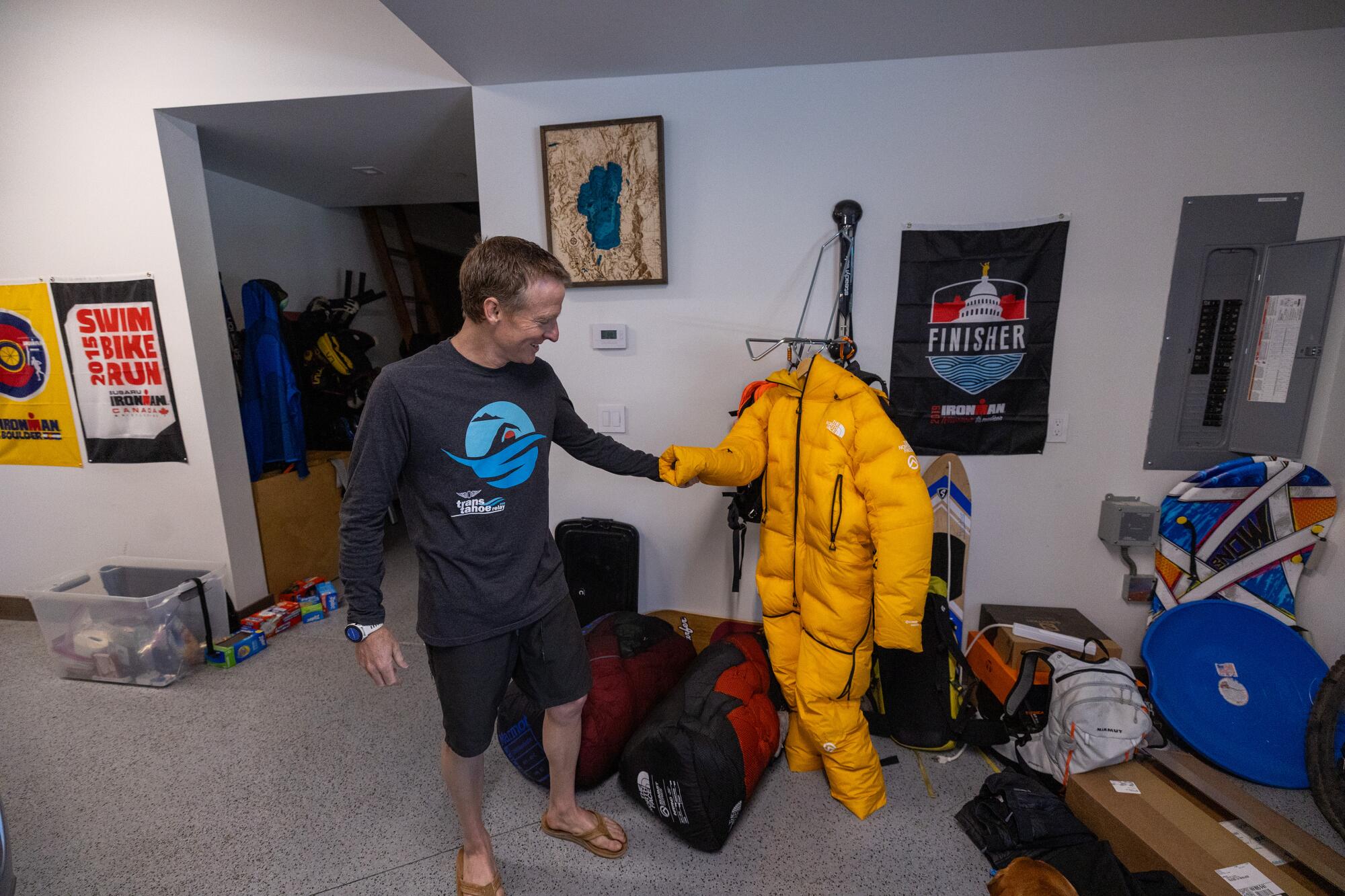
Worse is the Khumbu Icefall, a glacier just above the southern base camp. It’s best known for wide spine-tingling crevasses spanned by flimsy-looking aluminum ladders lashed together with rope. Climbers have to walk across those ladders, wearing big boots and crampons, as they make multiple trips back and forth to advanced camps to acclimatize before finally heading for the summit.
As dangerous as it is for the mostly foreign climbers and guides, the odds are even worse for the local Sherpas, who regularly traverse the Khumbu ferrying equipment — tents, food, oxygen canisters — for the climbing teams. Last year, the deadliest climbing season in Everest history, three Sherpas were killed in the Khumbu when a towering block of ice collapsed and buried them.
In six seasons climbing the southern route, from 2009 to 2014, Ballinger said he passed through the Khumbu 38 times and had two close calls. While nobody on his teams lost their lives there, he helped recover the bodies of other climbers who had not been so lucky.
Finally, he did the math and concluded there was no way he could get through a whole career — 20 or 30 years — without losing someone he was responsible for in the Khumbu.
“I just couldn’t do it anymore,” Ballinger said. “I just couldn’t justify the risk.”
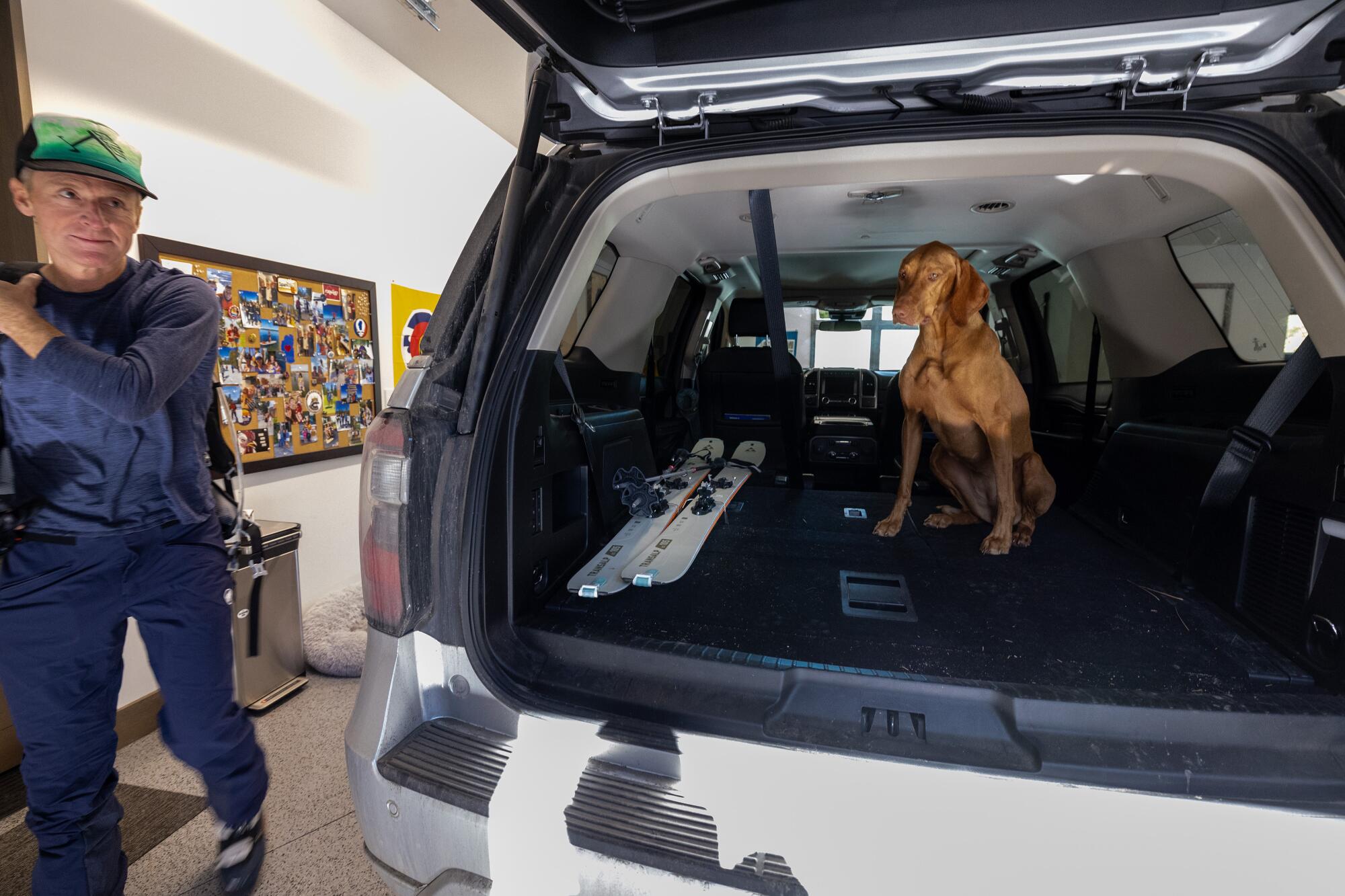
Ballinger’s data-driven approach and stellar track record were enough to win over Cooper.
And he has been willing to wait.
He was ready to climb Everest four years ago, but when China shut down expeditions to its side of the mountain in 2020 in response to the COVID-19 pandemic, Ballinger stuck to his principles and refused to resume climbing with the crowds in Nepal. This is the first year since the pandemic that the Chinese side has been open.
The Alpenglow team, which includes 26 clients, guides and Sherpas hoping to reach the summit, were originally scheduled to begin their expedition in late April. After a late permitting change from the Chinese government, that date has been pushed back to May 7.
Cooper has competed in the Ironman World Championship in Hawaii 11 times and has won the legendary Western States Endurance Run, a 100-mile ultra-marathon. He is not a man accustomed to sitting around. “I’m feeling ready and anxious to get going,” he texted a reporter last week.
When not trying to sleep in his hypoxic tent, Cooper has spent his training days in Tahoe on back-country skis doing laps up and down a mountain, his 3-year-old dog, a Vizsla named Busy, at his heels. Indoors, he straps on a hypoxic mask hooked to the same motor he uses for the sleeping tent and rides a stationary bike an hour at a time. Or climbs a StairMaster. Or throws on his mountaineering boots and a heavy backpack and trudges up and down slopes.
“I’m addicted to doing this kind of stuff,” said Cooper, who ran his first marathon when he was 13. “I just feel like a fundamentally happier person when I’m training.”
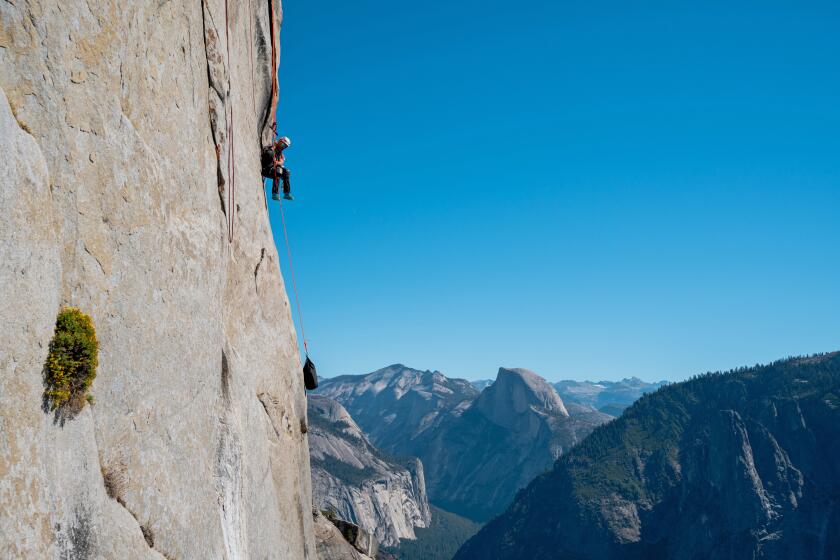
After a trust fall left him paralyzed, climber scales 3,000-foot El Capitan using only his arms
In 2015, mountain guide Zuko Carrasco’s world collapsed in a trust fall gone awry. Eight years later, he looked to reclaim his independence with an audacious plan to scale El Capitan.
Jan. 11, 2024
Ballinger leads clients on bucket list climbs all around the globe. Many of the treks present more interesting technical challenges than Everest. Almost all of them feel like wild outposts compared with the circus vibe on Everest’s south side.
Still, he gets poetic when he describes why so many clients are drawn to the world’s tallest summit.
“Because it’s so hard,” he said. It takes incredible fitness, mental fortitude and a heavy dose of luck to make it to the top. And no matter how many precautions you take, there’s that uncontrollable element of risk.
“It’s not just a battle for success, it’s a battle for survival up there,” Ballinger said. “That’s something that many of us have not experienced otherwise. I think that really captures people.”
More to Read
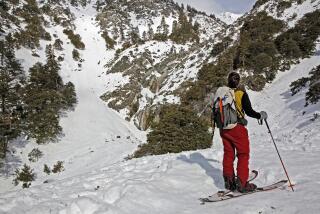
Letters to the Editor: Permits won’t deter hikers who have no business on Mt. Baldy
March 14, 2024
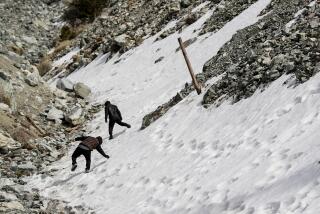
Editorial: Winter permits for Mt. Baldy could save lives of hikers — and rescuers
March 11, 2024

‘Craziest thing you can do’: Why are so many adventure seekers warming up to ice climbing?
Jan. 23, 2024
Start your day right
Sign up for Essential California for news, features and recommendations from the L.A. Times and beyond in your inbox six days a week.
You may occasionally receive promotional content from the Los Angeles Times.

Jack Dolan is an investigative reporter for the Los Angeles Times. A winner of numerous national awards, he has twice been named a finalist for the Pulitzer Prize.

Brian van der Brug has been a staff photojournalist at the Los Angeles Times since 1997.
More From the Los Angeles Times
6 stunning l.a. gardens where you can stop and smell the roses (quite literally).
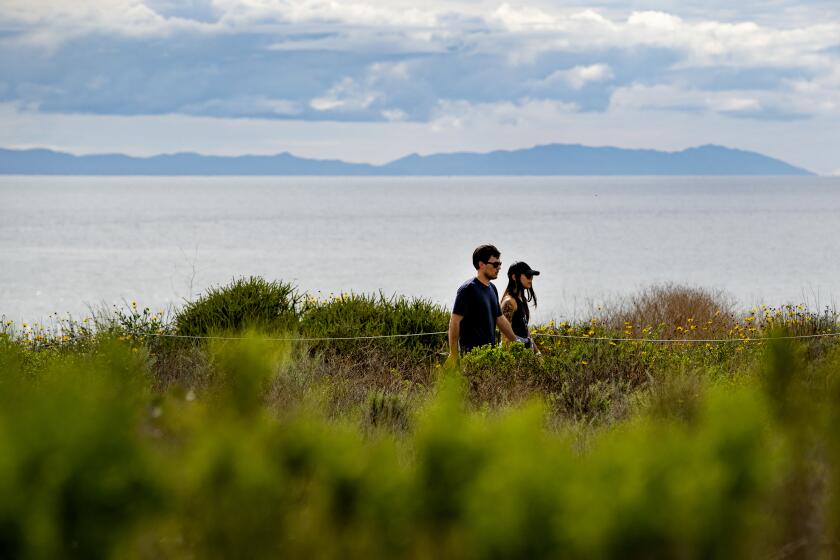
Opinion: Californians love the state’s parks. We just don’t know they’re state parks
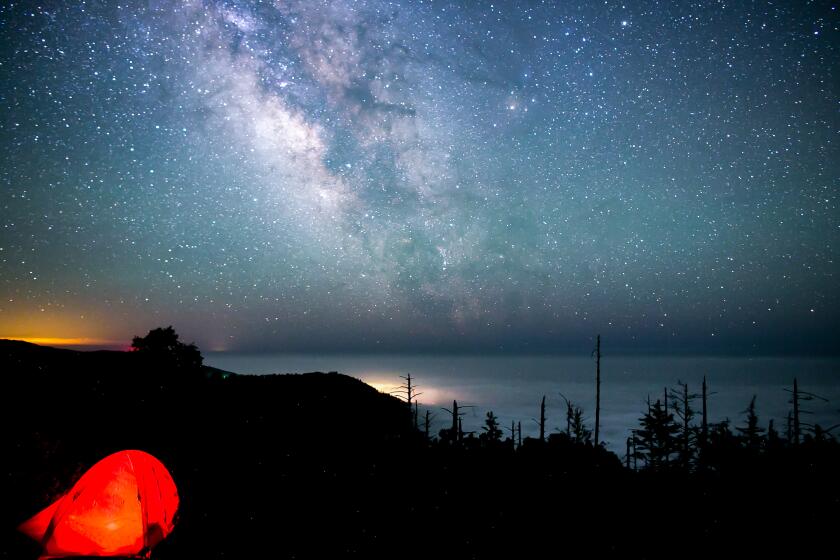
Travel & Experiences
Soon you’ll have to pay to camp on the Lost Coast. Here’s what to know
May 10, 2024
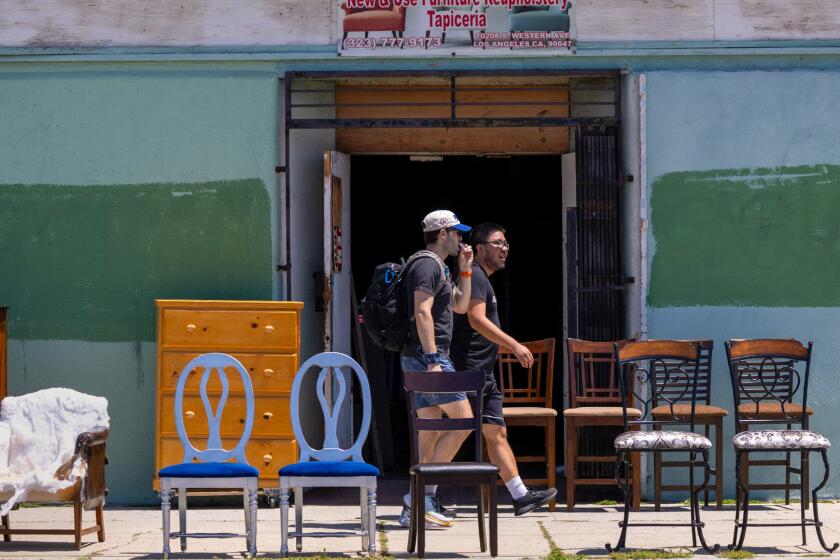
Walking all 28 miles of L.A.’s longest street in a day tested our limits
May 6, 2024
- Election 2024
- Entertainment
- Newsletters
- Photography
- Personal Finance
- AP Investigations
- AP Buyline Personal Finance
- AP Buyline Shopping
- Press Releases
- Israel-Hamas War
- Russia-Ukraine War
- Global elections
- Asia Pacific
- Latin America
- Middle East
- Election Results
- Delegate Tracker
- AP & Elections
- Auto Racing
- 2024 Paris Olympic Games
- Movie reviews
- Book reviews
- Personal finance
- Financial Markets
- Business Highlights
- Financial wellness
- Artificial Intelligence
- Social Media
Sherpa guide Kami Rita scales Mount Everest for 29th time, extending his own record again
FILE- Veteran Sherpa guide Kami Rita returning after scaling Mount Everest for the 28th time arrives at the airport in Kathmandu, Nepal, May 25, 2023. Kami Rita, one of greatest climbing guides on Mount Everest has scaled the world’s highest peak for the 29th time, breaking his own record for most times to the summit, expedition organizers said Sunday, May 12, 2024.(AP Photo/Niranjan Shrestha, File)
- Copy Link copied
KATHMANDU, Nepal (AP) — One of greatest climbing guides on Mount Everest has scaled the world’s highest peak for the 29th time, extending his own record for most times to the summit, expedition organizers said Sunday.
Kami Rita reached the 8,849-meter (29,032-foot) peak at 7:25 a.m. local time Sunday along with other climbers, said Mingma Sherpa of the expedition organizer Seven Summits Treks. He was reported in good health and already on the way down to lower camps.
Kami Rita had climbed Mount Everest twice last year, setting the record for most climbs on the first and adding to it less than a week later.
He and fellow Sherpa guide Pasang Dawa have been competing with each other for the title of most climbs of the world’s highest peak. Pasang Dawa has 27 successful ascents of the mountain.
Kami Rita first climbed Everest in 1994 and has been making the trip nearly every year since. He is one of many Sherpa guides whose expertise and skills are vital to the safety and success each year of foreign climbers who seek to stand on top of the mountain.
His father was among the first Sherpa guides. In addition to his Everest climbs, Kami Rita has scaled several other peaks that are among the world’s highest, including K2, Cho Oyu, Manaslu and Lhotse.
Mingma Sherpa said the weather on the mountain was good and favorable for climbing to the summit.
The first set of climbers reached Everest’s summit just a few days ago and there are hundreds more who will be attempting to get up the mountain this month.
Nepalese authorities have issued hundreds of climbing permits to foreign climbers, At least as many local Sherpa guides will be accompanying them during the climbing season.
- Logout Login
- Adventure Holidays
- Weekend Getaways
- Driving Holidays
- Travel News
Top Searches
Summer Road Trips
Ritacuba Blanco Glacier
Leopard Cat
Mount Fuji Trail
World Big Countries
Varkala Cliff Kerala
Nepal’s ‘Everest Man’ sets new record with 29th summit climb
Times of India TIMESOFINDIA.COM / TRAVEL NEWS , NEPAL / Created : May 13, 2024, 12:30 IST
You're Reading
On a serene Sunday morning, Kami Rita conquered the formidable 8,849-m (29,032-ft) peak, reaching the top of the world under the guidance of Mingma Sherpa from Seven Summits Treks. Despite the arduous journey, reports indicate tha … Read more
On a serene Sunday morning, Kami Rita conquered the formidable 8,849-m (29,032-ft) peak, reaching the top of the world under the guidance of Mingma Sherpa from Seven Summits Treks. Despite the arduous journey, reports indicate that Kami Rita is in excellent health and has commenced his descent towards the lower camps, wherein the weather conditions are favourable now. Read less

More from Travel News

Cool places in India to make May month better
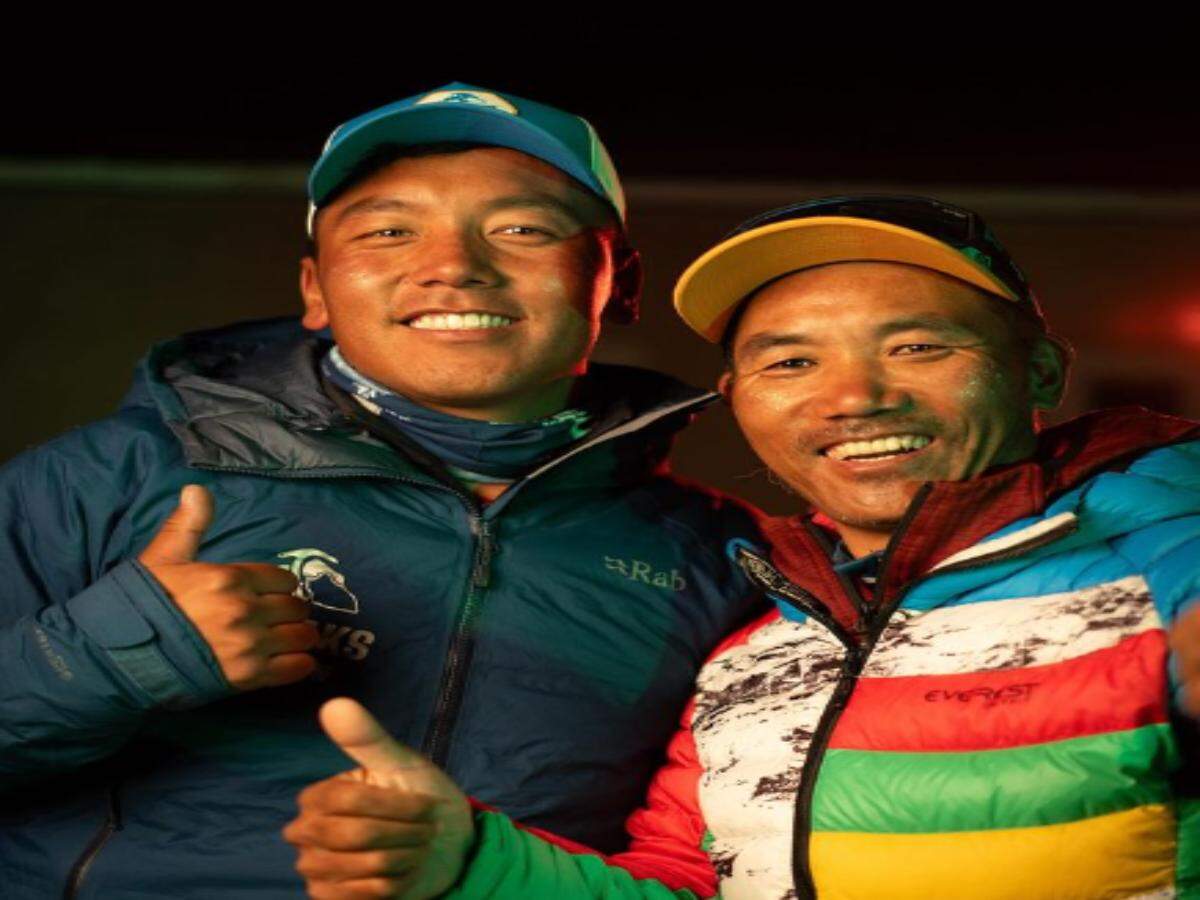
Comments (0)

Refrain from posting comments that are obscene, defamatory or inflammatory, and do not indulge in personal attacks, name calling or inciting hatred against any community. Help us delete comments that do not follow these guidelines by marking them offensive . Let's work together to keep the conversation civil.
Comments ( ) Sort: Newest UpVoted Oldest Discussed Down Voted closecomments

SIGN IN WITH
Or post without registration.

Visual Stories
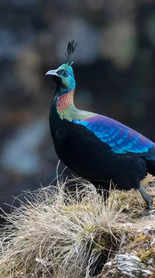
Popular Galleries
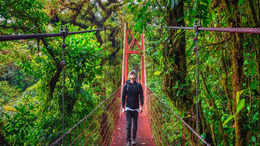
In pictures: World's most beautiful forests TRAVEL TRENDS , WORLD

Summer escapes: 5 memorable road trips if you need a good break! TRAVEL TRENDS , INDIA

7 least populated cities in the world for an offbeat travel experience!
Trending stories.
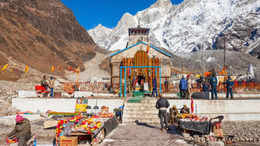
- Kedarnath Dham update: Over 75,139 devotees visited the temple in 3 days of its opening

Japan launches online booking to address Mount Fuji trail overcrowding

- Pichavaram: Detailed guide to world's second largest mangrove forest

Ship ‘floating in the sky!’ Bizarre images captured along Greek coastline

In pictures: World's most beautiful forests
- 1 Nepal’s ‘Everest Man’ sets new record with 29th summit climb
- 2 Are visa decisions made in advance of the interview?
- 3 This Colombian glacier is rapidly vanishing due to climate change
- 4 A runway of mere 400 m! What's it like to land on the world's ‘scariest’ runway?
- 5 Air taxis launched in Dubai; reach anywhere inside the city within 10 minutes!

THE DEFINITIVE GUIDE TO DESTINATIONS, ITINERARIES, THINGS TO DO, RESTAURANTS, NIGHTLIFE and LOTS MORE!
FOLLOW US ON
Places to visit.
- Places to visit in Bangalore
- Places to visit in Mumbai
- Places to visit in Delhi
- Places to visit in Goa
- Hotels in Goa
- Hotels in Jaipur
- Hotels in Shimla
- Hotels in Mumbai
Things To do
- Things to do in Goa
- Things to do in Mumbai
- Things to do in Bangalore
- Things to do in Delhi
Travel Inspiration
- Visa on arrival for Indians
- Honeymoon Places in india
- Hill Stations in India
- Weekend getaways in Mumbai
- Weather in Delhi
- Weather in Chennai
- Weather in Bangalore
- Weather in Mumbai
Best Beaches
- Goa Beaches
- Mumbai Beaches
- Pondicherry Beaches
- Kerala Beaches
- Restaurants in Bangalore
- Restaurants in Chennai
- Restaurants in Pune
- Restaurants in Jaipur
- Hill Station near Delhi
- Winter trip to Ladakh
- Places to visit in Kerala
- Winter Honeymoon Destinations
- UK visa guide for Indians
- Winter Trip to Manali
- Vaishno Devi Yatra
- Special Train Ticket Booking
- HP inter-state Bus
- Honeymoon Destinations India
Latest News
- What are yurts and how are these more comfortable for leisure travellers?
- Rare leopard cat spotted in Maharashtra’s Pench Tiger Reserve for the first time!
- This Colombian glacier is rapidly vanishing due to climate change
- Ship ‘floating in the sky!’ Mind-boggling images captured along Greek coastline; see pics
- Blossoming romance: Bengaluru’s rise as the ultimate lakeside wedding destination
- Japan: Online booking system introduced to tackle overcrowding on Mount Fuji trail
- Follow in Shilpa Shetty's footsteps: Your ultimate Kedarnath travel guide
Congratulations!
You have been successfully added to the mailing list of Times of India Travel. To complete the subscription process, kindly open your inbox and click on the confirmation link which has been emailed to you.
Share with friends
Thank You for sharing! Your friend will receive the article link on email mentioned.
- (For more than one recipient, type addresses separated by commas)
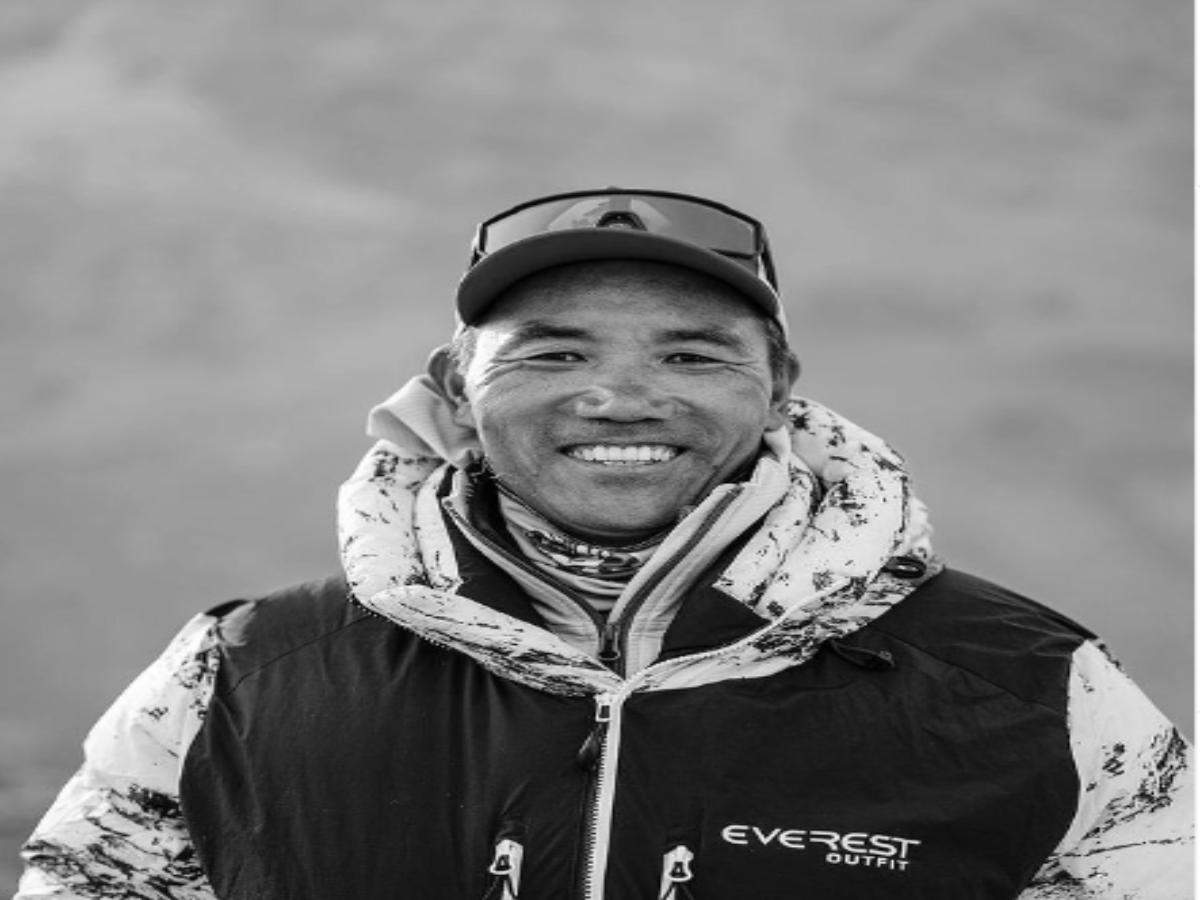
On a serene Sunday morning, Kami Rita conquered the formidable 8,849-m (29,032-ft) peak, reaching the top of the world under the guidance of Mingma Sherpa from Seven Summits Treks. Despite the arduous...

Nepal: Everest climbing season begins; China reopens Tibetan route
T raditionally, the inaugural ascent of Everest each year is undertaken by a team from one of Nepal's renowned expedition organising companies, tasked with the crucial responsibility of preparing the route for paying clients who will follow in their footsteps.
Chhang Dawa Sherpa, representing Seven Summit Treks, the leading expedition organiser, confirmed the triumphant moment, stating, "The rope-fixing team reached the summit this evening," as per the reports. The official statement from Nepal's tourism department, stationed at the Everest base camp, stated that the precise time the team reached the summit was 8:15 PM.
Anticipation swells among the mountaineering community, with Khim Lal Gautam, head of the base camp field office, remarking, "Other teams are already moving... many are at Camp 2 to catch the first window." A promising weather forecast extends hope, with expectations of a favourable climate until May 14, raising the prospect of witnessing an impressive tally of over a hundred summits during this period.
For the current spring climbing season, Nepal has granted a total of 414 permits to mountaineers, spanning from April to early June. With each climber typically accompanied by a Nepali guide, the more than 800 climbers will likely set out to the arduous path to the 8,849-m (29,032-foot) Everest summit in the ensuing weeks.
Read more: World's most expensive cities
This year, the resumption of the Tibetan route to foreigners by China after its closure in 2020 due to the pandemic adds another dimension to the mountaineering landscape. Social media updates from expedition organizers confirm the opening of the northern summit route on Monday, expanding opportunities for climbers seeking alternative paths to conquer the iconic peak.
Nepal's allure as a premier mountaineering destination is also because of its status as the home to eight of the world's ten highest peaks. Annually, the country welcomes a multitude of adventurers during the spring season, enticed by the conducive temperatures and relatively tranquil winds, ideal for summit attempts.
Read more: Did you know this national park has the highest number of tigers in India?
However, amid the allure and triumph, Everest's formidable challenges always remain there. Last year's climbing season, despite witnessing over 600 successful summits, was marred by tragedy, marking the deadliest season on record with 18 fatalities. The surge in climbers over the years has transformed mountaineering into a lucrative industry, which was also because of the legacy of Sir Edmund Hillary and Sherpa Tenzing Norgay, who climbed Everest in 1953 for the first time.

Color Scheme
- Use system setting
- Light theme
Traditional cyclists encounter new Yellowstone travel companions
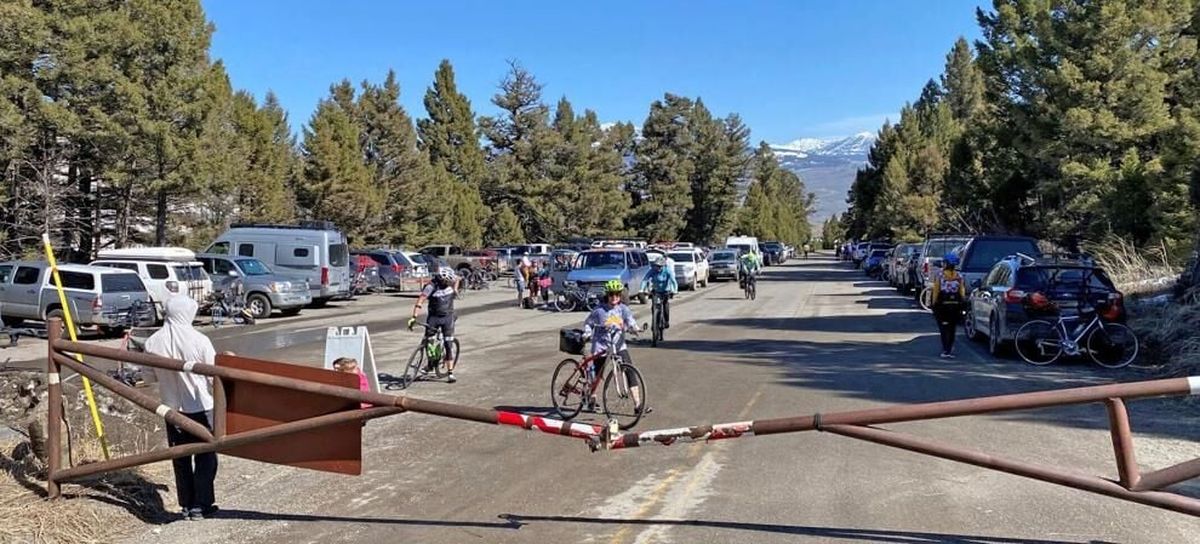
YELLOWSTONE NATIONAL PARK – Imagine the cyclist clad in brightly colored skin-tight shorts and top, helmeted head held low, legs pumping hard into the headwind as they pedal up a steep hill near Norris Geyser Basin.
Then, quietly humming past them comes a joker clad in a Hawaiian shirt pedaling an upright town cruiser bicycle. Ringing a handlebar mounted bell as they pass, the goofball shouts a greeting and waves.
Such scenarios may be more common these days, marking the end of an era of traditional cyclists dominating the spring ride into Yellowstone National Park. Now blazing onto the landscape are e-bikers of all shapes, sizes and ages. Technology has made it possible for the average rider to trek where once only the brave, bold and fit ventured.
Sun seekers
The weekend of April 13 was a prime example of the new epoch. Unlike most spring days when snow or sleet are likely as Yellowstone edges from freezer-cold to just frigid, this day saw temperatures in the 60s and cerulean skies.
The parking area at Upper Terrace Drive, above Mammoth Hot Springs, was strewn with cyclists assembling their gear. Some dressed for a festive ride, with a pink onesie and hand-sewn possum costume complete with rodent teeth, just a few of the many odd outfits.
Vehicles disgorging riders extended down the hillside. Other visitors parked at Mammoth and braved the switchback climb up to the gate that blocks vehicles for this temporary cycling season.
When the road between Mammoth and West Yellowstone is plowed clean of snow in spring, for a short time bicyclists are allowed to ride the route nearly vehicle-free, except for the occasional workers driving through.
We considered riding up from Gardiner along the new road constructed after the 2022 flood washed out the old Gardner River route. The replacement highway makes a serpentine climb above Slide Lake along a one-time stagecoach road. Turnouts provide an opportunity for grand views looking back toward the Absaroka Mountains and Gardiner Basin. But the possible drain on our bicycle’s battery power deterred us from the climb.
“Coming down is great, going up is tough,” warned Jay O’Connor, who guides e-bike tours into the park. “It will chew your battery up.”
It was 2013 when I made my first foray into Yellowstone for the April cycling season. All of the warnings about self-rescue, unpredictable weather and the possibility of bear or bison encounters had me on edge, not to mention the 100-mile round trip. That’s the farthest I’ve pushed my cycling muscles, and then only three times. Two other years we went only one way, or waited until the road was open to vehicles and used that to shorten the distance.
In all of those years, the weather has been cool, which is to be expected at elevations ranging from 5,500 to 7,500 feet. We’ve pedaled through snow, rain, sleet and wind, numbing conditions for cycling.
This time, the weather was unbelievably balmy. Cyclists flocked to Yellowstone’s North Entrance. Coats and mittens could be abandoned in the car. Sunscreen was more important.
Animals were few, with most elk and pronghorn congregating closer to Gardiner and bison just beginning to trek toward Swan Lake Flat after lounging on the green lawns of Mammoth.
E-biking surge
It’s a guess, but maybe one-quarter of the cyclists were on an e-bike as we ventured from the locked gate to the Norris Geyser Basin overlook. Pedaling into a headwind with an elevation gain of about 1,200 feet we covered the 17 miles quickly, stopping over at Roaring Mountain on the way in to sunbathe, watch the ravens and snarf down sandwiches.
On the way back, we were lucky enough to talk our friend into shuttling the vehicle back to Gardiner so two of us could ride the winding switchbacks downhill. The route drops about 1,100 feet in 6 miles.
The replacement road from Mammoth to Gardiner features a 10% drop with some hairpin turns, which is a lot of fun on a bike, but not when you are pulling a loaded snowmobile trailer in icy conditions.
The Park Service is considering building a new North Entrance road. If a different route is chosen, the temporary road could be open to bikers and hikers. Then Yellowstone visitors would have another year-round paved route free of vehicles.
Envy or anger
O’Connor said although he’s been in the e-bike tour business for four years, he still gets yelled at by traditional cyclists who call him a “cheater.” He said on occasion the offended cyclists have come close to throwing punches.
He told those insulted by his mechanical assistant: Just wait, someday your knees or hips will be in tough enough shape that an e-bike will seem inviting.
“I think e-bikes are an amazing investment,” he said. “And they are here to stay.
“It’s a bicycle with extra help.”
Advancing rural health in Northeast Washington and beyond
Access to health care across rural Washington is a growing challenge.

IMAGES
COMMENTS
Take on the same climbs as the pro's and experience the world's most famous ascents on a Classic Climb bike tour. Experience the ultimate cycling adventure, where you will take on the world's most famous climbs. Our guides will lead you through the most iconic mountain passes, like Stelvio Pass and Mont Ventoux. The sense of accomplishment ...
The Trek Fuel EX 9.8 also has a very high fun factor. This mid-travel 29er climbs extremely well, shreds downhill, and operates with razor-sharp handling. ... These long-legged 29ers climb nearly as well as their shorter travel counterparts and really shine when the pitch steepens. They are extremely fun in that they are not limited to certain ...
10. Invest in a good pair of shoes. Photo by Kieran Wallace. Your feet are your most crucial body part on a trek, and it doesn't take much to keep them in toe-tappingly tip-top shape. First, invest in a pair of good-quality, water-resistant hiking boots; you want plenty of support and ventilation too. Then, wear them in.
Discover the magnificent and challenging climbs of the Slovenian Alps. Tackle the giant of the Giro d'Italia, Monte Zoncolan, renowned as one of the most demanding climbs in Europe. Test your legs on the iconic Vršič Pass, famous for its cobbled hairpin switchbacks and stunning views. Take on the highest paved road in Slovenia to conquer ...
DAY 1 RIDE: Lourdes to Soulor Loop Approximately 53 miles with 4,100 feet of climbing. DESCRIPTION: Your Trek Travel guides will meet you at the Hotel Gallia & Londres (26 Avenue Bernadette Soubirous- BP83 Lourdes) at 10:00 AM on the first day of the trip. 100 years ago, unsupported cyclists braved gravel roads on steel bikes, wary of attack by eagles and bears, pitting themselves against ...
Climbing throughout the Alps is a surreal experience where cycling in this mountainous region is as mind-blowing as the scenery." -Thomas English, Trek Travel Guide Having lived in the French Alps for the past four years, I fell in love with the area and guiding trips here.
For 2021, my total training and activity (climbing, hiking, skiing, etc.) time added up to 500 hours, with an average weekly elevation gain of about 1374 m. Majority (>80%) of my training was in Zone 1/2 i.e. below my aerobic threshold of 155 bpm.
The thing that makes the EBC trek tough is the altitude. Base Camp is at 5600m (18,373ft) and you will need to spend one or two nights above 5000m (16,404ft). Above 4000m (13,123ft) you are going to feel increasingly lethargic and out of breath as the amount of oxygen in the air decreases. Combine this with the cold, the discomfort of being at ...
Mt Kilimanjaro is one of the most popular travel attractions on the continent. Over 40,000 people visit it every year. The reasons for its popularity are simple. It's an incredibly beautiful trek where a climber doesn't require technical climbing skills. To reach the summit, one needs only a healthy average fitness level.
Most itineraries for the K2 Base Camp Trek are between 21 and 25 days long. Though the number of days you will actually be trekking to the base camp is about 14 (weather permitting). The long itineraries generally include meeting with your hiking group and guide, sightseeing in Islamabad and Skardu, travel to the starting point at Askole ...
TREKKING WITH THOMSON. Watch a trekking group tackle Mount Kilimanjaro from the rainforest to the summit. See for yourself what it's like to climb to the "Roof of Africa". Thomson is clearly the envy of the mountain. The best staff on and off the mountain; every last detail well-thought-out and executed. I couldn't imagine any other option.
Climbing Everest is a more serious undertaking than trekking to Base Camp. Around 600 people complete the perilous ascent every year, but it requires months of preparation, support from a ...
Focusing on a consistent cadence will force you to shift your gears up and down to maintain it. Smooth, consistent pedaling is a major factor in successful mountain bike climbing. The only way to ...
Travel to Chiang Mai and trek through northern Thailand to discover hilltribe culture,... View Trip . Everest Base Camp & Annapurna Circuit Trek. ... When climbing above 2,800 metres (9,200 feet), it is common for travellers to experience some adverse health effects due to the altitude, regardless of your age, gender and fitness. ...
Kilimanjaro Climbing / Trekking by African Trek & Travel. Climbing Kilimanjaro is an extraordinary adventure, offering a unique blend of natural beauty, challenge, and the opportunity to experience diverse ecosystems while aiming for the summit of Africa's highest peak . Learn More
The highest of Nepal's Trekking Peaks - At 6476m Mera Peak is the highest 'trekking peak' suitable for anyone with little or no previous experience of using an ice axe and crampons but have a high level of fitness. From £3,450 Altitude 6,476m Grade: 2B. Description Dates & Prices Trip Dossier Itinerary Photos Insurance Reviews.
Machame Route. Despite being longer and more arduous than the Marangu and Rongai trails, the Machame route has emerged in recent years as a popular choice for trekkers. The 25 miles trail passes through cloud forests and moorland zones to the glaciated precipices of Kibo's south face. Unlike the Marangu and Rongai routes, trekkers descend via ...
Our climbing tower is 24 feet high with six exciting routes. Have fun traversing routes created from ropes, cut-outs, pipes, spinning holds, & traditional climbing holds. We utilize TRUBLUE auto-belays to ensure a comfortable and slowed descent. General Admission Tickets. Combo Tickets and Add-Ons. Fun Tower Parties.
Tour du Mont Blanc, Switzerland, Italy, and France. If you dream of immersing yourself in the Alps, here's your chance. You'll cross international borders on foot as the Tour du Mont Blanc trail ...
Graham Cooper has been diligently training for his Mt. Everest climb, a regimen that includes skiing laps up and down the slopes near his Truckee home. (Brian van der Brug / Los Angeles Times ...
KATHMANDU, Nepal (AP) — One of greatest climbing guides on Mount Everest has scaled the world's highest peak for the 29th time, extending his own record for most times to the summit, expedition organizers said Sunday. Kami Rita reached the 8,849-meter (29,032-foot) peak at 7:25 a.m. local time Sunday along with other climbers, said Mingma ...
Earlier this week, groups of travelers climbing Yandang Mountain in eastern China were stuck partway up a cliff, clinging to a rope along a fixed climbing route, for more than an hour. Images of ...
On a serene Sunday morning, Kami Rita conquered the formidable 8,849-m (29,032-ft) peak, reaching the top of the world under the guidance of Mingma Sherpa from Seven Summits Treks. Despite the ...
For the current spring climbing season, Nepal has granted a total of 414 permits to mountaineers, spanning from April to early June. With each climber typically accompanied by a Nepali guide, the ...
Elektrostal. Elektrostal ( Russian: Электроста́ль) is a city in Moscow Oblast, Russia. It is 58 kilometers (36 mi) east of Moscow. As of 2010, 155,196 people lived there.
Elektrostal is a city in Moscow Oblast, Russia, located 58 kilometers east of Moscow. Elektrostal has about 158,000 residents. Mapcarta, the open map.
In all of those years, the weather has been cool, which is to be expected at elevations ranging from 5,500 to 7,500 feet. We've pedaled through snow, rain, sleet and wind, numbing conditions for ...